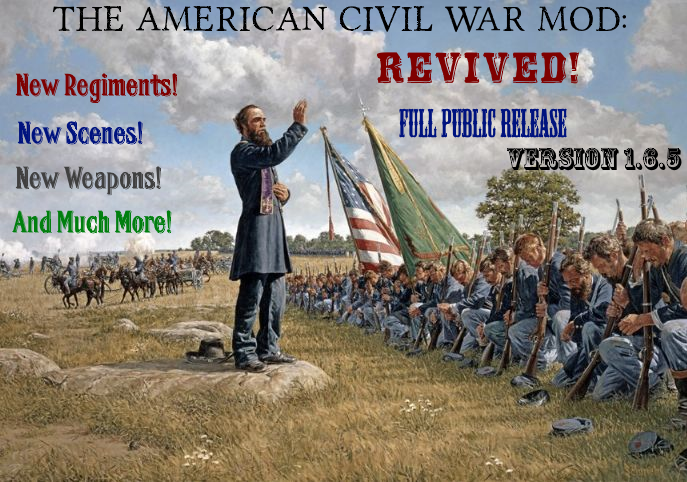
"Strike till the last armed foe expires, strike for your altars and your fires, strike for the green graves of your sires, God and your native land".
To the headquarters of all generals currently in the field:
It has become clear that this war will not be over with in a short while, as many had first expected. The call for volunteers has reached all corners of the nation and both the Union and Confederate armies have mustered numerous new regiments into active service. Many of you have been briefed already on those that will be arriving following this dispatch, however there have been several new regiments raised and we will be discussing them further below.
We will also be briefing you on some of the new terrain you will be fighting on. In particular, the towns of Sharpsburg and Fredericksburg will likely become the focus of major campaigns in the future. Some of the other small towns and villages will also be discussed, as fighting will likely occur in these locations as well. There are some key features to the terrain that will also need to be discussed further, as these will present obstacles and opportunities to your forces. We have also acquired new arms, in order to meet the demands of the numerous volunteers who have recently enlisted. Please take the opportunity to familiarize yourself and your men with these weapons.
There is quite a lot that has changed on a technical level, and at the end of this dispatch you will find a full report. Godspeed gentlemen, good luck to you and the men under your command. I expect nothing less than full victory.
Installation Instructions:
- Make sure you delete any previous versions of the mod.
- Download the winrar package called, "The American Civil War Mod Revived v1.6.5", to your desktop or another preferred destination that you can easily access.
- Open the package and extract the folder inside called, "The American Civil War Mod Revived", to your modules folder (C:\Program Files (x86)\Steam\steamapps\common\MountBlade Warband\Modules).
- Start Mount & Blade: Warband, select the mod from the drop down menu, and play!
You can join the mod's discord server here: Discord.gg
New Regiments
Union:
8th Missouri Infantry "American Zouaves"
The 8th Missouri Infantry Regiment was formed in St. Louis, Missouri, in the early summer of 1861. The regiment was a special project supported by General Nathaniel Lyon. Most of the volunteers in Missouri's early regiments were German immigrants, and Lyon supported the creation of a regiment of "native-born Americans" to demonstrate that the Union cause in Missouri had support beyond the German-American community. Ironically, the 8th Missouri ended up with a high percentage of immigrants, with many of its members being Irish-Americans who had worked on the Mississippi River docks prior to the war, giving the regiment a distinct Celtic personality. In addition to its St. Louis recruits, several of the regiment's companies were actually raised in Illinois and Minnesota, whose volunteers joined the 8th Missouri because their home state's quota for enlistments was full. The 8th Missouri wore a distinctive uniform patterned after those of the French-North African Zouave units. While most of the Zouave uniform elements were abandoned as the war progressed, the 8th Missouri apparently continued to wear their short, brightly decorated Zouave jackets throughout the war. Private William H. Bates of Company H provided a description of the regiment's Zouave uniform in a letter to his daughter:
"the zouave jacket was dark blue with trimming of red braid (blue braid could not be secured early in 1861); the shirt of coarse gray wool; the pants light blue wool (the regiment voted unanimously against the red, baggy zouave pants), and the cap of dark blue." Private Bates stated that he wore his Zouave jacket though the end of his enlistment in 1864.
The regiment's first commander was Colonel Morgan Lewis Smith, a New Yorker who had moved west to Missouri after serving as an enlisted man in the Regular Army. Under his firm hand, the 8th Missouri would become one of the finest units to serve in the Army of the Tennessee. Morgan L. Smith's brother, Giles Alexander Smith, also served in the regiment. Morgan L. Smith was later promoted to Brigadier General and Giles A. Smith to Major General. The 8th Missouri saw extensive service during the first three years of the war in the Trans-Mississippi Theater and Western Theater, and built for itself an enviable reputation on the battlefield. The regiment first fought in Missouri in the summer of 1861 against pro-Confederate guerrillas who were attacking U.S. Army supply trains, for example, in Wentzville, Missouri. That autumn, the 8th Missouri participated in the Federal occupation of Paducah, Kentucky.
In February 1862, the regiment fought its first major battle at Fort Donelson, and later that spring, it was heavily engaged in the second day's fighting at the Battle of Shiloh. After a two month long campaign, it was the first regiment to enter the strategic rail center of Corinth, Mississippi, following the Confederate evacuation in May 1862, and in late December, it took part in the Battle of Chickasaw Bayou. In January 1863, it stormed the breastworks of Fort Hindman to capture Arkansas Post. The 8th Missouri saw considerable service in the Battle of Vicksburg, where eleven men of the regiment won the Medal of Honor in one day during the assault on Stockade Redan on May 22nd, 1863. General Ulysses S. Grant's son, Frederick Dent Grant, also wrote about slipping into the Battle of Vicksburg at the age of 13 with the 8th Missouri. During the battle, Frederick rode off onto the battlefield and was shot in the leg by a Confederate sniper. Normally his wound would have called for amputation; however, possibly due to his military aspirations or his father’s rank, this did not occur. Despite a painful infection, doctors were able to save his leg. However, in his weakened state, Frederick fell victim to typhoid fever, which was common in Union camps during the war, but was able to make a full recovery.
The regiment marched on to participate in the Battle of Jackson, the Battle of Chattanooga, and the opening phases of the Atlanta Campaign. On June 25th, 1864, the three-year enlistments of most of the regiment's members expired and they returned to their homes. Those who remained on active duty were consolidated into a battalion of two companies, and as such participated in the rest of the Atlanta Campaign and Sherman's March to the Sea. In February 1865, the remaining veterans of the 8th Missouri were attached as an extra company to the 6th Missouri Infantry, and in this capacity, they took part in the Carolinas Campaign. The regiment participated in the Grand Review of the Armies in Washington D.C., before being mustered out of service in June 1865.
In the mod:
The 8th Missouri Infantry wear their distinctive Zouave uniforms of a short dark blue jacket with red trimmings, light blue trousers, and either a plain blue kepi, or a black hat. They are equipped with Springfield Model 1855, 1861, and 1863 Rifle Muskets, and only have a national color guard since there are no existing examples of the 8th Missouri's flag, nor many other flags from Missouri regiments for that matter. The American Zouaves are a capable regular infantry unit, though not as powerful as the more elite regiments. Their usage of of some of the better rifle muskets available help make them effective in combat when facing Confederate soldiers who do not always have the best weapons. The 8th Missouri is a welcome addition the Union ranks and can expected to perform well in a firefight, and if need be, with the bayonet. They can be found under the Army of the Mississippi as an upgrade from the Union Volunteers Sharpshooters.
1st Minnesota Infantry "The Lincoln Guards"
On April 14th, 1861, Minnesota's Governor Alexander Ramsey happened to be in Washington, D.C. when the first fighting of the Civil War broke out, and he went straight to the White House, offering 1,000 men to Abraham Lincoln immediately upon learning of the attack on Fort Sumter. Word of the Governor's offer spread and communities back in Minnesota quickly raised groups of volunteers in support of Ramsey. The abandoned Fort Snelling, at the confluence of the Mississippi and Minnesota rivers, was reactivated, and the men raised by the communities were sent there and mustered into the 1st Minnesota Infantry Regiment on April 29th. They were the first troops offered by any state to meet Abraham Lincoln's call for 75,000 volunteers to assist the Federal Government in dealing with the secession of the Southern states. On May 10th the volunteers were re-mustered "officially" for three years service, and from Fort Snelling they boarded river boats to go South to a rail line so they could head east.
On July 21st, 1861, near Manassas, Virginia, the regiment fought in the first major battle of the Civil War: the First Battle of Bull Run. While straddling Rickett's Battery in support, it saw heavy fighting on Henry House Hill in close proximity to the enemy. The 1st Minnesota was one of the last regiments to leave the battlefield and suffered among the highest casualties of any Union regiment, with 49 killed, 107 wounded and 34 missing. During the 1st Minnesota Infantry's initiation to combat, its honorable conduct was readily distinguishable from that of the other regiments in its brigade, as reported by Colonel William B. Franklin of the 12th U.S. Infantry, commanding First Brigade, Third Division:
"The First Minnesota Regiment moved from its position on the left of the field to the support of Ricketts' battery, and gallantly engaged the enemy at that point. It was so near the enemy's lines that friends and foes were for a time confounded. The regiment behaved exceedingly well, and finally retired from the field in good order. The other two regiments of the brigade retired in confusion, and no efforts of myself or staff were successful in rallying them. I respectfully refer you to Colonel Gorman's report for the account of his regiment's behavior and of the good conduct of his officers and men."
At the Battle of Antietam, the regiment suffered significant casualties during General John Sedgwick's ill-fated assault on the West Woods, as Union forces were routed on that part of the field. One officer from the 1st Minnesota was killed, and three wounded. 15 enlisted men were killed in action, 79 were wounded, and 24 missing, for at total of 28% of the 435 men engaged. The brigade commander noted, "The First Minnesota Regiment fired with so much coolness and accuracy that they brought down [three times one] of the enemy's flags, and finally cut the flag staff in two."
July 2nd, 1863 is the day the 1st Minnesota is most remembered for. During the second day's fighting at Gettysburg, Major General Winfield S. Hancock, commander of II Corps, could see two brigades of Confederates commanded by Brigadier General Cadmus M. Wilcox breaching the line in front of one of his batteries. He quickly rode up to the troops guarding the battery and asked Colonel William Colvill, "What unit is this? " Colonel Colvill responded, " the 1st Minnesota ". General Hancock responded, "Attack that line ". With their bayonets leveled, the Minnesotans broke the first lines of the Confederates, and the intensity of their charge impeded their advance for some time. With the regiment nearly encircled, support arrived in time for the men of the 1st Minnesota to fight their way back to security. Their selfless charge bought the Union the time needed for reinforcements to be brought up. During the charge, 215 of the 262 men who made the charge became casualties within five minutes. That included the regiment's commander, Colonel William Colvill, and all but three of his captains. The 1st Minnesota's flag lost five men carrying it, and every time it fell, another man dropped his weapon to carry it on. The 47 survivors rallied back to General Hancock under the command of their senior surviving officer, Captain Nathan S. Messick. The 82% casualty rate stands as the largest loss ever sustained by any surviving U.S. military unit in a single day's engagement in history. The actions of the 1st Minnesota saved the position and probably also the battle.
Carrying on from the heavy losses of the previous day, the remaining men of the 1st Minnesota were reinforced by detached Companies F and L. The reunited regiment was moved a bit north of the previous days fight to one of the few places where Union lines were breached during Pickett's Charge. They again had to charge into advancing Confederate troops with more losses. Captain Messick was killed and Captain W. B. Farrell mortally wounded, leaving Captain Henry C. Coates to take command. During this charge, Private Marshall Sherman of Company C captured the colors of the 28th Virginia Infantry and received the Medal of Honor for this exploit. The Confederate flag was taken back to Minnesota as a war trophy, where the State retains possession of it to this day, with the Minnesota Historical Society ensuring its proper preservation. Corporal Henry D. O'Brien was also awarded the Medal of Honor for his heroism. After being knocked out by a bullet to the head and later shot in the hand, Corporal O'Brien repeatedly picked up the fallen colors of the 1st Minnesota and carried a wounded comrade back to the Union lines.
The 1st Minnesota continued to serve in the Army of the Potomac, participating later in 1863 in the Bristoe and Mine Run Campaigns. It was mustered out of service upon completion of its enlistment on April 29th, 1864, at Fort Snelling. Enough of the regiment's veterans reenlisted to form the nucleus of the 1st Minnesota Volunteer Infantry Battalion, which returned to Virginia and served through the end of the war. Other veterans provided officers for the 1st Minnesota Heavy Artillery Regiment. Today, the 2nd Battalion, 135th Infantry Regiment, 34th Infantry Division (Minnesota Army National Guard) can trace its roots back to the historic 1st Minnesota Volunteers.
In the mod:
The 1st Minnesota Infantry come with two types of uniforms, the first of which was only worn for a short time early in the war, and the other is the more standard issue style of uniform which was worn for the rest of their service. Instead of distinguishing them by being early and late war versions of the same regiment, we decided to consider the early war soldiers as wearing their "summer" uniforms and the late war uniforms as the "standard". This is to help alleviate situations where early and late war soldiers are fighting in the same battle and the player might feel this breaks immersion if they are specifically called early and late war versions of the same unit. The regiment is equipped with Springfield Model 1861 Rifle Muskets and Springfield Model 1842 Smoothbore Muskets. The late war/standard version of the regiment will also be equipped with Sharps Rifles in addition to their muskets. The regiment will carry the actual flag of the 1st Minnesota, and since there were two versions of the flag, one will be for the regimental color guard and one for the national. The Lincoln Guards are tough soldiers and well equipped, ready to take the fight to Confederates and answer the nation's call to action. The 1st Minnesota can be found under the Army of the Mississippi as an upgrade from the Union Experienced Volunteers Reserve Infantry.
146th New York Volunteer Infantry "Garrard's Tigers"
Mr. Henry S. Armstrong received authority on August 25th, 1862, to recruit the 146th New York Volunteer Infantry Regiment in Oneida county. It was organized at Rome, with Kenner Garrard as Colonel, and there mustered into the service of the United States for three years on October 10th, 1862. Major General George B. McClellan and Colonel Gouverneur K. Warren had envisioned an entire "Zouave Brigade" a year prior. "These regiments are to be organized, armed equipped, and uniformed in the same manner as the 5th Regiment of New York Volunteers", instructed McClellan following the Battle of Antietam. Unfortunately, a few units were assigned elsewhere and the ability to issue Zouave-type uniforms wasn't feasible at the time. As chance would have it, a major event transpired that allowed for the creation of the "Garrard's Tigers" uniform. For many Federal units, their two year enlistment terms were expiring. Among them were the 5th New York Volunteers, the famous Duryee's Zouaves, however some 325 men who had joined after the regiment's formation were still required to finish out their service. It was decided that 234 veterans of the 5th New York were to be transferred to the ranks of the 146th. Thus, because of the influx of the 5th New York's veteran members, the men of the 146th New York were reissued similar zouave dress to appear a cohesive regiment. Specific details about the regiment's uniform are mentioned in the unit's history, "Campaigns of the 146th Regiment, New York State Volunteers":
"The zouave uniform consisted of large baggy trousers , blue in color, which were fastened at the knees; a fez cap, bright red in color, with red [or yellow] tassel; a long white turban which was wound around the hat, but worn only for dress parade; a red sash about ten feet long which was wound around the body and afforded a great comfort and warmth; and white cloth leggings extending almost to the knees."
The 17th New York Infantry was also transferred into the 146th New York, and in 1864, men from the 2nd, 9th, 16th, 8th, 30th, 34th, 37th and 44th New York Infantry Regiments joined the regiment as well. The regiment left the state on October 11th, 1862, for Washington D.C. and in November, joined the Army of the Potomac at Snicker's Gap, Virginia, where it was placed in Warren's Brigade, Sykes' Division, V Corps, a division chiefly composed of regulars. It marched with this command to Fredericksburg, where it fought its first battle, losing one mortally wounded and 17 missing or captured. At Chancellorsville the regiment suffered heavily on the first day of the fight and acquitted itself with honor, losing 5 enlisted men killed or mortally wounded, one officer and 13 enlisted men wounded, and two officers and 29 enlisted men missing or captured. At Gettysburg it again fought gallantly, losing seven enlisted men killed or mortally wounded, and two officers and 19 enlisted men wounded. Colonel Kenner Garrard took over command of the brigade on July 2nd when Brigadier General Stephen Weed was mortally wounded, and Lieutenant Colonel David Tuttle took command of the regiment. Colonel Garrard was promoted to brigadier general on July 25th for his conduct at Gettysburg.
The regiment participated with little loss in the subsequent Virginia campaigns, ending with that of Mine Run, being present at Rappahannock and Bristoe Stations. At the Battle of the Wilderness, the regiment was almost annihilated when many of the men were cut off by the fires that broke out during the battle. Colonel Fox in his account of this regiment says,
"The regiment encountered its severest fighting at the battle of the Wilderness, May, 1864, where it suffered a terrible loss, not only in killed and wounded, but in captured men. Colonel Jenkins and Major Curran were killed in that bloody encounter, while the total loss of the regiment was 20 killed, 67 wounded and 225 captured or missing".
At Spotsylvania Court House, the regiment lost eight enlisted men killed or mortally wounded, as well as one officer and eight men wounded. On May 12th, the regiment assaulted the salient on Laurel Hill and Captain James Grindlay of Company D was promoted to major on May 18th. At Cold Harbor, the regiment lost four enlisted men killed or mortally wounded and seven enlisted men wounded. The 146th was held in reserve at the Mine Explosion during the Siege of Petersburg and at the Weldon Railroad, lost one officer and five enlisted men killed or mortally wounded, four enlisted men wounded and 35 enlisted men captured or missing. The regiment went on to fight at Poplar Springs Church, Peeble’s Farm, Boydton Plank Road, Hatcher’s Run, and Warren’s Raid on Weldon Railroad.
In 1865, the regiment was in Winthrop's Brigade of Ayres' Division, and was prominently engaged in that command at the battles of White Oak Road, where the regiment lost 13 men killed or mortally wounded, and Five Forks, with General Winthrop being killed in the latter engagement while leading the brigade in a successful charge. The regiment lost one officer and four enlisted men killed or mortally wounded, three officers and 23 enlisted men wounded and 21 enlisted men missing or captured. Colonel Grindlay earned the Medal of Honor for being one of the first to enter the Confederate works. The losses to the regiment in the final Appomattox campaign, were 65 killed, wounded and missing. After the surrender of Robert E. Lee and his army, the regiment participated in the Grand Review and was mustered out near Washington D.C. on July 16th, 1865. Its total enrollment during service was 1,707, of whom seven officers and 126 enlisted men were killed and mortally wounded, and two officers and 187 men died of disease and other causes. One officer and 87 enlisted men died in captivity, many at the Andersonville prison camp.
In the mod:
The 146th New York Volunteer Infantry wear the distinctive light blue zouave uniform with yellow trimmings, and red fezzes with yellow tassels. They are armed with Springfield Model 1855, 1861, and 1863 Rifle Muskets, and carry the regiment's actual flag, as the existing image of it was intact enough to be usable. Garrard's Tigers are a well drilled and colorful Zouave unit, making good account of themselves in most any situation. Not only splendid in appearance but also performance, the 146th New York stands ready to face the Rebel foe with the same grit and determination as any regiment in the Union army. The regiment can be found under the Army of the Mississippi as an upgrade from the Union Experienced Volunteer Zouave.
Confederate:
3rd Mississippi Infantry "Sunflower Dispersers"
Company B of the 3rd Mississippi Infantry named themselves the "Sunflower Dispersers" after having been raised in Sunflower County. They were organized on the 9th of September, 1861, and the company was mustered into service at Camp Clark, Bay St. Louis, by First Lieutenant Charleston Hurst. Confederate regiments consisted of companies that were raised in different counties within their namesake states, and each company was allowed to uniform and equip themselves however they wanted (or as available supplies allowed). The result was a wide variety of all conceivable forms of uniform dress, colors and style that would be represented even in one regiment during the early months of the Civil War. In the case of the Sunflower Dispersers, photographic evidence shows members of this company dressed in grey battle shirts trimmed in the state regulation color of red with a sunflower symbol on the right breast of the shirt. The 3rd Mississippi was also issued the M1841 Mississippi Rifle. The 3rd Mississippi Infantry was commanded by Colonel John B. Deason and served in the Western Theater, initially assigned to the Army of Mississippi. The Sunflower Dispersers fought at Shiloh and Fort Pemberton, and participated in the sinking of the Cairo on the Yazoo River by the first successful launching of a floating land mine. The regiment went on to participate in many of the major combat actions of the Western Theater where some of the most ferocious fighting took place, including the defense of Vicksburg, the Atlanta Campaign and the disastrous battles of Franklin and Nashville.
In the battle near Kennesaw Mountain on June 27th, brought on by a Union attack, the 3rd Mississippi Regiment on the skirmish line under Major Dyer, along with Stigler's Sharpshooters, were in front of the brigade, and sustained the attack and held the Union line in check through the day. Repulsing one advance that came within sixty yards of their position, at 4:00 P.M. Featherston reported, "A brisk fire was kept up on this line during the evening, and both the battalion and 3rd Mississippi Regiment acted with great coolness, courage and determination." In general orders, Private J. W. Patterson of Company C was commended for gallantry on picket duty at Kennesaw Mountain. In the battle of Peachtree Creek on July 20th, Colonel Mellon commended the regiment, which joined in the charge of the brigade across the creek and gained a position on the summit of a slight elevation, partially protected by a rail fence. Colonel Mellon was severely wounded as this position was gained, and Captain A. F. Ramsey and Lieutenant John P. Gressett were killed as well. Lieutenant Colonel Dyer took command, and after losing many of his best men, and being exposed on both flanks, he withdrew from the attack with the brigade. The casualties were 11 killed, 71 wounded, 6 missing. They were again in battle on July 28th, and after that served in the trenches around Atlanta until the evacuation, on September 1st.
On November 6th, Stewart’s Corps, formerly known as the Army of the Mississippi, reported 12,684 men present, and an enrollment of 26,714. On the 20th of November, they crossed the Tennessee River, and after marching to Columbia to confront Schofield's Corps, and toward Spring Hill on the 29th in the attempt to cut off the Union retreat, Loring's Division joined in the assault upon the entrenched lines at Franklin on November 30th. Loring's Division, on the right of Stewart's line, toward the Harpeth River, had to cross a deep railroad cut, an abatis and a hedge of Osage orange, all the while exposed to a destructive artillery fire and without much artillery support of their own. The battle raged from four in the evening until late at night, the Confederate line pressing forward again and again with dauntless courage and meeting with terrible loss. General Featherston reported that three flags were lost by his brigade, "The color bearers of the 3rd and 22nd planted their colors on the enemy's works and were wounded and captured with their colors." The flag of Company I was adopted as that of the regiment; James A. Sconyers of this company was the color bearer and the flag of Company I continued to be that of the regiment until the Stars and Bars was chosen by the Confederacy. The flag of Company I was borne in every engagement until the battle of Franklin, when Lieutenant John Cherry of the Downing Rifles planted it on the breastworks, and in so doing fell with the flag, wounded, inside the works. Lieutenant Colonel S. M. Dyer, commanding the 3rd Mississippi, was among the wounded. Among the killed were Adjutant L.M. Long, Lieutenant J. T. Young and Lieutenant A. J. Russell. The casualties of the regiment were 13 killed, 40 wounded, 20 missing.
On December 9th, the return of Stewart's Corps was counted with 8,155 men present, 2,317 prisoners of war, and an enrollment of 21,052. On that day Featherston's Brigade had 1,208 men present with 781 men fit enough to fight. They were then before Nashville, Loring's Division occupying an entrenched line one mile long, across the Granny White pike, to support the redoubts which were partly completed on five hills. When Union General George H. Thomas attacked on December 15th, General Edward C. Walthall manned the redoubts with his division, and French's and Johnson's Divisions reinforced them. But two of the redoubts were overcome by Union forces, and they pushed down the road, compelling Walthall to abandon the line, and not a moment too soon. This made it necessary for Loring to withdraw as well and he was directed to form along the Granny White Pike, nearly at right angles to his former position, to check the anticipated rush of the Union soldiers from his and Walthall's fronts. This was successfully done by the division, and the corps retired to a position between the Granny White and Franklin pikes, when night put an end to the fighting. The next day, Stewart's Corps repulsed every attack made upon them, but finally Bate’s line, on their left, was broken, and the entire army retreated in confusion to Brentwood. The Army of the Mississippi covered the retreat across Duck River from December 18th to the 20th. At Columbia, on December 20th, a rear guard of infantry was organized under the command of General Walthall, including Featherston's Mississippians and six other brigades. The 3rd Mississippi counted a total of 75 men present, with 51 still fit for duty. They remained at Columbia confronted by a heavy force of the enemy, until the army had been on the march for 48 hours. On the march they traversed roads covered with snow and ice, numbers of the men without shoes, some without blankets and all poorly clad for the winter season. At Anthony's Hill on December 25th, and at Sugar Creek the next day, Featherston's Brigade was distinguished in checking the Union pursuit, making considerable captures of men and horses. The men of the Army of the Mississippi were again the last to cross at the Tennessee River, from December 26th to the 28th.
About the 1st of February, 1865, the remnant of Loring's Division began the movement to reinforce General Johnston in the Carolinas, Sherman having marched to Savannah. Survivors of the 3rd Mississippi, with their ranks shredded from losses, were ordered forward from Augusta, Georgia, to Newberry, South Carolina, on February 25th. In the Carolina Campaign, they participated in the battles of Kinston on March 10th, and Bentonville on March 19th, on the latter day making a courageous charge and suffering heavy losses. With it's ranks shattered, containing only a handful of it's original members, the 3rd Mississippi was consolidated with the 33rd and the 40th Mississippi Infantry Regiments and continued to fight on until the surrender of Johnston's army to General Sherman on April 26th, 1865.
In the mod:
The 3rd Mississippi Infantry are represented by Company B, the Sunflower Dispersers. They wear the distinct style of uniform that they were known to wear historically, and are armed with M1841 Mississippi Rifles and Bowie knives. The regimental colors no longer exist, so the Sunflower Dispersers will carry the Mississippi state flag. They are an excellent unit for skirmishing, their quality rifles making them effective at long distance engagements, and their skill as marksmen only adding to the deadly effect of their fire. They are not as strong in melee since they do not use bayonets, so it would be wise to make sure they are supported in whatever maneuvers you undertake. The Sunflower Dispersers can be found under the Army of Pensacola as an upgrade from the Confederate Reserve Infantry Sharpshooter.
17th Virginia Infantry "Warrenton Rifles"
The 17th Virginia Infantry was organized at Manassas Junction on June 10th, 1861. It was composed of ten companies, many of which began as pre-war volunteer militias. The core of these volunteers were four companies organized on February 18th, 1861 as a volunteer militia battalion; the Mount Vernon Guard, Alexandria Riflemen, Old Dominion Rifles, and the Alexandria Artillery. On April 2nd, the General Assembly passed an act authorizing a battalion be raised in the city of Alexandria with three companies of infantry and one of artillery. On April 4th, Captain Montgomery Dent Corse of the Old Dominion Rifles was unanimously elected to command the battalion with the rank of Major.
The oldest company, the Mount Vernon Guard, was organized on June 21st, 1842, but always observed July 4th as their anniversary. The Alexandria Riflemen were organized on March 10th, 1856, originally choosing the name "Alexandria Sharp Shooters". They quickly reconvened their meeting when some realized how the initials would look painted on the back of their knapsacks. The change of name to "Alexandria Riflemen" was unanimous. They were organized, with the Mount Vernon Guard, into a volunteer battalion under the command of Major Turner Wade Ashby, who had been a lieutenant in Captain Corse's company during the Mexican-American War. The Old Dominion Rifles were organized on December 6th, 1860, and organization was complete by January 7th, 1861, with the election of Corse as captain and Arthur Herbert as lieutenant. The Alexandria Artillery was formed in 1850 as the Mechanical Artillery, with the new name of Alexandria Artillery being adopted in 1856.
After John Brown's raid on Harpers Ferry, John Quincy Marr organized the "Warrenton Rifles" militia company, which became Company K of the 17th Virginia Infantry Regiment. In early 1861, Fauquier County voters elected Marr as a delegate to the Virginia Secession Convention. Although initially opposed to secession, and called home by a "family affliction" during the deliberations, he later signed the ordinance of secession. The Warrenton Rifles were accepted into state service at Warrenton, in Fauquier County, Virginia, on April 22nd, 1861. On Saturday, June 1st, 1861, the first land engagement of the American Civil War with fatal casualties took place; the Battle of Fairfax Court House. A company of Union cavalry on a scouting mission entered the streets of Fairfax Court House after driving back one Confederate picket and taking another prisoner. At that time, two companies of cavalry and Captain Marr's Warrenton Rifles infantry company occupied the town. The Confederate cavalry began to retreat and cut off part of the Warrenton Rifles from those who faced the Union cavalry charge. Only about 40 men from the company were in a position to combat the Union cavalrymen. Lieutenant Charles Henry Tompkins of the 2nd U.S. Cavalry Regiment led the Union force of between 50 and 86 men who separated into two groups as they rode through the village. Captain Marr challenged the riders, asking, "What cavalry is that?" These were his last words. Scattered shots were fired as the Union cavalry rode through and Captain Marr fell dead, making him the first Confederate officer killed in the American Civil War. Marr was not in the immediate presence of any of his men on a dark night so soon after he fell, no one knew where he was or what may have happened to him. His body was found later in the morning.
After Marr fell, the former and subsequent governor of Virginia, and later major general, William "Extra Billy" Smith, who had just resigned his seat in the U.S. Congress, took command in the absence of the company's leaders. Smith was actually from Warrenton and had helped raise the Warrenton Rifles. Soon thereafter Lieutenant Colonel (later Lieutenant General) Richard S. Ewell, who had just been placed in charge of Confederate forces at Fairfax Court House, came upon the company. Ewell had received a wound to the shoulder as he emerged from the village's hotel as the Union cavalry first rode through the streets, so he was bleeding as he took charge of the Warrenton Rifles in the field and redeployed 40 of them. Ewell soon went off to send for reinforcements and Smith redeployed the men again in the same general area but in a less exposed position about 100 yards forward. After the Union cavalry rode through the village, they regrouped and returned through the village streets. A volley from the redeployed men of the Warrenton Rifles turned them back. The Confederates fired additional volleys at the Union cavalry as they tried to pass through town again on their way back to their base near Falls Church, Virginia. After a third failed attempt to ride past the Confederates, the Union cavalry were forced to leave town with several wounded men, toward Flint Hill in the Oakton area of Fairfax County to the north of the city of Fairfax. Confederate casualties in the affair were one dead, four wounded, including Lieutenant Colonel Ewell, and one missing, according to their report. A later account states that only two were wounded, but five were captured. Union forces lost one killed, identified as Private Saintclair, four wounded, including Lieutenant Tompkins, and three missing, who had been taken prisoner.
Captain Marr's body arrived in Warrenton that evening. The following afternoon, a large crowd attended a ceremony in the clerk's office yard before his burial in the Warrenton Cemetery. Charles Henry Tompkins received the Medal of Honor for his actions at Fairfax Court House. His was the first action of a Union Army officer in the American Civil War for which a Medal of Honor was awarded, though not until 1893. His citation reads: "Twice charged through the enemy's lines and, taking a carbine from an enlisted man, shot the enemy's captain." No other account states that Tompkins personally shot Captain Marr.
During the fighting at First Manassas, the 17th was in a brigade under James Longstreet, and Captain B. H. Shackelford of the Warrenton Rifles, was shot in the ankle by a canister ball, but he bandaged the wound and remained upon the field until the end of the battle. The regiment was afterwards assigned to General Ewell's, A.P. Hill's, Kemper's, and Corse's Brigade. The 17th fought with the Army of Northern Virginia from Williamsburg to Fredericksburg, then participated in Longstreet's Suffolk Expedition. During the Gettysburg Campaign it was on detached duty at Gordonsville and later served in Tennessee and North Carolina. Returning to Virginia it fought at Drewry's Bluff and Cold Harbor, saw action in the Petersburg trenches, and ended the war at Appomattox. This regiment totaled 600 men in April, 1862, lost 17 killed and 47 wounded at Williamsburg, had 18 killed and 41 wounded at Seven Pines, and had 17 killed, 23 wounded, and 73 missing at Frayser's Farm. It reported 48 casualties at Second Manassas, 13 at South Mountain, and of the 55 engaged at Sharpsburg, about 75% percent were disabled. At Drewry's Bluff, 7 were killed and 23 wounded. Many were captured at Sayler's Creek, and 2 officers and 46 men surrendered on April 9th, 1865.
In the mod:
The Warrenton Rifles wear grey uniforms with black facings and a black stripe down the side of the pants, as well as a shako with the intials W.R. on the front, resembling the uniforms worn during the War of 1812. Like many of the other more elaborate uniforms worn during the war, these were likely only worn for a short time in first one or two years. They carry the Virginia state flag as their regimental colors, and the men are armed with Springfield Model 1855 and Enfield Pattern 1853 Rifle Muskets, using knives as their melee weapons. The Warrenton Rifles are quality marksmen and are good for picking off the enemy at long distances, or skirmishing ahead of your main battle line. In closed ranks, their volleys can be devastating, especially at close range, but like other light infantry equipped with knives, they remain vulnerable to cavalry and fighting large groups of enemies in melee. The Warrenton Rifles can be found under the Army of Northern Virginia as an upgrade from the Confederate Regulars Skirmisher.
8th Alabama Infantry "Emerald Guards"
The 8th Alabama Infantry formed in Mobile, Alabama and was composed of mostly Irish-born men. At the start of the war, the 8th Alabama, nicknamed the Emerald Guard, wore berdan green uniforms. Their flag was a First National with George Washington in the center. The opposite side of the flag was green, and in the center was an Irish harp surrounded by a wreath of shamrocks. Above and below this emblem, two Gaelic slogans were displayed. The slogans were, "Erin Go Bragh!" (Ireland Forever!) and "Faugh A Ballagh!" (Clear the Way!).
The Emerald Guard was the first Alabama regiment to enlist for the duration of the war. The 8th was organized by the appointment of its field officers by the war department, and was posted at Yorktown, Virginia during the first eleven months of its service. A detachment of the 8th was engaged in a skirmish near Winn's Mill, and then, placed in General Pryor's brigade, the regiment fell back with the army until they were overcome at Williamsburg. The 8th Alabama won its first laurels on that contested field, losing approximately 100 men. At Seven Pines it was again under fire, and received heavy losses, with 32 killed, 80 wounded, and 32 missing.
Now in the brigade of General Wilcox, with the 9th, 10th, 11th, and 14th Alabama Regiments, the 8th took part in a desperate assault with General Longstreet's Division on the enemy's position at Gaines' Mill, and emerged victoriously from the fierce battle with the loss of half of the 350 men it had engaged. Three days later, the regiment was in the line of assault at Frazier's Farm, where the Emerald Guard met Meagher's Irish Brigade, and of 180 effective men, only 90 were at regimental muster the next morning. Its ranks soon began to fill up once more, and the 8th marched with the Confederate army towards the Potomac River. At the Second Battle of Manassas, the 8th Alabama lost 60 men, but was held in reserve. The regiment took part in the capture of Harper's Ferry, then crossed the river and fought fearlessly at Sharpsburg, where the 8th lost 67 men. The Emerald Guards wintered at Rappahannock, and at Salem Church, Wilcox's Alabama Brigade, of which the 8th was a part, bore the brunt of the Union assault, and drove them back in confusion, capturing 1,500 prisoners; the 8th lost 58 men.
General Robert E. Lee led the 8th Alabama and the rest of the Army of Northern Virginia into Maryland, and the 8th's colors were flouted in the face of death at Gettysburg, where 260 of 420 men of the regiment who were engaged, were killed in action. The Army of Northern Virginia crossed the Potomac again, and wintered in the vicinity of Orange Court House. The 8th Alabama was engaged at the Battle of the Wilderness, Spotsylvania Court House, and Cold Harbor. It formed a portion of the troops engaged at the Weldon Railroad, on June 22nd and the 23rd, 1864. The 8th was distinguished at the capture of the Crater on July 30th, and was also warmly engaged in the battle on the plank road below Petersburg. The regiment surrendered with 16 officers and 153 men at Appomattox, and the regimental battle flag, by the end of the war, had two pennants of red and white with tassels and battle honors on them. These were taken home by the regiment's color sergeant, and the flag was ripped up and given to the men, rather than being surrendered.
In the mod:
The 8th Alabama Infantry wear green frock coats with light blue or grey trousers, and a green kepi with the initials "E.G." on the front. They are armed primarily with Pattern 1853 Enfield Rifle Muskets, but also some captured Springfield Model 1855 and 1861 Rifle Muskets, as well as some M1841 Mississippi Rifles. The regiment carries a faithful recreation of its historic flag, with the two different sides as described above. The Emerald Guards are one of the only Confederate regiment's with green uniforms, other than the Clinch Rifles, which we have revealed previously. They are a formidable line infantry regiment, and will stand strong in close ranks against most opponents. They are one of the better armed regiments available to the Confederacy and will exceed the proficiency of your average soldiers. The Emerald Guards can be found under the Army of Pensacola as an upgrade from the Confederate Reserve Infantry Marksman.
Bonus Regiment!
5th Arkansas Infantry "The Fighting Fifth"
After Arkansas seceded from the Union on May 6th, 1861, a number of military units began to form. Companies organized in communities around the state and moved to a number of centralized locations to create regiments. Ten companies from across Arkansas formed the 5th Arkansas Infantry, also called the Fighting Fifth, and was organized for one year in state service at Gainesville in Greene County, Arkansas, on June 28th, 1861, and was transferred to Confederate service on July 27th, 1861, at Pocahontas, Arkansas. The first colonel of the regiment was David Cross, a planter from Poinsett County. It was reorganized for the war at Corinth, Mississippi, on May 12th, 1862. The regiment was armed with weapons which the state confiscated when the Federal Arsenal at Little Rock was seized by Arkansas State Militia troops in February 1861. Disposition of the weapons found in the Arsenal is somewhat sketchy, but from various records it can be surmised that the 5th, 6th, 7th, and 8th Arkansas Infantry Regiments, mustered in June, 1861, were issued Springfield Model 1816 and Model 1822 .69 caliber flintlock muskets. They retained these weapons until April, 1862 when they were able to exchange them for better weapons scavenged from the battlefield at Shiloh.
In October, the regiment moved to the east bank of the Mississippi River, where it would serve for the remainder of the war. Joining a brigade under the command of Brigadier General Sterling Alexander Martin Wood, the 5th served alongside the 7th and 8th Arkansas Infantry regiments, the 9th Arkansas Infantry Battalion, and other units from Mississippi, Georgia, Alabama, and Tennessee. The brigade was part of the Central Army of Kentucky under the command of Major General William Hardee. After the losses of Fort Henry and Fort Donelson in February 1862, Confederate General Albert Sidney Johnston withdrew his forces into western Tennessee, northern Mississippi, and Alabama to reorganize, and then retreated through western Tennessee to northern Mississippi. The 5th Arkansas joined a new brigade under the command of Brigadier General Thomas C. Hindman, which also included the 2nd, 6th, and 7th Arkansas Infantry Regiments and the 3rd Confederate Regiment. The 5th Arkansas did not participate with the brigade at the Battle of Shiloh, as it was on picket duty along the Memphis and Charleston Railroad, about 7 miles north and west of Corinth, Mississippi. Colonel David C. Cross had pleaded with General Albert Sidney Johnston to permit the 5th Arkansas to take part in the movement towards Shiloh, but Johnston replied that, "the post of duty was the post of honor," and kept the 5th Arkansas on picket duty. After the battle, the Confederate amy reorganized, and Cross was not reelected as colonel of the regiment. He was replaced by Lucius P. Featherston, formerly the inspecting and muster officer for the regiment. John Edward Murray, appointed as the lieutenant colonel of the regiment before the end of 1861, continued to serve in that position. The original lieutenant colonel was dismissed from service after a general court-martial.
In early May 1862, Confederate forces underwent an army-wide reorganization due to the passage of the Conscription Act by the Confederate Congress in April 1862. All of the 12 month regiments had to re-muster and enlist for two additional years or the duration of the war; a new election of officers was ordered, and men who were exempted from service by age or other reasons under the Conscription Act were allowed to take a discharge and go home. Officers who did not choose to stand for re-election were also offered a discharge. The reorganization was accomplished among all the Arkansas regiments in and around Corinth, Mississippi, following the Battle of Shiloh. When Corinth was evacuated on the approach of Union Generals Halleck and Grant in May 1862, the regiment fell back with the Confederate army to Tupelo Mississippi, where it was reorganized. Captain Lucius Featherston was elected colonel, John E. Murray, Lieutenant Colonel, and Captain Peter Green, major; J. J. Winston was appointed adjutant.
The 5th Arkansas saw action for the first time at the Battle of Perryville in Kentucky on October 8th, 1862, losing four men killed. With the promotion of Thomas Hindman to the rank of major general, General St. John Liddell took command of the brigade and led it in the Kentucky Campaign. The regiment was organized with 722 officers and men and the next battle in which the regiment participated was in Murfreesboro, Tennessee, from December 31st 1862 – January 2nd, 1863, where it lost 42% of the 336 men that were engaged, with 12 men killed, 135 wounded, and one man missing. The 5th next saw action in the Tullahoma Campaign, where the regiment lost 8 killed and 14 wounded at the Battle of Liberty Gap. In the summer of 1863, the 5th Arkansas was consolidated with the 13th Arkansas. At the Battle of Chickamauga in September, the regiment lost 38 men killed, 131 wounded, and 33 missing. Included in the dead was Featherston, who was killed in the first day of the battle. He was succeeded in command by Murray, who was promoted to colonel. Participating in the Chattanooga Campaign, the regiment had 21 men disabled at the Battle of Ringgold Gap.
The regiment next helped defend Atlanta, Georgia, participating in the Battles of Resaca, Pickett’s Mill, New Hope Church, and others. Colonel Murray was killed at the Battle of Atlanta on July 22nd, and Lieutenant Colonel Peter Green took command of the regiment until the end of the war. The regiment lost 17 killed in the battle. Part of the regiment was captured at the Battle of Jonesboro on September 1st, but the soldiers were soon exchanged. The regiment and the rest of Govan's Brigade participated in General John Bell Hood's disastrous Franklin-Nashville Campaign. Due to the appalling losses suffered by Govan's Brigade during the Atlanta Campaign, the 1st/15th, 5th/13th and 2nd/24th Arkansas Regiments were consolidated into one regiment, which was commanded by Colonel Peter Green of the 5th/13th Arkansas (specifically of the 5th). The other officers of the consolidated regiment were Major Alexander T. Meek, of the 2nd/24th Arkansas, Captain Mordecai P. Garrett and Sergeant Major Thomas Benton Moncrief of the 15th Arkansas. The consolidated regiment fought under the colors of the consolidated 5th/13th Arkansas Regiment, because this was one of the only colors not captured when Govan's Brigade was overrun at the Battle of Jonesboro. The flag of the combined 5th/13th Arkansas was issued in March 1864 and was captured by Benjamin Newman of the 88th Illinois Infantry at the Battle of Franklin. The consolidated regiment numbered just 300 rifles and sustained 66% casualties during the Battle of Franklin.
Green took command of the brigade when General Daniel Govan was wounded, and Lieutenant Colonel E. A. Howell took command of the regiment. The consolidated 6th and 7th Arkansas Infantry regiments were added to the unit on March 15th. After the Battle of Bentonville in March 1865, the regiment underwent one final consolidation. The remnants of ten depleted Arkansas regiments, along with one mostly Arkansas regiment, in the Army of Tennessee were consolidated into a single regiment at Smithfield, North Carolina, on April 9th, 1865. The 1st Arkansas, was lumped together with the 2nd, 5th, 6th, 7th, 8th, 15th, 19th and 24th Arkansas Infantry Regiments and the 3rd Confederate Infantry Regiment as the 1st Arkansas Consolidated Infantry. The 5th Arkansas made up one company in this new regiment. On April 26th, 1865, the 1st Arkansas Consolidated Infantry Regiment was present with the Army of Tennessee when it surrendered in Greensboro, North Carolina. A little over 100 men of the 5th Arkansas were paroled.
In the mod:
The 5th Arkansas Infantry wear primarily the standard issue grey, tan and butternut uniforms with a variety of kepis and hats, but some will also wear a unique Arkansas Militia uniform. There will also be soldiers among them who will be wearing blue coats, captured from Union soldiers and Federal arsenals. The 5th are armed primarily with Springfield Model 1816 Flintlock Muskets and Springfield Model 1822 Smoothbore Muskets with a percussion cap conversion. They will also be armed with Springfield Model 1855 and Springfield Model 1861 Rifle Muskets, scavenged from the battlefield. The regiment's flag was a simple enough design that I was able to make one from resources we already had available, which was a Hardee flag with "5th Ark." written inside the white circle. The Fighting Fifth are a poorly equipped unit, but are skilled shooters, and though they use knives in melee, which leaves them vulnerable to cavalry, they are good at fighting against infantry in close quarters. The regiment is best used in close range firefights, where their inaccurate smoothbore muskets can be used to their best effect, and they are also supported by cavalry, or infantry equipped with bayonets, that can handle any sudden rush of the enemy. The 5th Arkansas can be found under the Army of Tennessee as an upgrade from the Confederate Volunteers Sharpshooter.
New Scenes
We are proud to announce that we have begun work on overhauling many of the scenes in the mod, which means you will begin to see the old castle and city walls, as well as the out of place or low quality village scenes begin to be phased out and entirely replaced by new scenes made from scratch, and we have plans to make faithful representations of many of the iconic battles of the Civil War. This is still very much a work in progress but already many of the village scenes have been greatly improved. We are also working on replacing all the buildings, and Matsuri5 has already made a rather ample set of buildings for many different locations and situations. A small taste of what is to come of this can be seen in the complete replacement of Sharpsburg...
The map for this location has been based upon the Miller's Cornfield sector of the Antietam battlefield and the Dunker Church is actually a custom made building, created by Matsuri5 to be a very faithful replica of the real structure. And yes, you can go inside of it.
The Mumma and Miller farm houses are not exact replicas of their real life counterparts, but are still authentic representations, and may still be improved upon in the future. There is also a new barn next to the Mumma Farm that is much more in line with the architecture of the time period. The map is very large and leaves a lot of room for maneuver. The cornfield is also a lot of fun to fight in, and let's just say combat in there can get a bit... frisky. The defending AI tends to form a strong point at the Miller farm house, while the majority of their forces are formed into a line behind the cornfield. Reinforcements will arrive for the defenders from the road on the right side of the North Woods, so attacking either flank will present its own challenges to the attacker. You may also notice that we have begun to introduce new fences into the mod as well, and as you will see later on, there are several different kinds of them and they are very impressive, adding a wonderful level of detail and authenticity to the battlefields.
Since this scene is replacing a castle scene, the "castle hall" (referred to as the garrison headquarters in the mod) is inside the Miller farm house, so when the player visits peacefully and walks around, they will spawn near to the farm house and will notice soldier's guarding it.
To our great joy, we are proud to say that when you go inside, you will be greeted by a custom interior that suits to the farm house.
And just to give you an idea of what combat looks like on the new Sharpsburg map...
The other scene that has gotten an overhaul is the siege scene for the city of Fredericksburg. I have made a new scene from scratch that depicts the assault on Marye's Heights.
Finding an accurate map that shows all the terrain features during the time of the battle, such as fence lines and the locations of buildings, proved difficult. I had to find several different maps and compare them to each other as well as a present day map to piece together an accurate image of the battlefield as it was then, to the best of my knowledge. The buildings themselves on this map are placeholders and will be phased out as time goes on.
Here are a few more images of the map in action:
The defenders have a strong position behind the stone wall on the heights outside of the town, and the open fields before it present a deadly obstacle to the attacking force. However there is opportunity to flank around the side along the Hanover Road, since there are a group of buildings and some fence lines, and when you can get around it, the elevation of the ground obscures your troop's movement from the center of the firing line on the stone wall. There will be detachment of soldier's guarding this flank, but they can be overcome. The real challenge will be successfully conducting the flanking attack, since the attacking soldiers will have little cover once they pierce the line and are on top of the heights. The defender's entire line will focus on them and the attackers will be silhouetted against the sky when they are on top of the hill. Having some units in front of the wall can help divert some of the defender's attention, but this will mean there will be less force behind the flank attack. It is not an easy map for the attackers, a real challenge for sure.
Villages are starting to be overhauled into more open farmland style scenes, and the battles on them play out much better than how it is sometimes on the old, sometimes poorly made, scenes. Some examples are as follows:
New Props
Something else we have been working on that we are proud to reveal is the introduction of some new props that will help add to the immersion, as it begins to become more prevalent throughout the mod.
So firstly, we'll have a look at some of the new wagons, as well as the new ammunition crates.
The crates and the wagons will appear in more locations as time goes on, especially around siege scenes or within forts and camps. The inscriptions on them are based upon actual examples of ammunition crates from the war, and have the correct calibers for Union and Confederate arms, as well as the names of the arsenals they came from and the amount of cartridges.
You will also find something more grisly in Washington, something soldiers in the Civil War feared more than being killed on the battlefield...
The field hospital.
Field hospitals were initially in the open air, with tent hospitals that could hold only six patients first being used in 1862; after many major battles the injured had to receive their care in the open. As the war progressed, nurses were enlisted, generally two per regiment. This is the first and only field hospital in the mod as of right now, but more will appear in the future, and will include an expansion into seized homes being used as hospitals as well as military general hospitals.
One of the darker images from the war that has become infamous with the conflict are those showing the piles of amputated limbs outside the hospitals.
The lack of medical knowledge during this time period, as well as shortages in supplies, would often mean that soldiers who had been wounded in a limb or extremity would usually have to have the afflicted part amputated in an attempt to stop the spread of gangrene and other infections. Contrary to popular belief, few soldiers experienced amputation without any anesthetic. The use of ether as general anesthesia started in 1846 and the use of chloroform in 1847. A post-war review by the U.S. Army Medical Department found that over 99.6% of surgeries performed by their staff were conducted under some form of general anesthesia. The most popular anesthetic agent was chloroform, accounting for more than 70% of all surgeries in the North according to a study in the Medical and Surgical History of the War of the Rebellion. Ether was more commonly used behind the lines because it required a heavier dosage, took longer to induce insensibility, and was highly flammable. In some cases, a blend of ether and chloroform was used to sedate patients. When properly done, the patient would feel no pain during their surgery, but there was no structured system like the modern phases of anesthesia for gauging the proper dosage and depth of a patient's amnesia, analgesia, and muscle relaxation. In some cases, patients felt no pain, but did not experience amnesia. Stonewall Jackson, for example, recalled the sound of the saw cutting through the bone of his arm, but recalled feeling no pain.
The surgeons would operate on one patient after another, often without taking breaks or cleaning their hands or instruments. After the Battle of Gettysburg, for example, Union surgeons worked around the clock for seven days, performing amputations. There were often so many wounded and not enough doctors, that doctors were forced to spend only a little time with each patient. At the Battle of Fredericksburg, the Union had only 40 surgeons to tend to 7,000 wounded men. It took 24 hours for a wounded soldier who had been brought to a hospital to receive his first examination by a surgeon. As a result, the doctors became proficient at quick care, with some surgeons spending as little as ten minutes on amputating a limb. This would result in many infections that caused the deaths of soldiers who might otherwise have lived if the surgeons had known what they were doing was causing these infections. Surgeons would use sponges to wipe down their instruments that they only rinsed in water, and these practices caused bacteria to spread from patient to patient, from all surgical surfaces, and from the environment.
One of the most important props that has been added to the mod are the new fences. This is because the fences are not only on maps as a simple prop, but actually act as functional cover. The fence railings will stop bullets, and bullets can also pass in between the rails. The types of fences are as follows:
Split Rail Fence
The split rail fence provides the least amount of cover, but it is better than nothing. Bullets that strike any of the railings or posts will be stopped, but the empty spaces are large and bullets will easily pass through them.
Snake Rail Fence
The snake rail fence provides more cover than the split rail fence, but does not provide full coverage, as bullets can still pass between the fence rails.
Stone Wall with Stake and Rider
The stone wall provides the most protection from incoming projectiles, and the rail above it can provide a level of protection to the head. However, the walls still leave the head and upper body exposed and this is it's only vulnerability.
New Weapons
Springfield Model 1835 Flintlock Musket
The Springfield Model 1835 is sometimes considered to be its own model number, but is often considered to simply be a continuation of the Model 1816 Musket. The barrel was slightly longer than the Model 1816 and the total weight of the Model 1835 was slightly higher, but otherwise the Model 1835 was very similar to the Model 1816. Even though the final product was very similar, significantly different manufacturing techniques were used in the creation of the Model 1835, and a great deal of emphasis was placed on parts interchangeability. This paved the way for the Springfield Model 1842 which was the first musket to be constructed of all interchangeable parts.
Springfield Model 1835 Percussion Conversion
Most 1835 muskets had their flintlocks replaced with a percussion lock during the 1840's and 1850's. Some of the 1835 muskets also had their barrels rifled during this same period, if the barrel was deemed to be thick enough to be structurally sound after rifling. The model 1835 was used by both the Union and the Confederacy during the American Civil War, and it was also used in the Mexican–American War.
Belgian Liege 1842 Rifle Musket
A straight copy of the standard French infantry musket, this musket was imported in large quantities during the Civil War as both parties in the conflict were desperate for small arms. It was issued to, and disliked by thousands of Union infantrymen, as it was known to be inaccurate and unreliable. There is no record of any Confederate contracts to import the musket and usage by them was limited to capture or battlefield pick-ups.
Sharps Rifle with Telescopic Sight
The first successful attempt to combine telescopic technology with a rifle is attributed to Morgan James of Utica, New York, during the 1830's. In 1855, William Malcolm of Syracuse, New York, began production of a new model of sight which utilized achromatic lenses and also incorporated windage and elevation adjustments, which were also to become standard features of rifle optics from that point on. His model remains the ancestor of the modern rifle scope. By the time of the American Civil War, a range of telescopic sights were available, such as the Davidson, Parker Hale, those produced by L.M. Amidon, as well as Malcolm’s models. Union snipers generally favored the breech-loading Sharps Rifle, whilst their Confederate adversaries preferred the powerful yet rare Whitworth Rifle.
Springfield Model 1822 Smoothbore Musket (New mesh and texture)
Springfield Model 1816 Flintlock Musket (Re-texture)
Bonus Goodies
United States Marine Corps Uniforms and Flag
Private
Sergeant
First Sergeant
The uniforms and flag of the U.S. Marines will be available in stores for the player to equip for themselves and companions. Although the uniforms, the kepi, and the flag all turned out looking very good, historically the U.S. Marines did not see action in many land engagements. Their numbers were very small as well, having only about 5,000 men. As more and more states seceded from the Union, about a third of the Corps' officers left the United States to join the Confederacy and form the Confederate States Marine Corps, which ultimately played little part in the war. There was a battalion of U.S. Marine recruits formed for the First Battle of Bull Run, but they performed poorly, retreating with the rest of the Union forces. The Marines participated in a few amphibious assaults and small battles along the coast, but we feel this is not enough to justify having the Marines be their own unit in the mod, which would result in seeing Marines fighting inland and in a variety of locations all over the continent that they were never anywhere near in real life. Instead we decided to simply include the uniforms, the kepi, and the flag for the players to have fun with on their own, as a kind of novelty.
In addition to the variety of new flag textures I added for the cavalry and mounted infantry, Matsuri5 reshaped the mesh to be smaller and more proportional to how it would look in real life. It is a big improvement over the old flag and makes for a beautiful sight in game.
New Uniform Variants
This uniform for the Union was based on an existing Confederate uniform with the standard Union uniform texture applied over it. This gives the Union soldiers a short tunic and socks visible above their shoes.
These two uniforms are simple variants for the uniforms available to Confederate infantry, based upon this depiction of a Confederate Regular Infantryman:
Berdan's Sharpshooters will now have their own color guards that will wear first sergeant's uniforms, and the regiment will also have its own officers that will wear green colored uniforms.
One feature requested by the community was the creation of a mercenary group that will fight with long guns, so Matsuri5 created a number of variations for a generic armed civilian outfit, a few examples of which can be seen in the image above, and I replaced the "Watchmen" with "Private Militia". This is not something based on any specific historical occurrence, but is still something reasonably authentic, as there were a number of accounts of private armies being raised for various purposes during this time period. They are a bit basic right now, without a well planned upgrade tree, but this is only their first appearance in the mod and will continue to be tinkered with as time goes on.
Full Changelog
- New Union regiments. 45th New York Volunteer Infantry "5th German Rifles", 20th New York Volunteer Infantry "Turner Rifles", 42nd Pennsylvania Volunteer Infantry "Bucktails", 10th Indiana Volunteer Infantry, 146th New York Volunteer Infantry "Garrard's Tigers", 11th Indiana Volunteer Infantry "Wallace's Zouaves", 33rd New Jersey Volunteer Infantry, 19th Illinois Zouaves, 8th Missouri Infantry "American Zouaves", United States Colored Troops Infantry, 1st Minnesota Infantry "The Lincoln Guards", 53rd Ohio Infantry.
- New Confederate regiments. 5th Georgia Volunteer Infantry "Clinch Rifles", 11th Mississippi Infantry "University Greys", 31st Alabama Infantry, 17th Virginia Infantry "Warrenton Rifles", 1st South Carolina Rifle Regiment "Orr's Rifles", 8th Alabama Infantry "Emerald Guards", 3rd Mississippi Infantry "Sunflower Dispersers", 10th Tennessee Infantry "Bloody Tinth", 20th Tennessee Volunteer Infantry, Hampton's Legion "Washington Light Infantry", 5th Arkansas Infantry "The Fighting Fifth",
Hagood's 1st South Carolina Infantry "Edisto Rifles", 26th North Carolina Infantry. - Sharpsburg scene entirely replaced with a model of the Miller Cornfield sector of the Antietam battlefield.
- Siege scene at Fredericksburg entirely replaced with a model based on the assault on Marye's Heights.
- Richmond and Tallahassee town center scenes replaced with a farm town scene.
- Washington D.C. and Richmond siege battle scenes improved. Removed invalid objects, entry points moved, trenches improved, cannon props added, and various scene props removed, added, and moved.
- Multiple village scenes have been tweaked, overhauled, or replaced entirely.
- New fences have begun to be implemented to scenes.
- New ammunition crates and covered wagon props.
- New weapons. Springfield Model 1835 Flintlock Musket, Springfield Model 1835 Percussion Conversion, Belgian Liege Model 1842 Rifle Musket, Sharps Rifle Scoped, Fayetteville Rifle Musket Type III with Sword Bayonet.
- New model and texture for the Springfield Model 1822.
- Texture for Springfield Model 1855 edited to have a more faded brown color, rather than the bright, almost orange color it had before.
- Fixed muskets with bayonets that had broken melee mode functions.
- Fixed the problem with carbines and rifles that would prevent the AI from switching to a secondary melee weapon.
- Shaders for revolvers fixed. This resolves the strange glowing effect they had before.
- Entry point at Santee kidnappers hideout has been moved to a much better spot. Before it was inside a cave, far away from the bandit's spawn point.
- Player entry point at the St. Louis kidnappers hideout scene moved to a better spot.
- Boston tournament scene edited. Removed most buildings so it is more of an enclosed, open area.
- BRF's split into multiple separate files, each no more than about 50-60 meshes each. This will greatly increase performance and may result in less frequent or no crashes.
- Removed duplicate meshes inside BRF's, which was also likely dragging down performance.
- Entries within BRF's renamed to be more organized.
- New Infantry branches, "Union Volunteer Zouave Infantry", and "Union Volunteer Reserve Infantry", made to accommodate the new Union regiments.
- New "Private Militia" mercenary unit with a wide variety of new outfits.
- New bandit parties of Bushwhackers, Jayhawkers, and generic outlaws.
- Problem with gunfire sound effects cutting out has been mostly fixed, but still needs work. Some musket sounds were too long, and needed to be shortened.
- Musket gunfire sound effects made slightly louder.
- Tin cups added to soldier's accouterment.
- Crossbow skill renamed to long arms, and firearms skill renamed to revolvers.
- Default names of groups in battle changed. Archers changed to skirmishers, Infantry changed to First Platoon, unnamed group 4 changed to mounted infantry, and unnamed groups 5 - 9 changed to Second Platoon - Sixth Platoon.
- Cartridge boxes renamed. Instead of infantry/cavalry/pistol cartridges, it is now rifle/carbine/revolver cartridges.
- Ammo count for rifle cartridges changed to be 20 each, so soldiers carry the correct amount of ammunition used historically, which is 40 rounds.
- Ammo count for carbine cartridges changed to 30, which is representative of the 40 rounds carried by a cavalry trooper in his cartridge box, as well as an extra 20 rounds which was typically stuffed into saddle bags and pockets. This also helps keep those soldiers armed with carbines and repeaters supplied with ammunition for longer, since the rapid rate of fire of breech loading and repeating weapons will burn through ammunition quickly.
- First Sergeant uniforms added to Berdan's Sharpshooters, along with their own regimental flag and color guards.
- United States Marine Corps Uniforms, kepis, and flags added to markets.
- New meshes and variations for cavalry banners.
- New variations for some Union uniforms with visible sheathed bayonets.
- New Union and Confederate uniform variants.
- Hardee hats made to be slightly taller, to look more close to reality.
- Hair added to zouave fezzes.
- New Confederate butternut hat.
- Buttons added the uniforms of the Keystone Zouaves and the Louisiana Zouaves.
- Washington D.C. renamed to Washington. The D.C. (District of Columbia) wasn't added to the name of the city until 1871.
- Two battle music tracks have been replaced, and one victory track.
- Medieval items replaced at market scenes in Charleston town center.
- Info pages edited to be about the Civil War, instead of about Calradia.
- All loading screen hints changed to quotes or facts from the Civil War, or tips for playing the mod.
- New Confederate infantry flag of the Palmetto Guard.
- Merrill carbine added to the inventories of veteran and battle hardened Confederate mounted infantry, as well as 1st Virginia Cavalry, Hampton's Legion Cavalry, and Sim's 9th Texas Cavalry.
- Melee stats increased for Stonewall Brigade, Hood's Texans, Wheat's Tiger Rifles, the Iron Brigade, and the Garibaldi Guard.
- Ranged stats slightly increased for Union and Confederate skirmishers, marksmen, and sharpshooters.
- Staffs removed from markets. They were taking up too much space that could have been used by proper weapons.
- Requesting peace dialogue option fixed, removed the extra "the".
Known Issues
- Raiding caravans can still cause crashes, for reasons unknown.
- Tournaments are not finished yet, but will be worked on going forward.
- Earning money can be difficult, but there are ways to make enough through the typical methods of selling valuable items, looting villages, owning property, increasing the trade skill, etc. If need be, the player can of course just use cheat mode to give themselves enough money to play as they wish.
- The AI will sometimes recruit abnormal amounts of flag bearers, and this can be a little annoying.
- The Union and Confederate armies will sometimes make peace, but you can essentially consider it a temporary cease fire, because they always go to war again eventually anyway. And you can always just continue hostilities yourself regardless.
- Revolvers don't appear in markets. Still working this one out. Can still be looted though, and you can also take a few different one's from your companions.
A few of the villages are in exactly same position on the world map. A solution for this will be made available soon.(Fixed! The mod has been re-uploaded with this included).
A big thank you to Matsuri5 for his outstanding work on so much of the amazing new stuff that has come to the mod, as well as his expertise and support in this project. Without him, much of this wouldn't be possible and truly he deserves a great deal of praise for his work. I'd also like to thank Fallouthobo and JacktheRipper for helping with testing the mod, as well as Эльдар for helping advise me in fixing some of the troublesome issues the mod was having. Thank you all for playing this mod and following along with our development, and we look forward to bringing many more good things in the future. We hope you have fun with this, our latest update for the American Civil War Mod: Revived! And as always, don't hesitate to ask for help if you have any trouble. Please report anything you think is out of place or could use improvement, and of course if there are any bugs. Your ideas, suggestions, tips and tricks are always welcome.

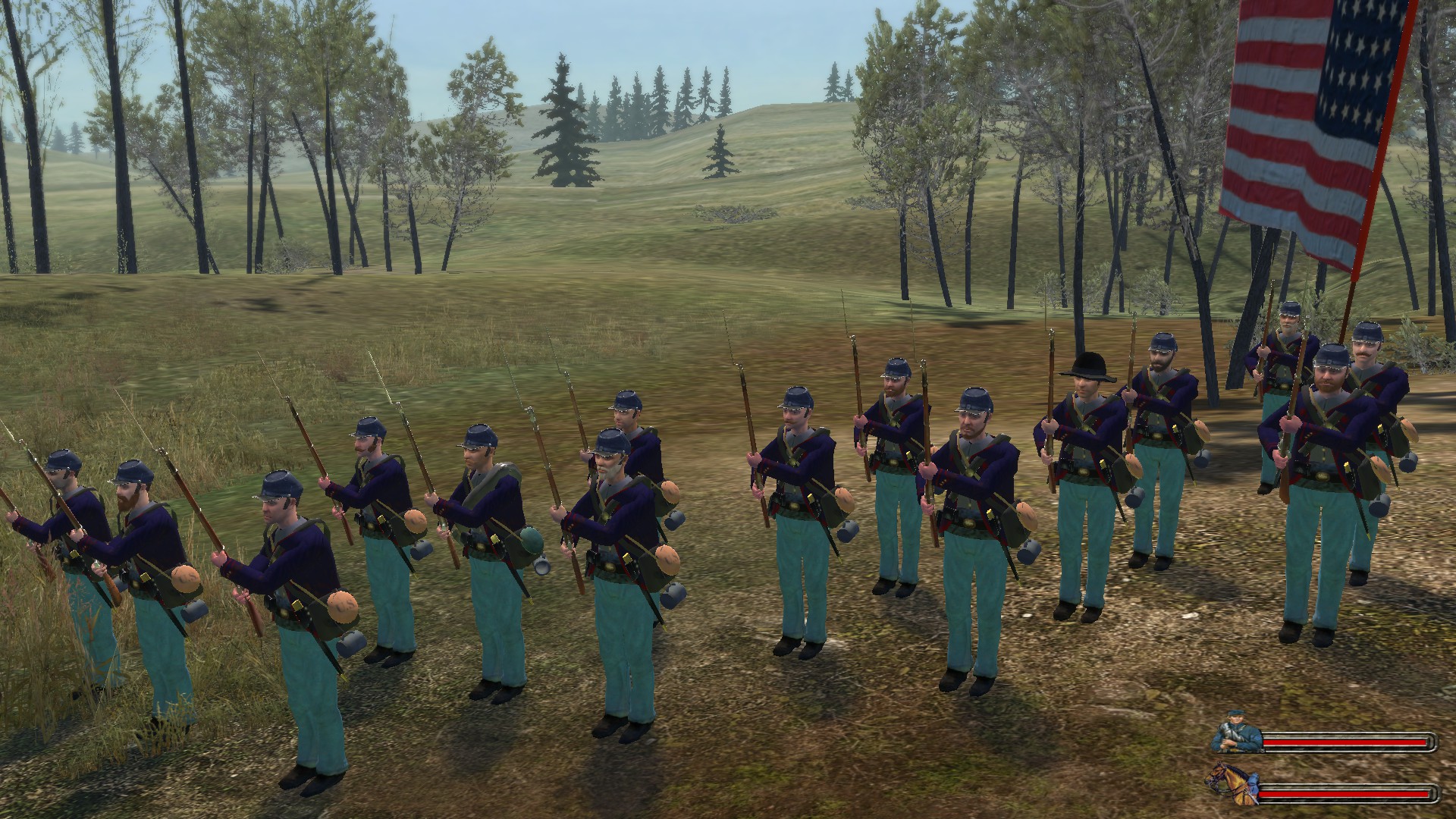
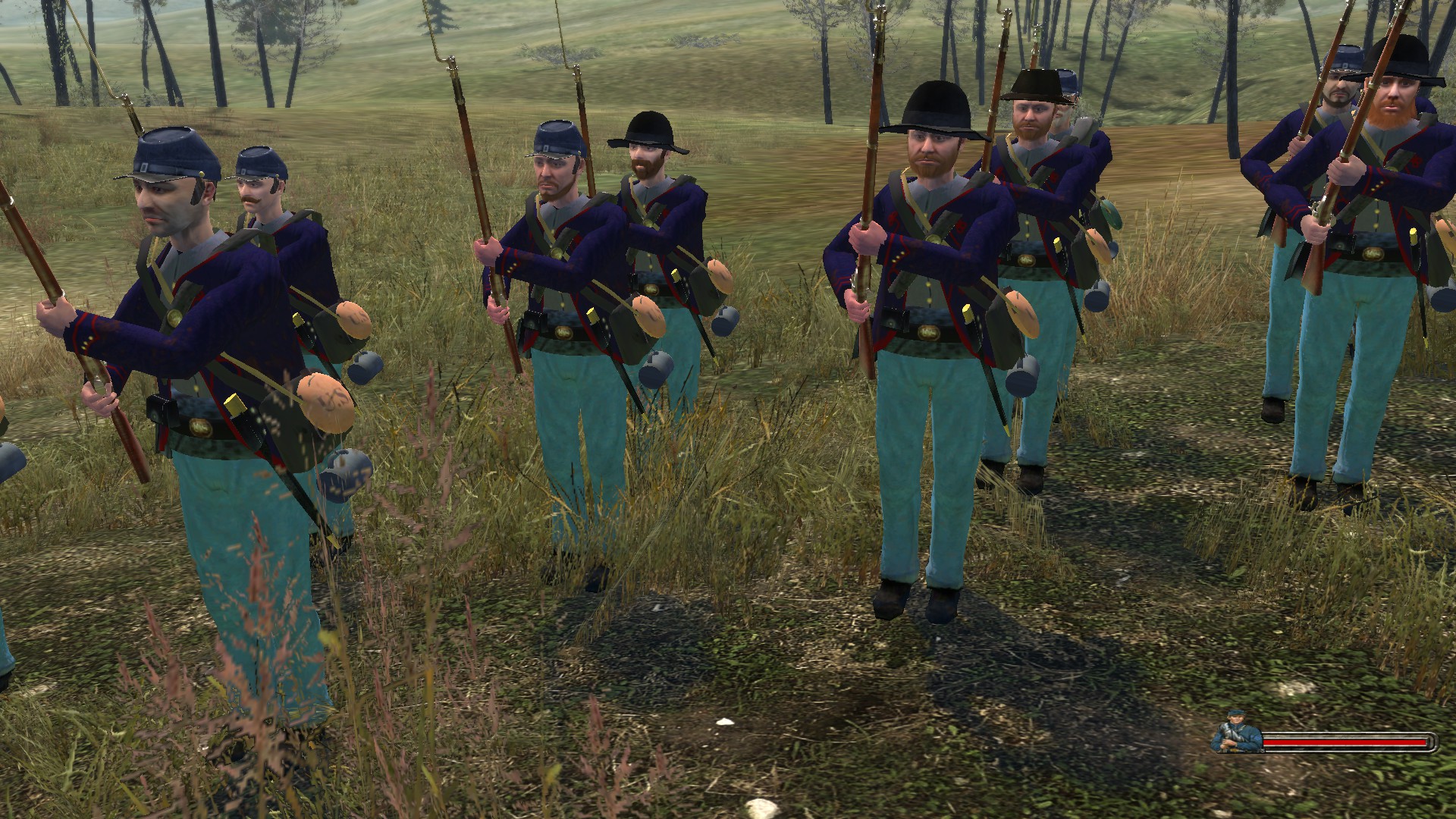
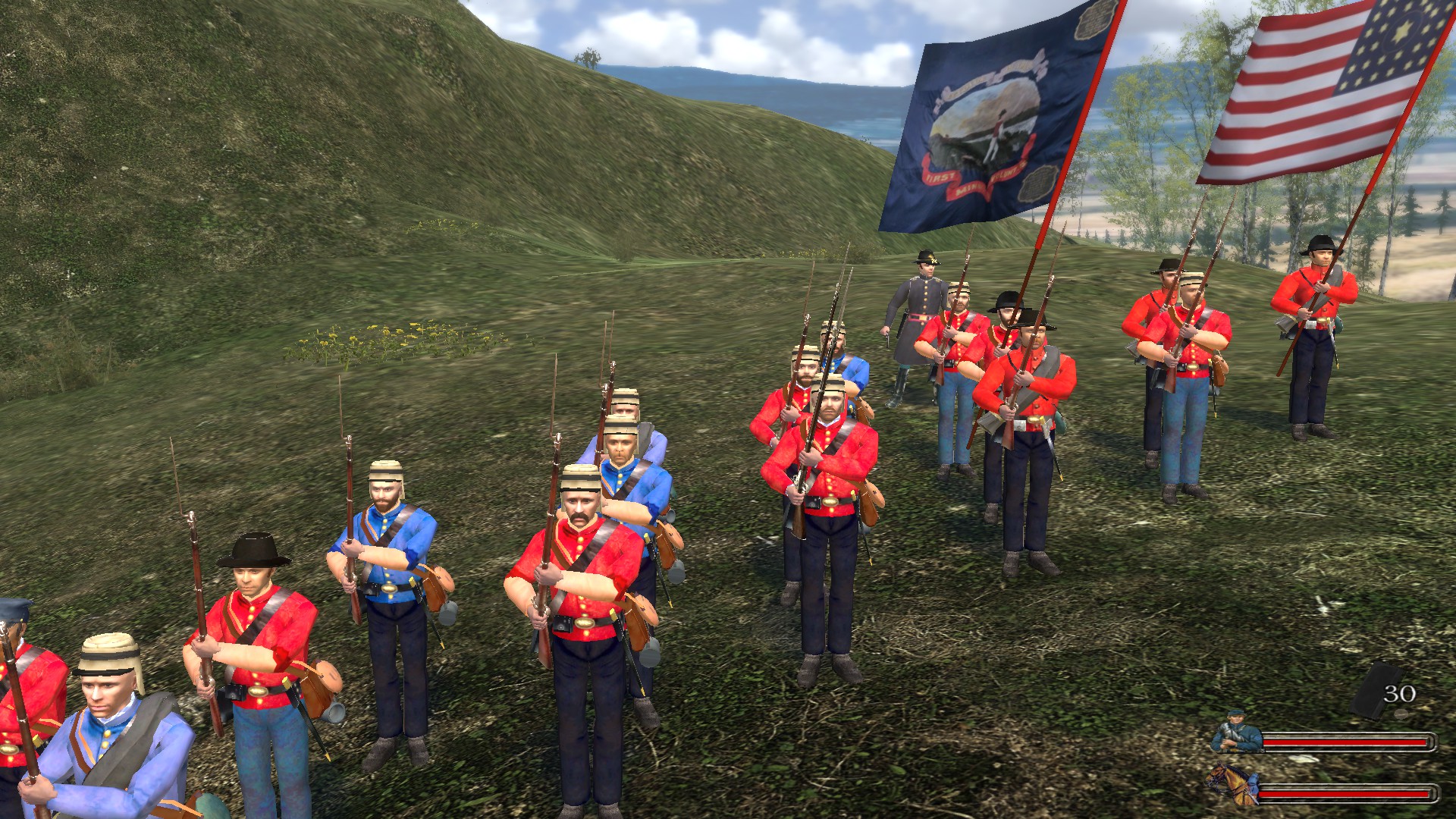
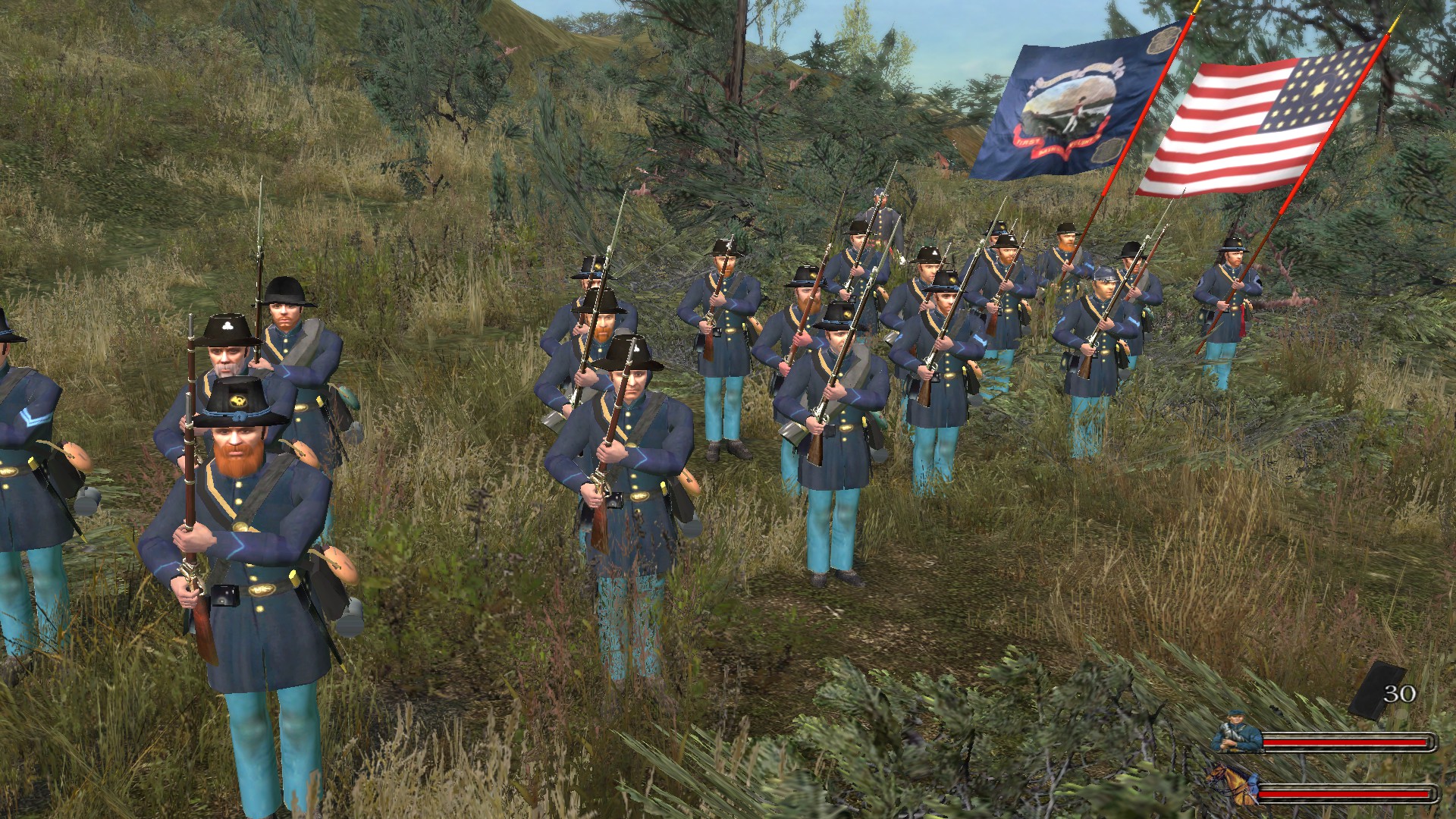
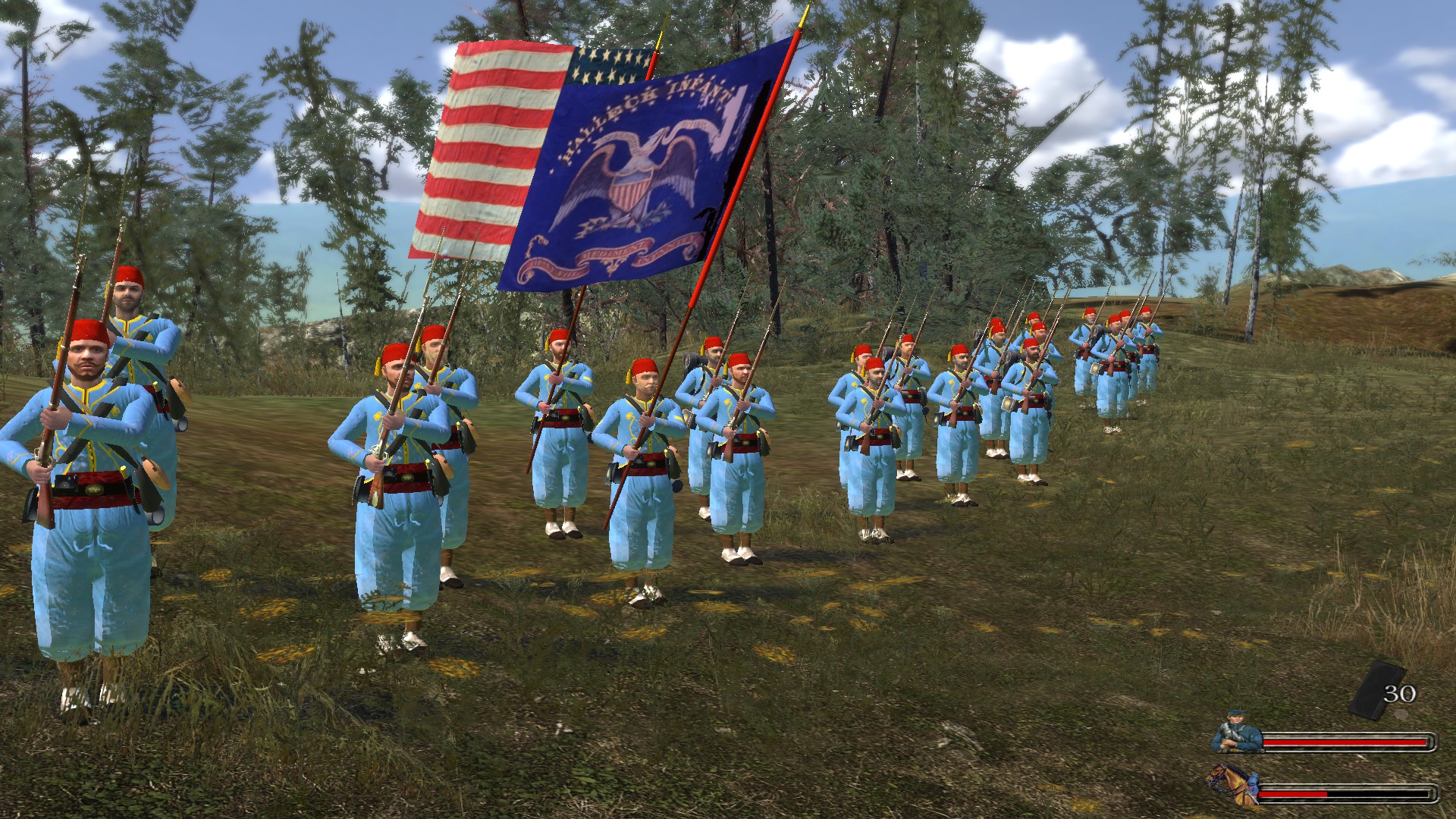
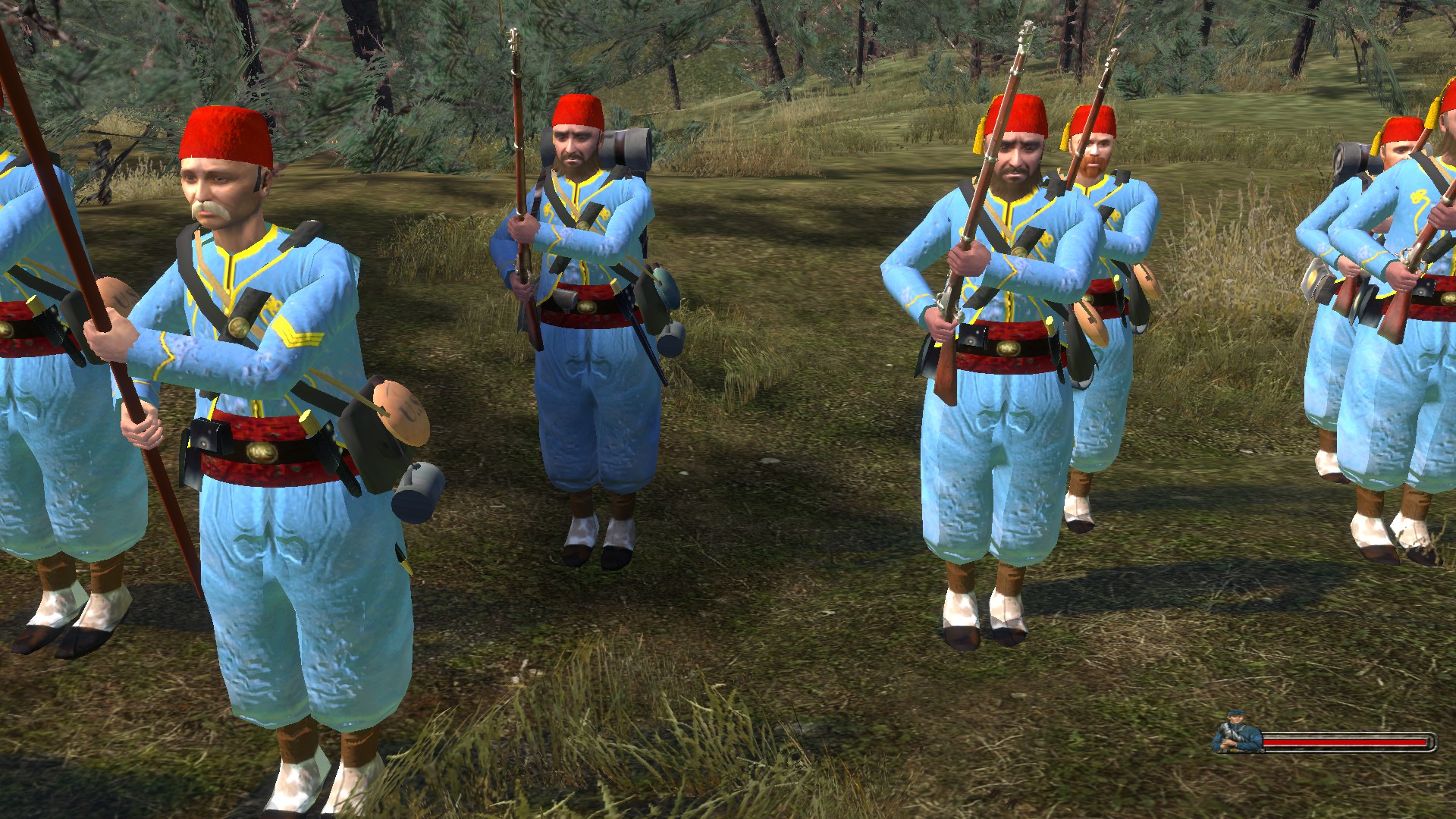
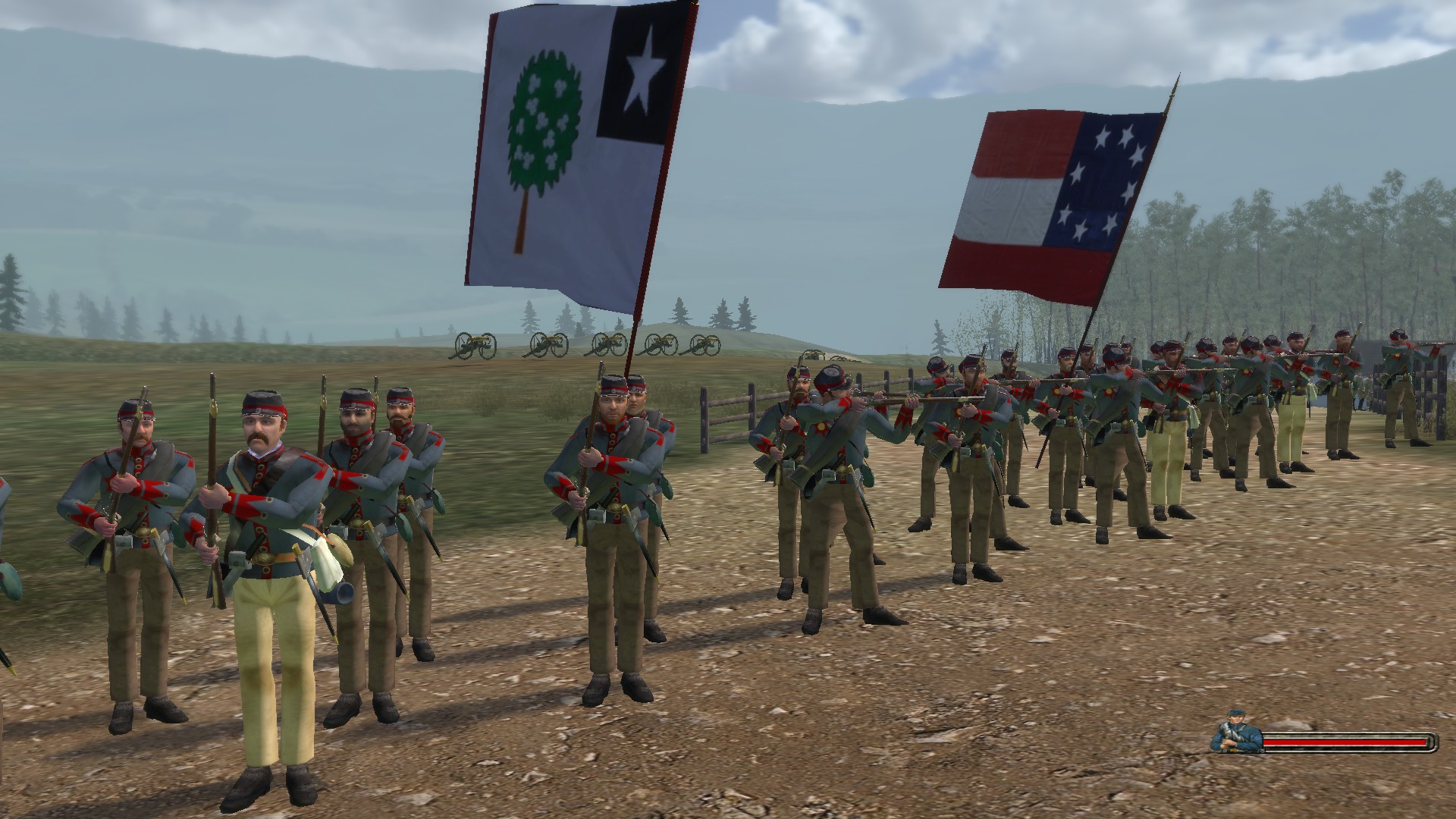
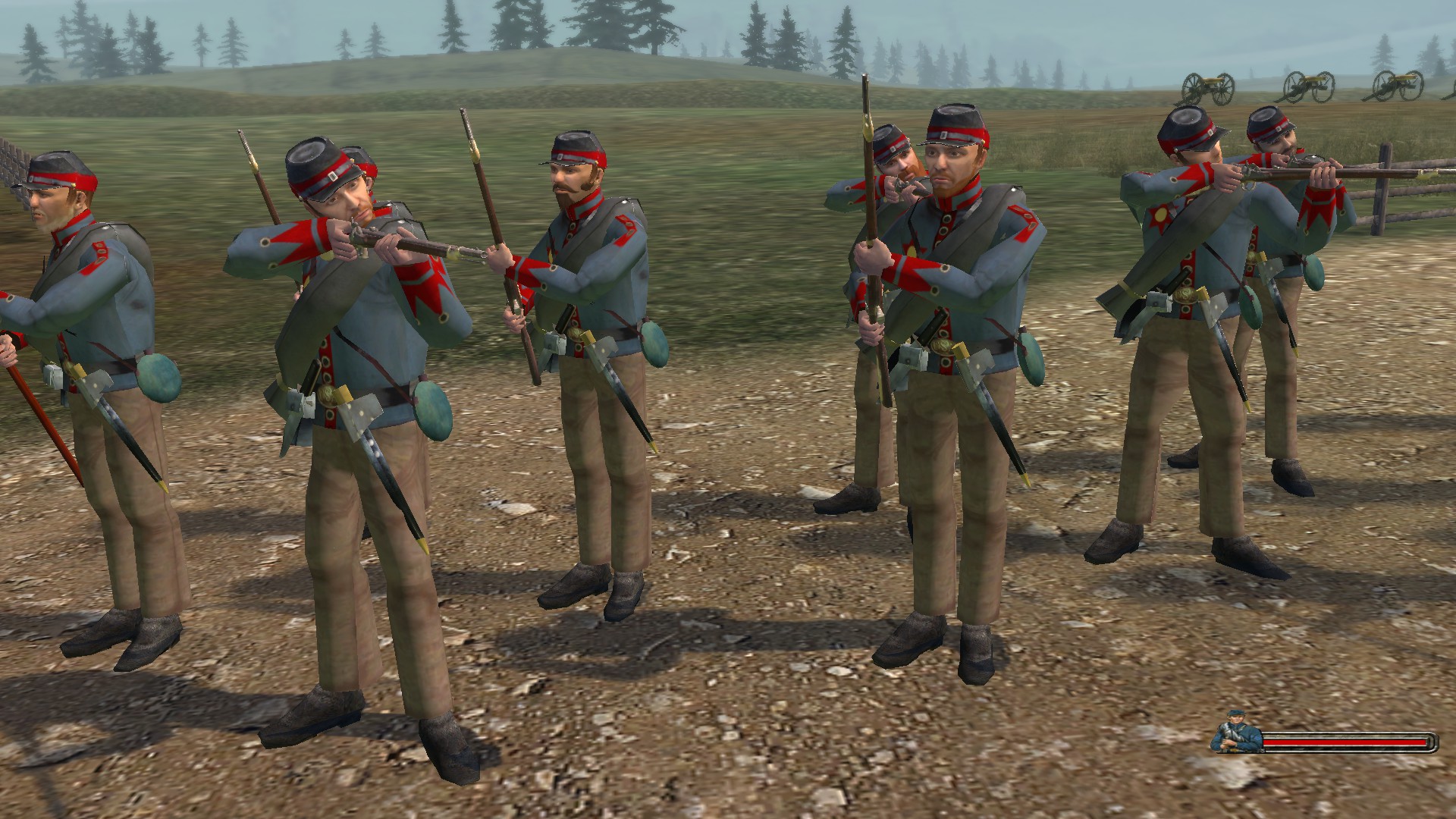
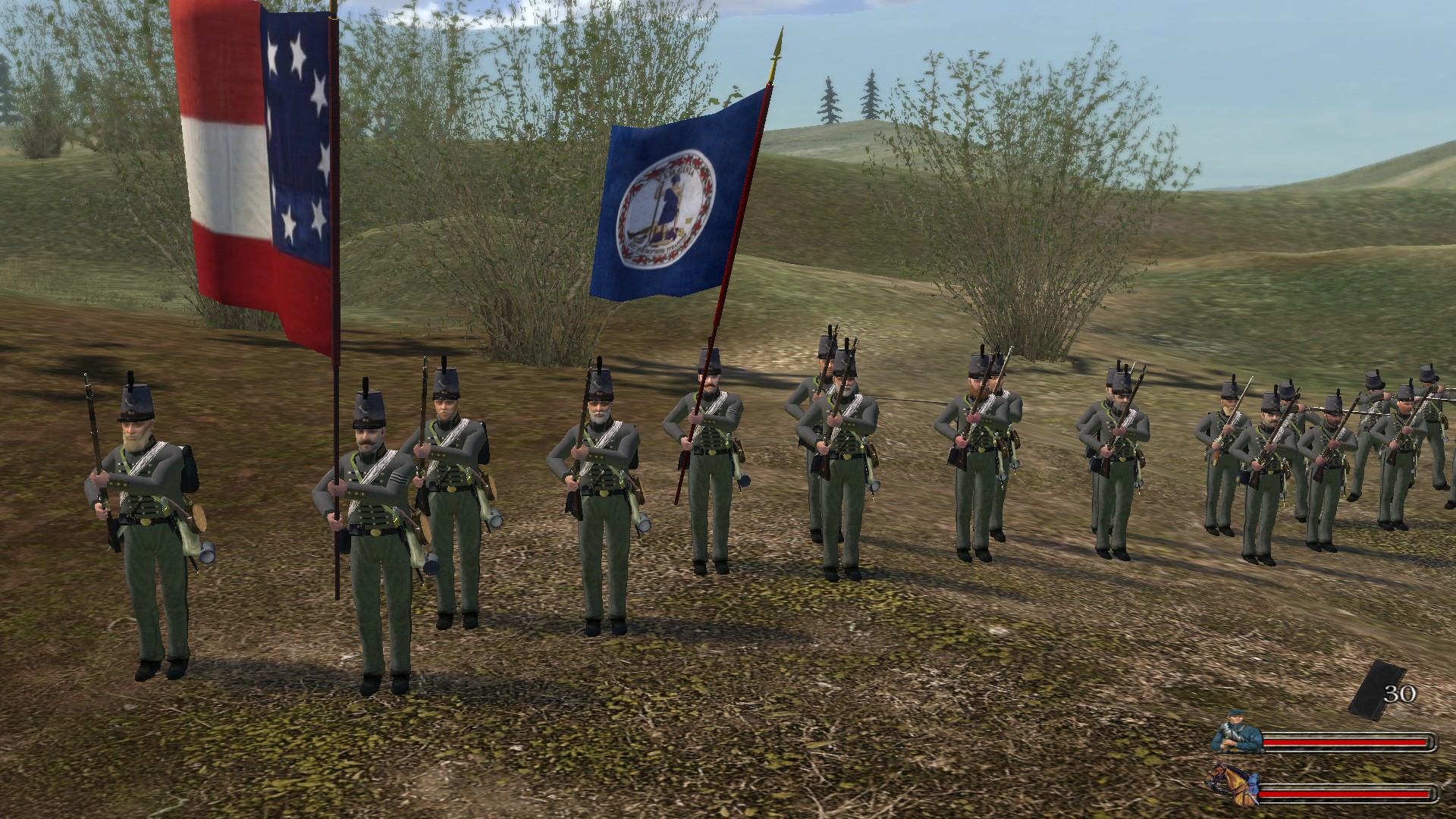
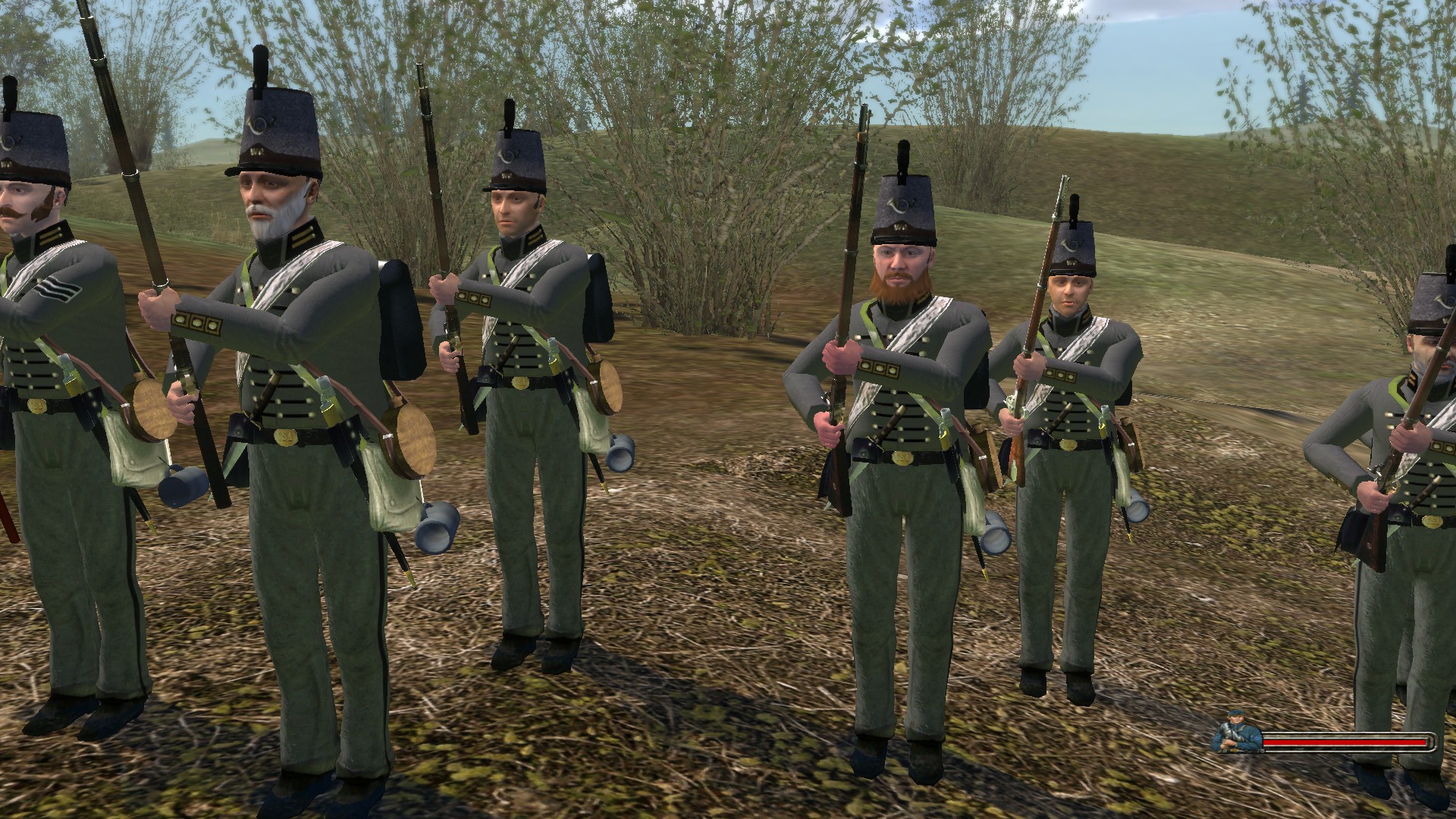
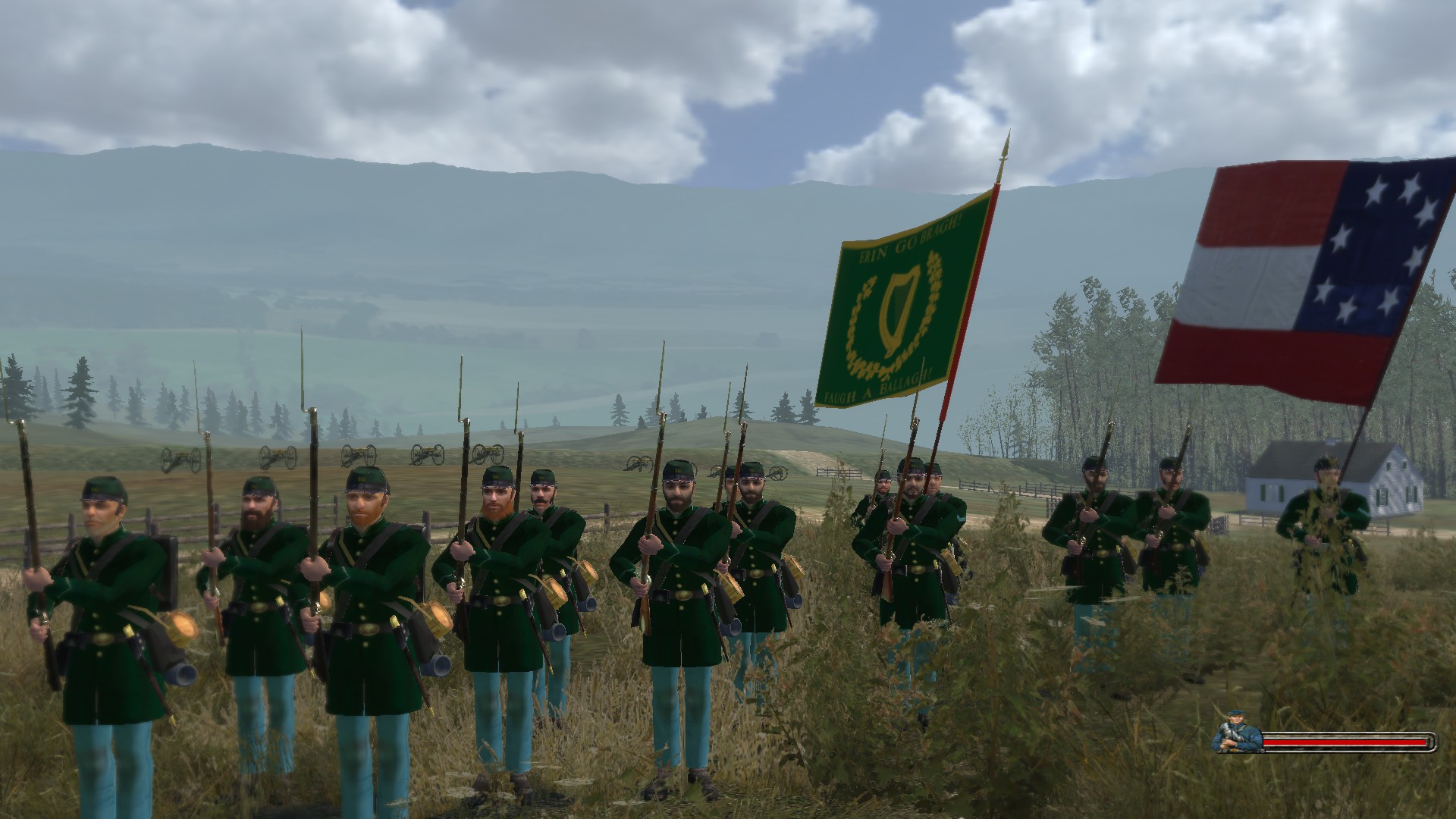
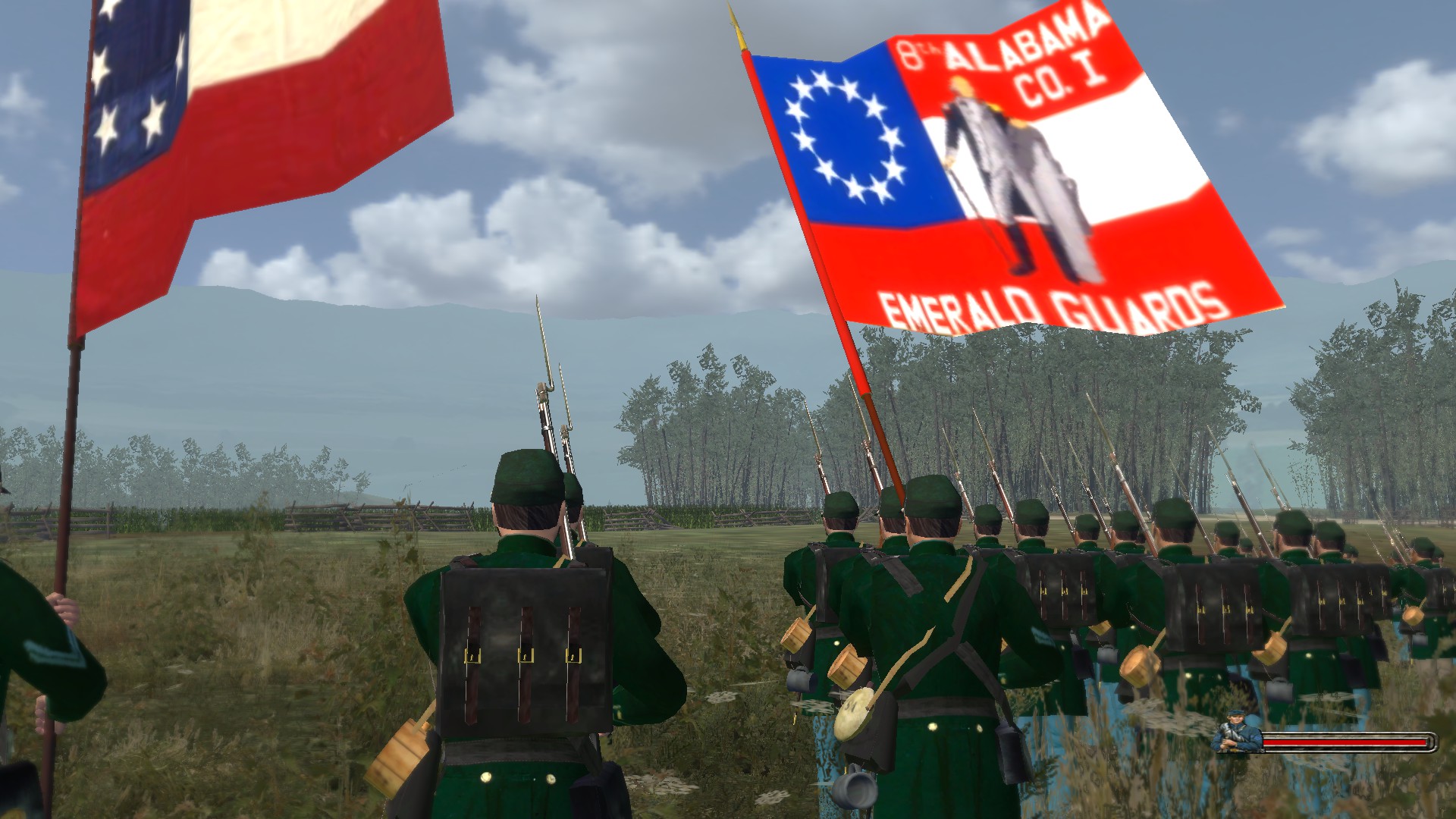
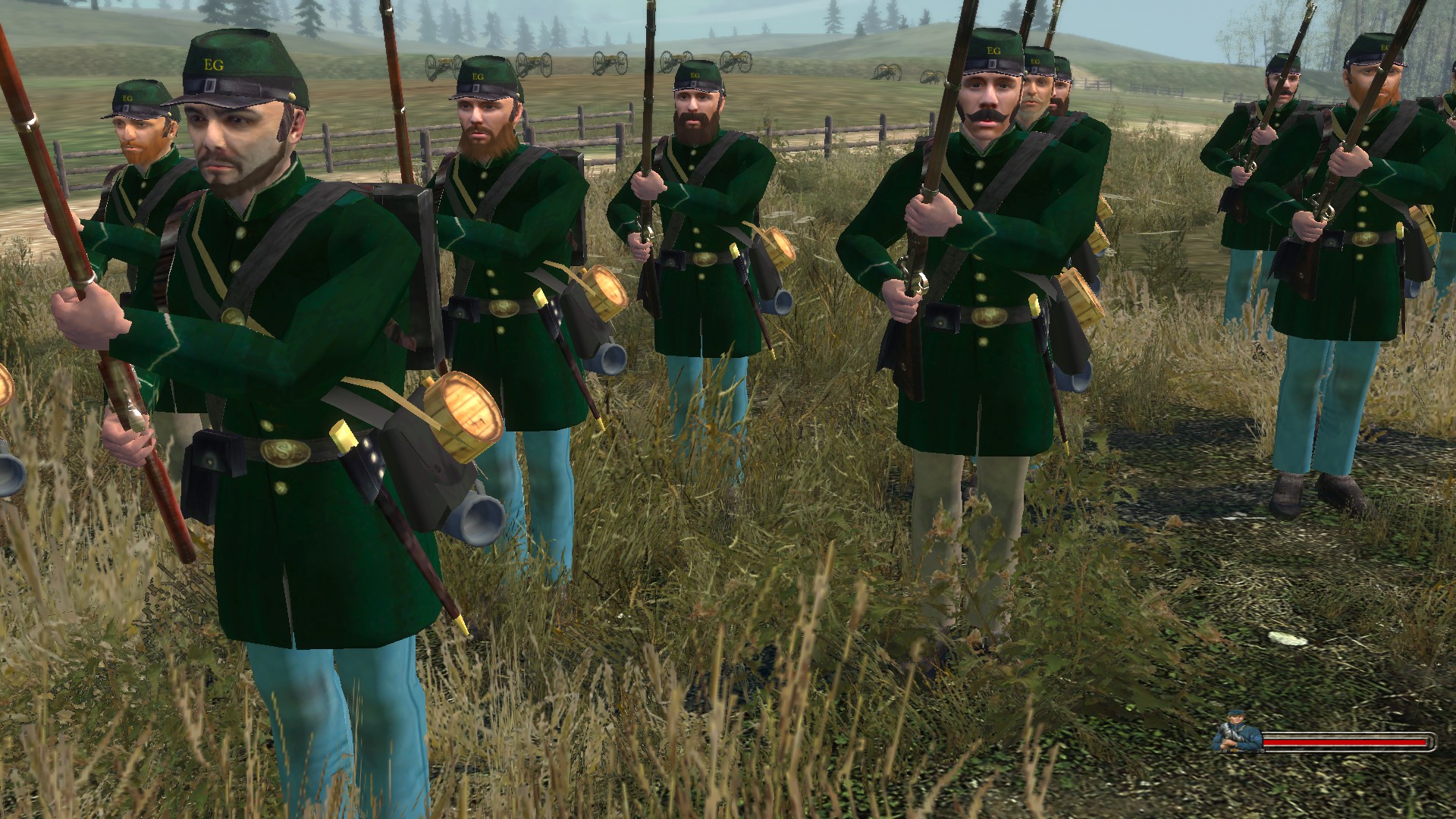
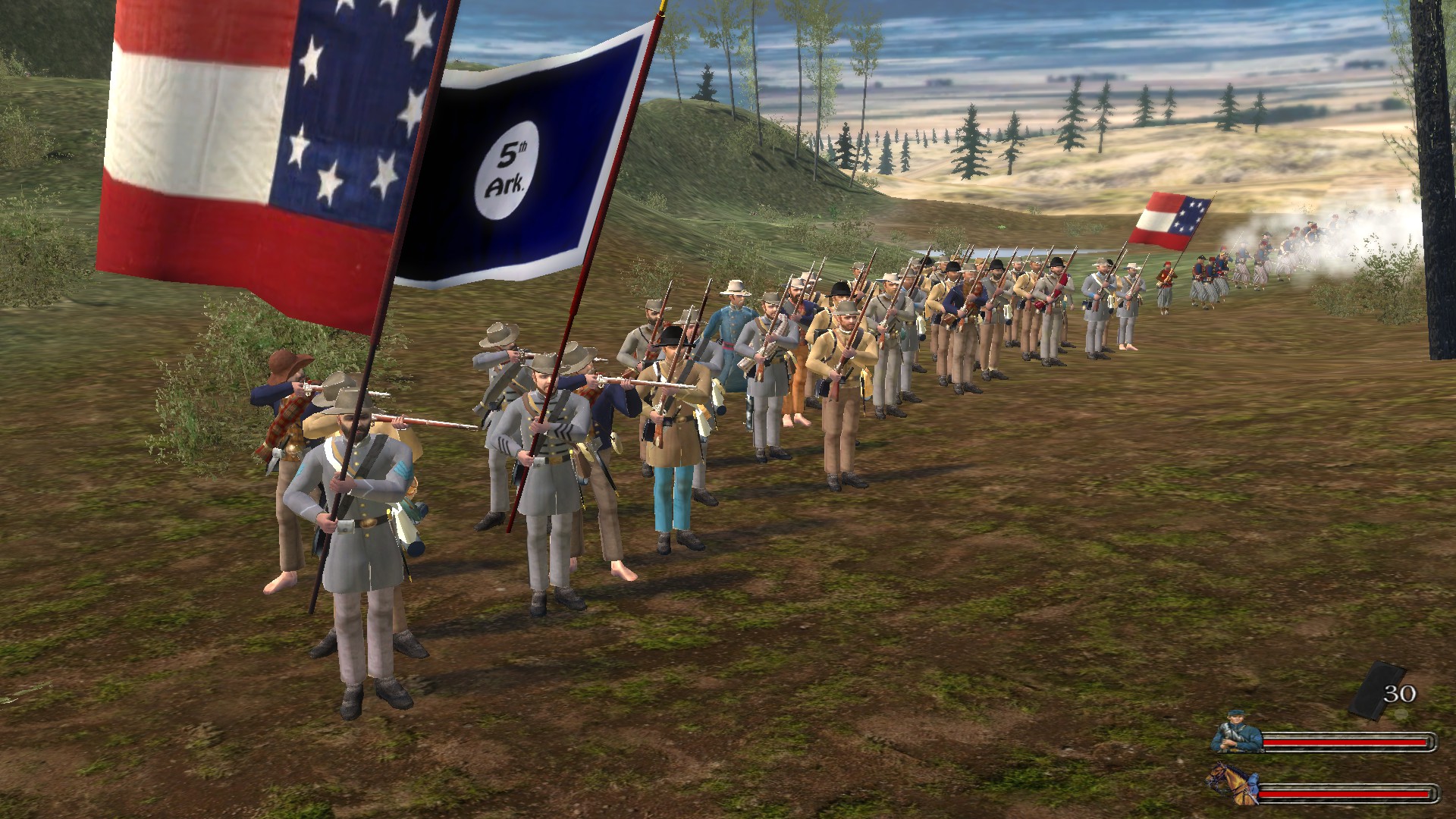
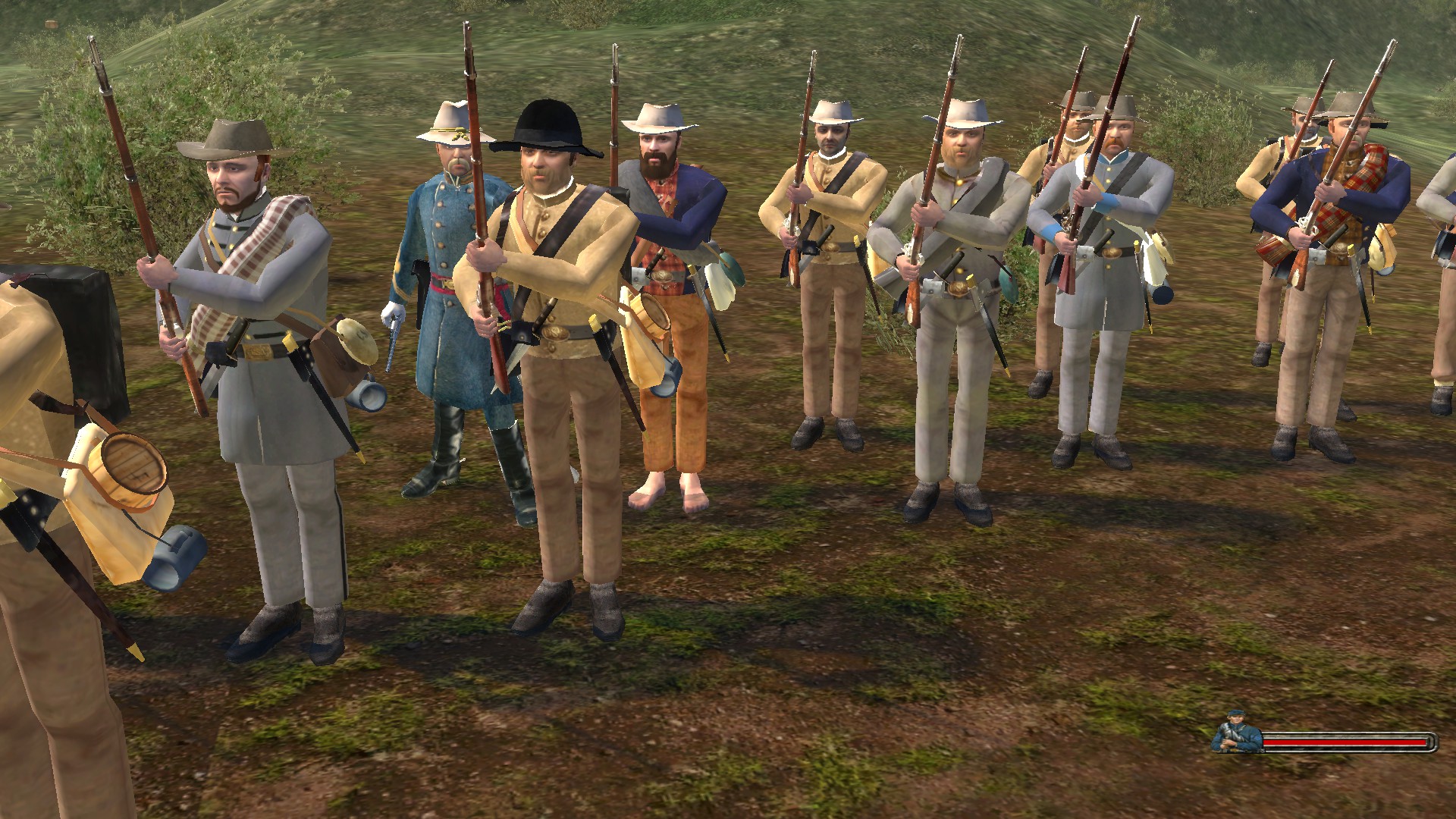

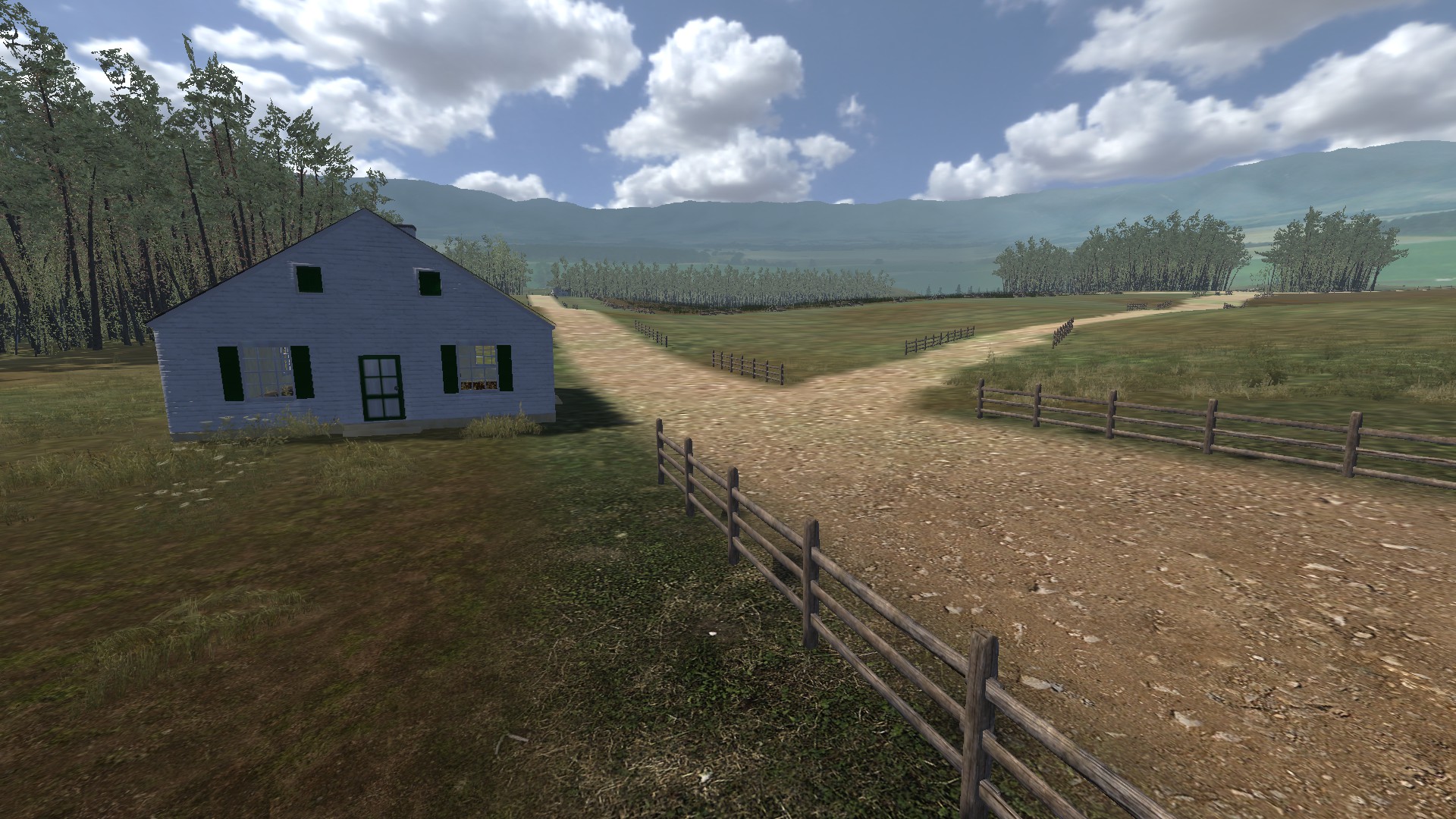
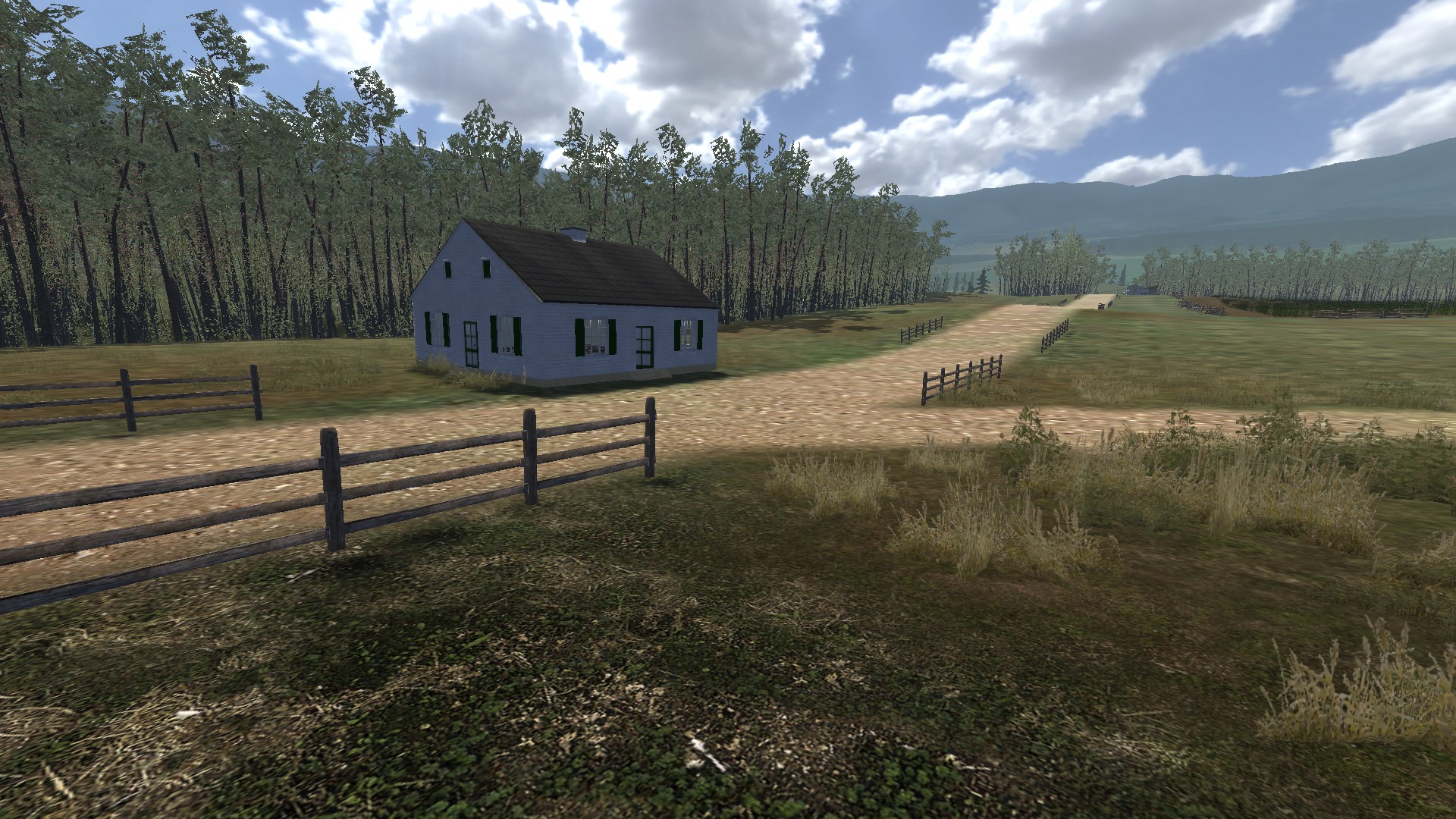
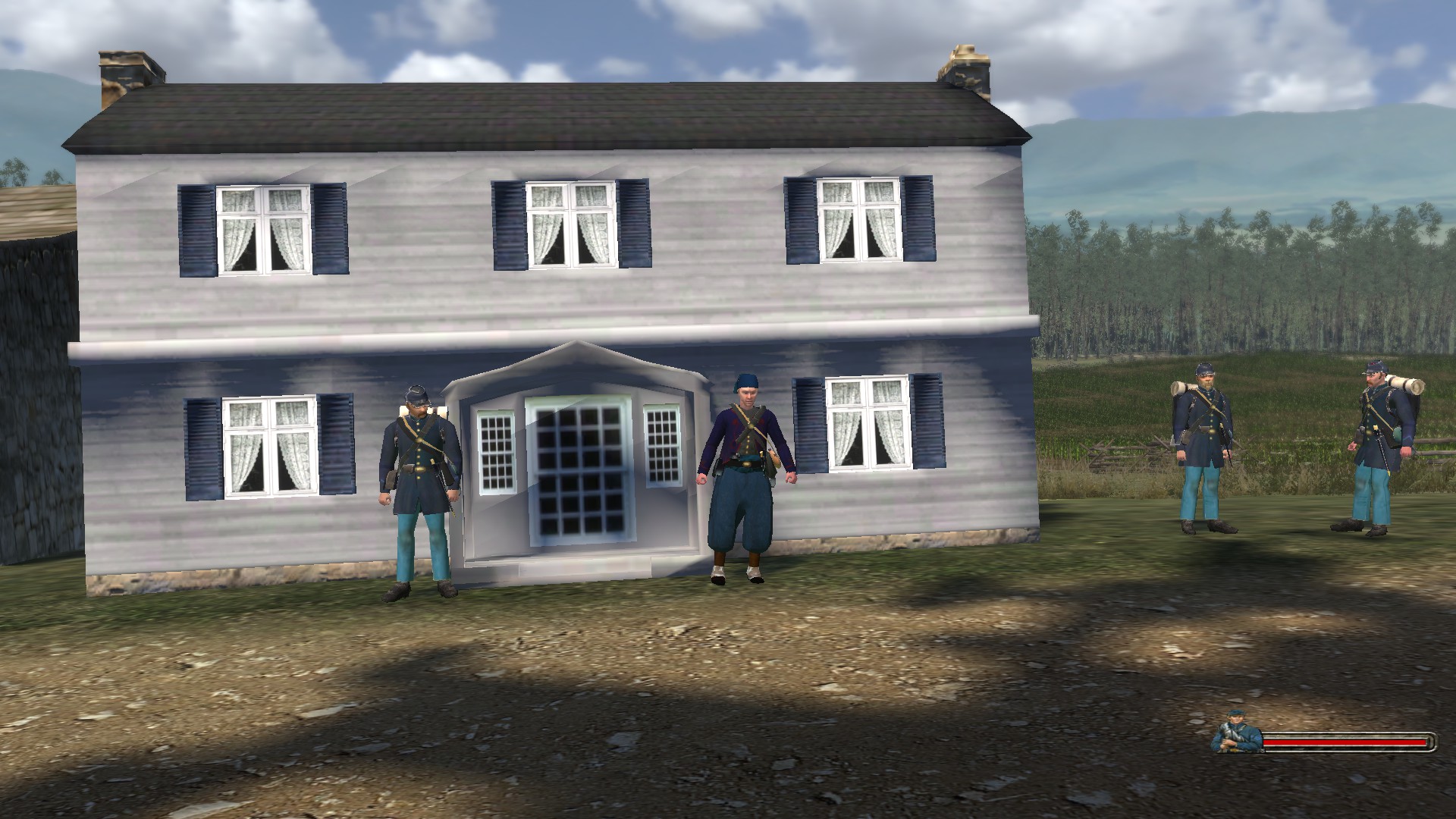
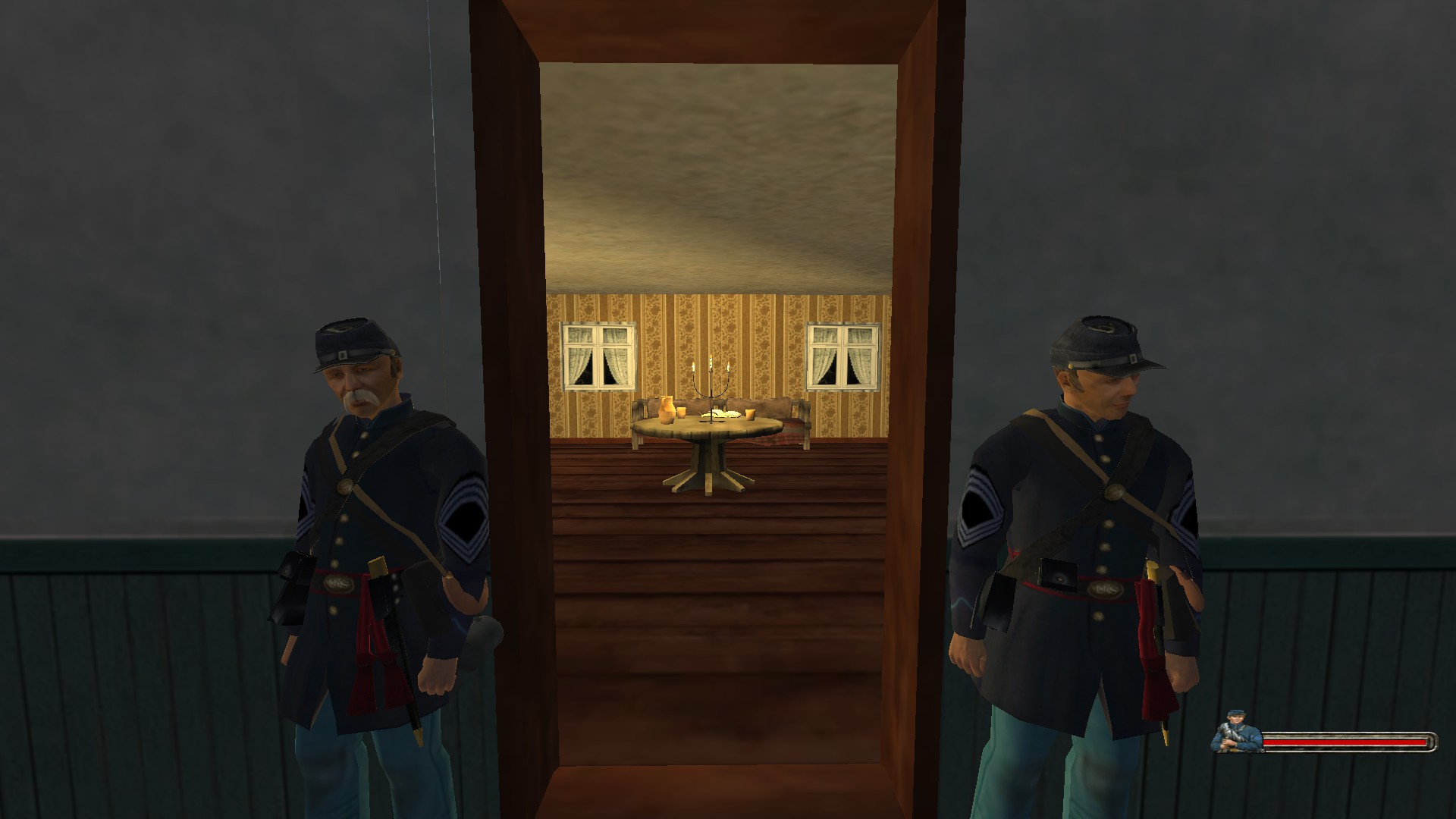
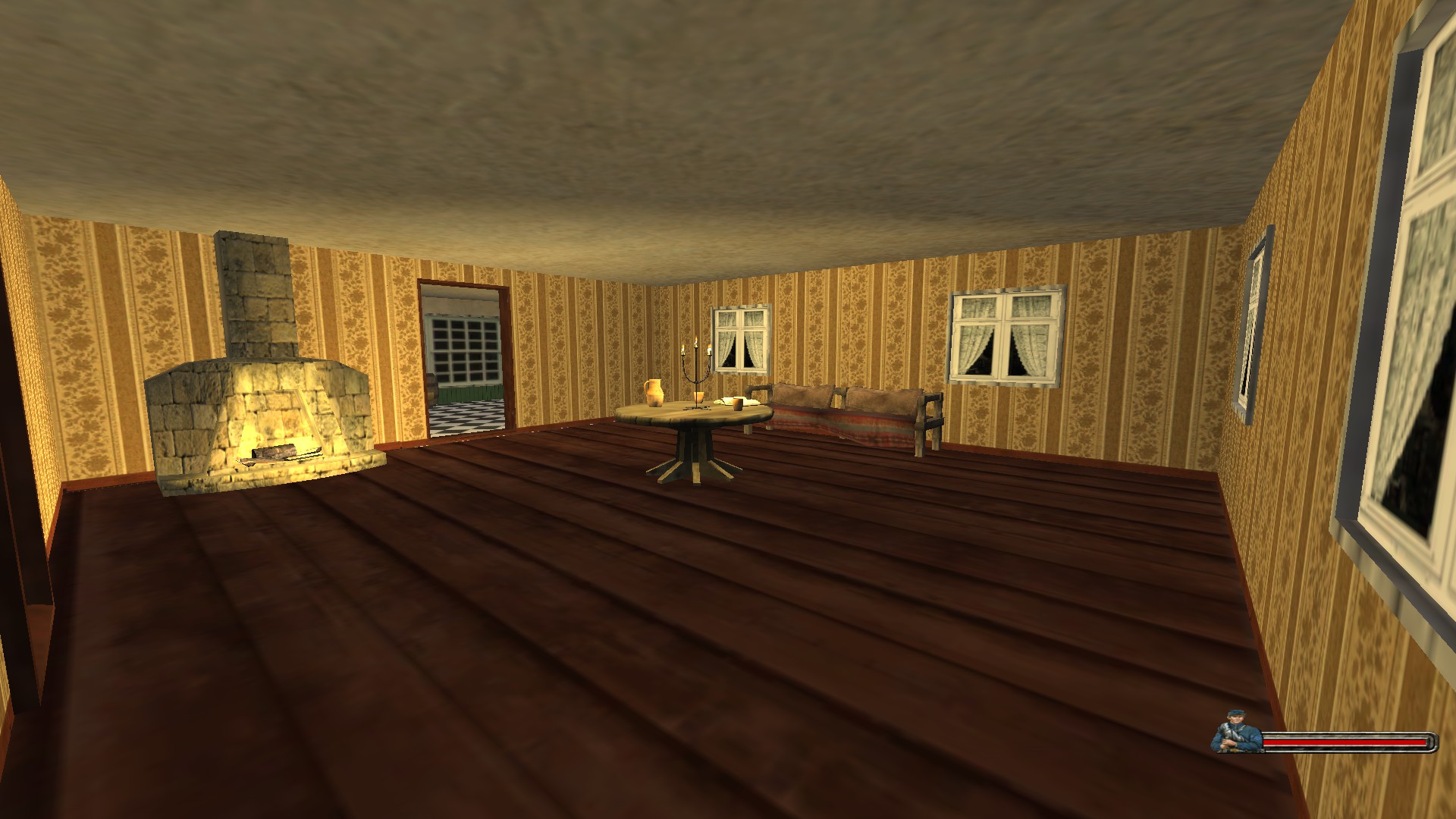
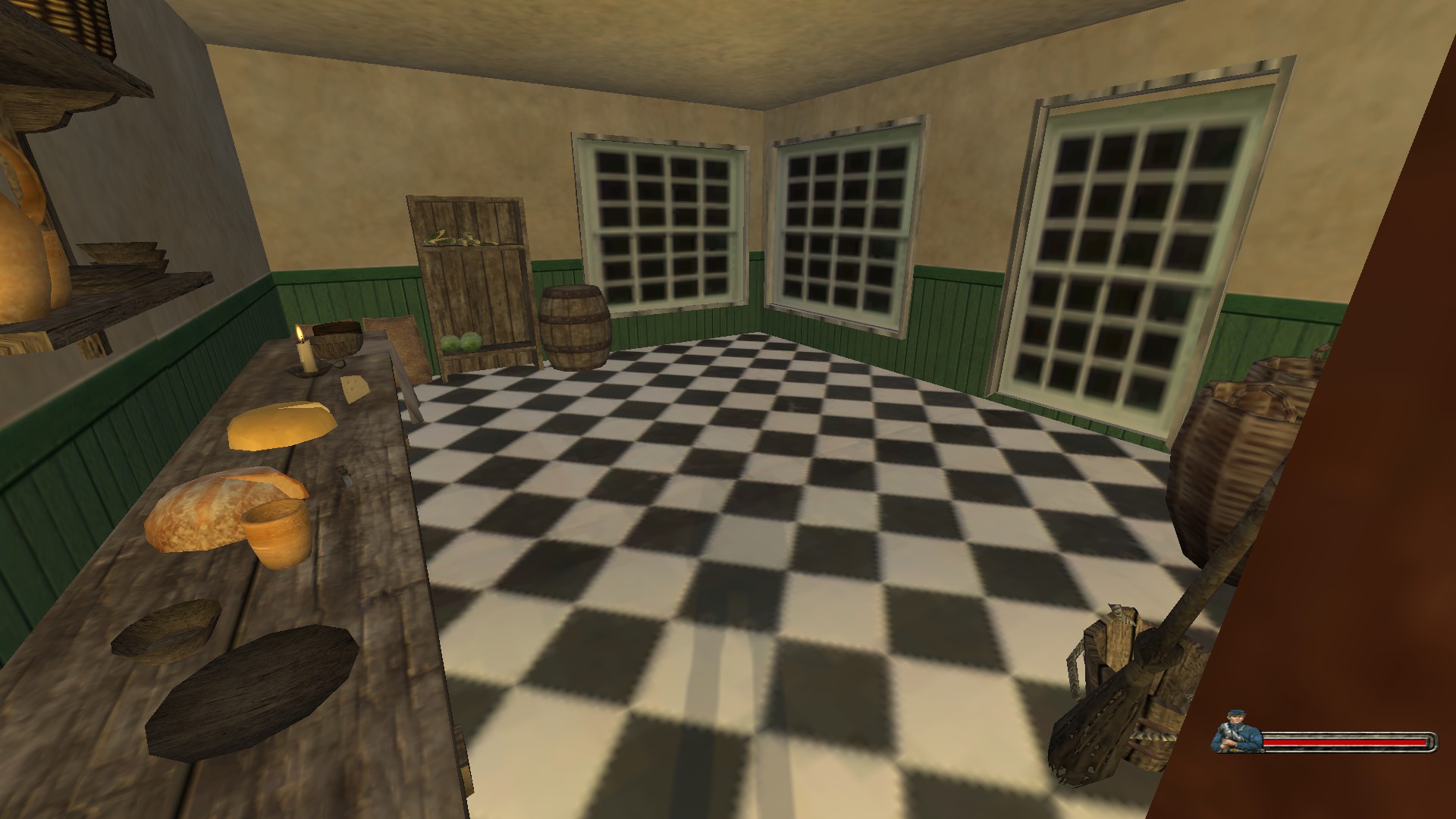

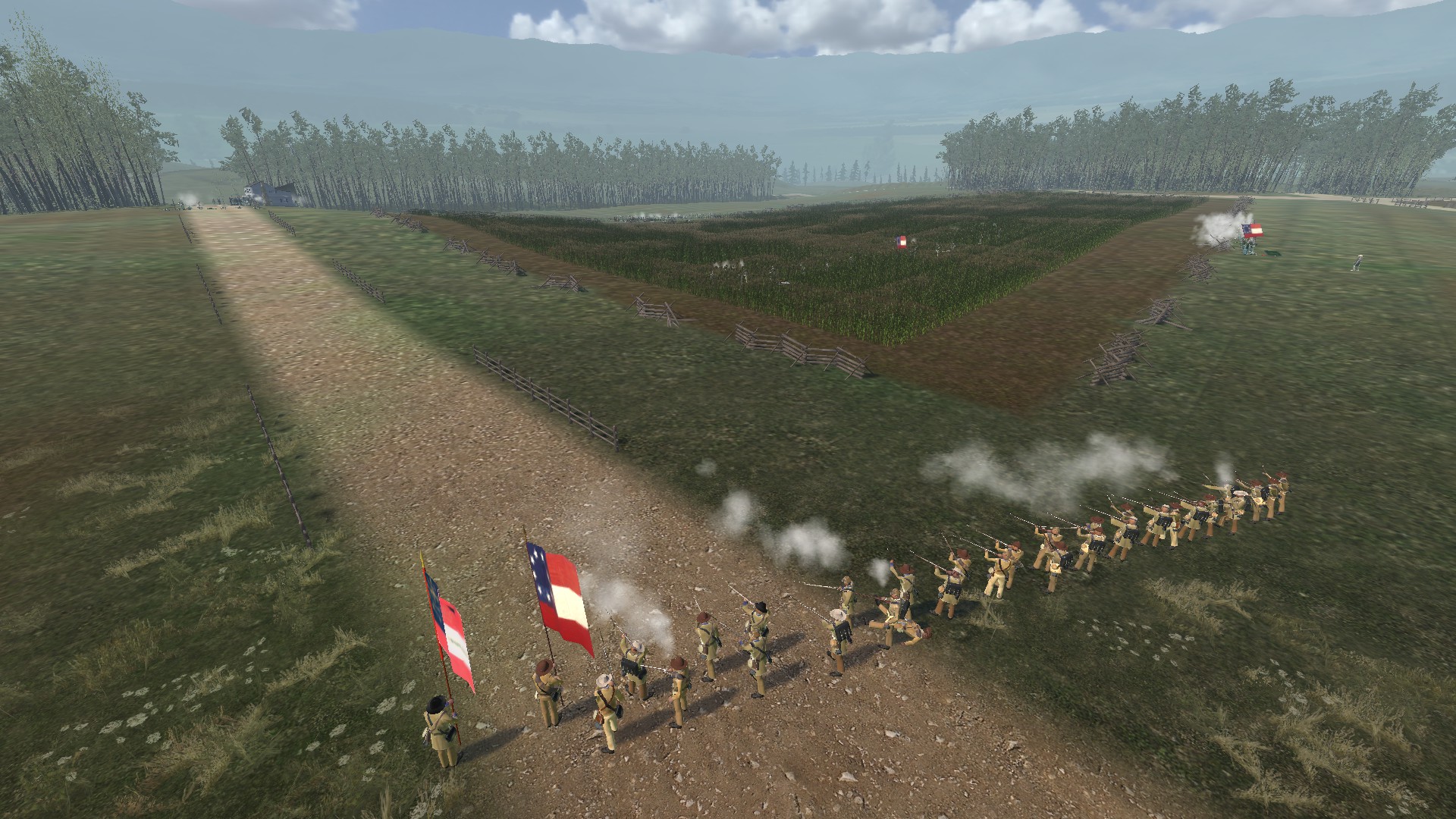
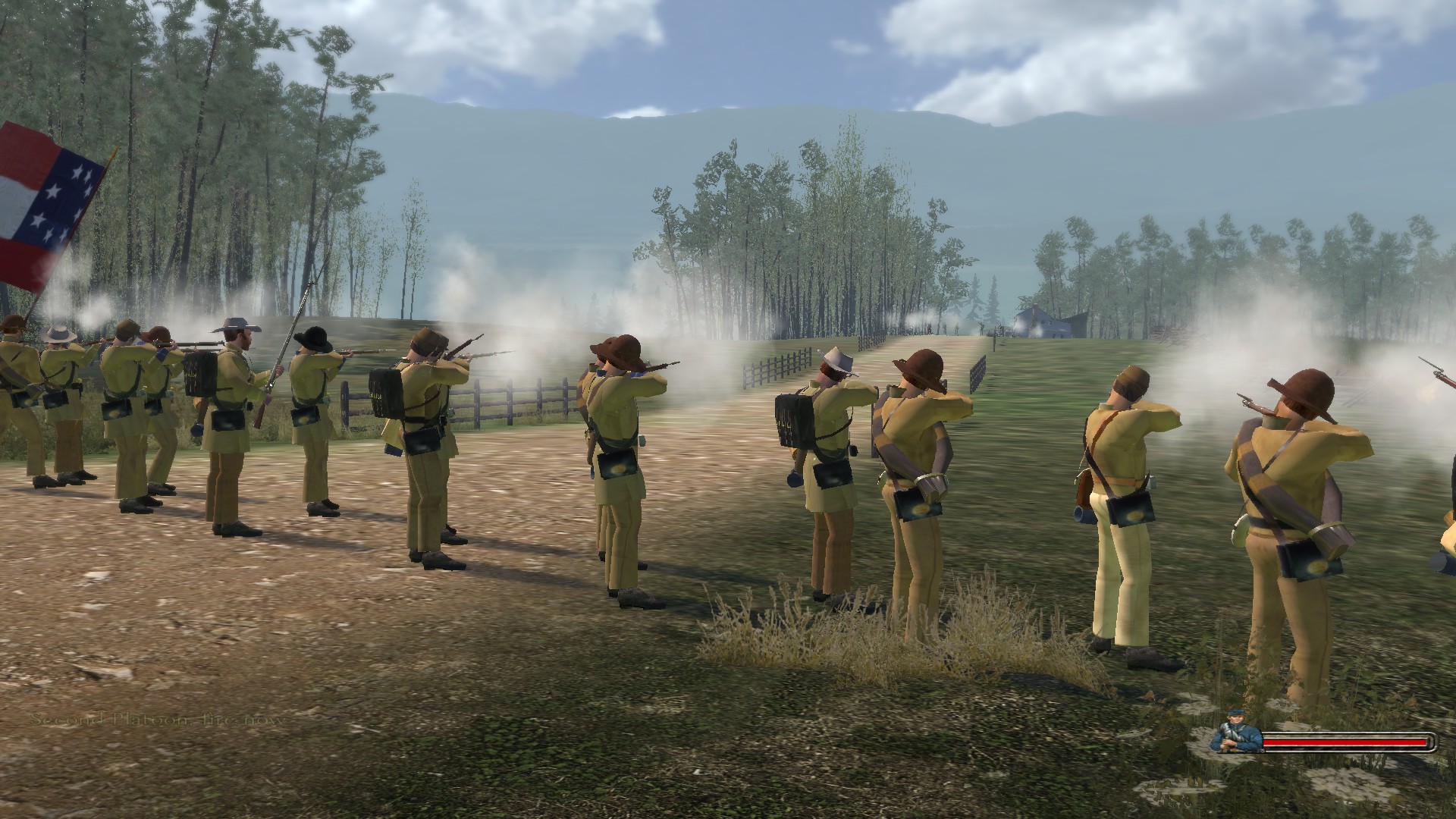
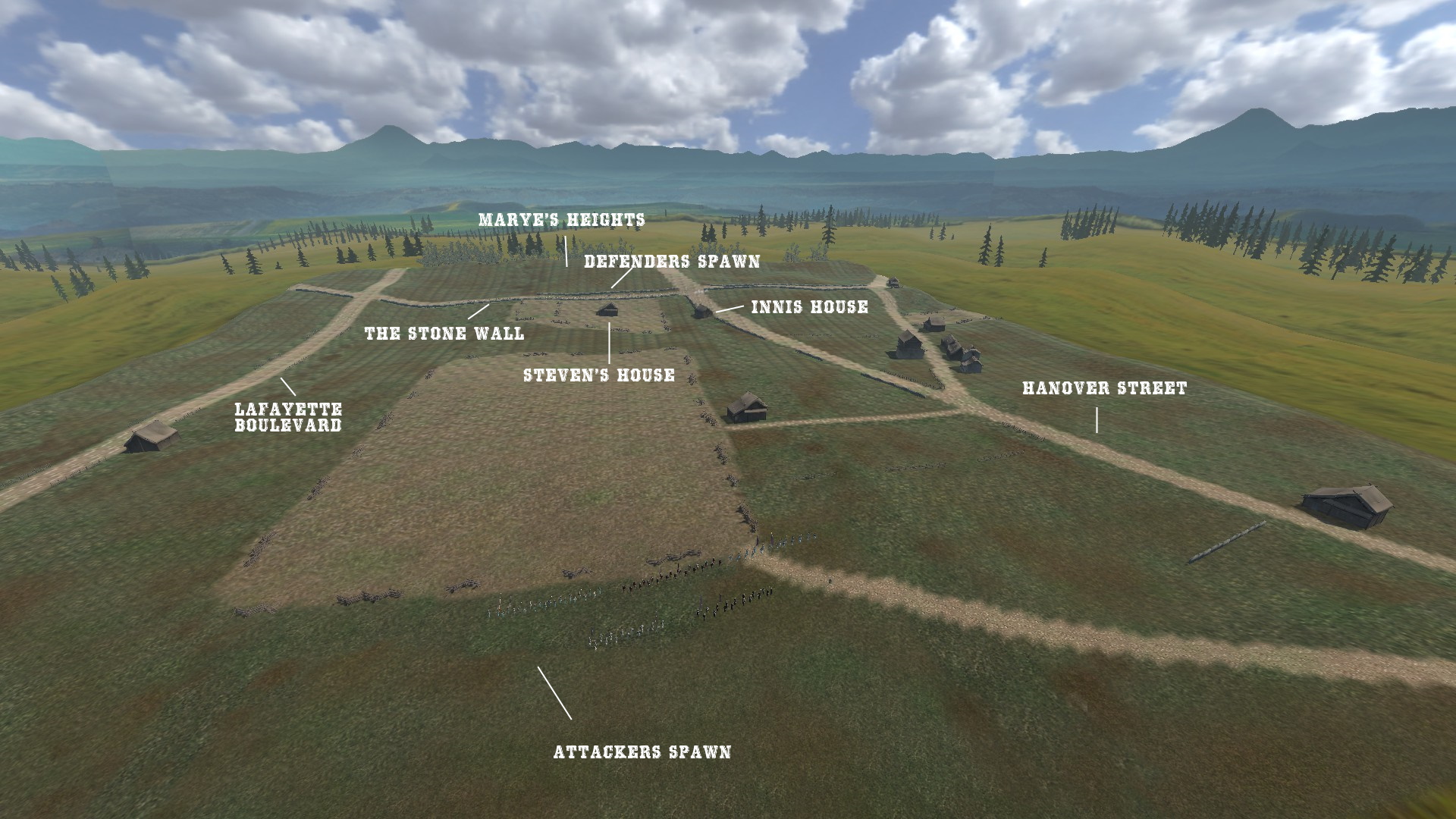
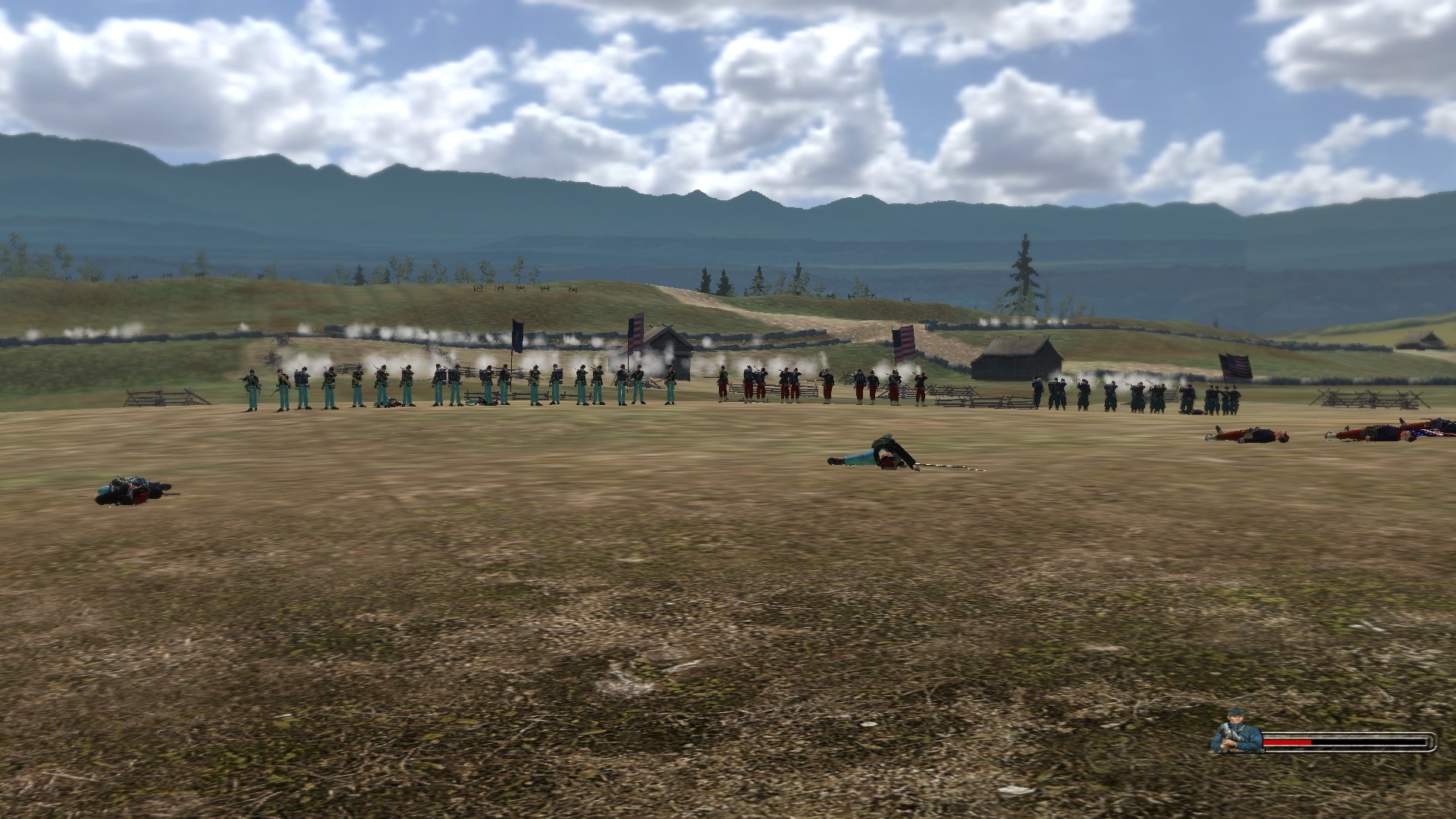
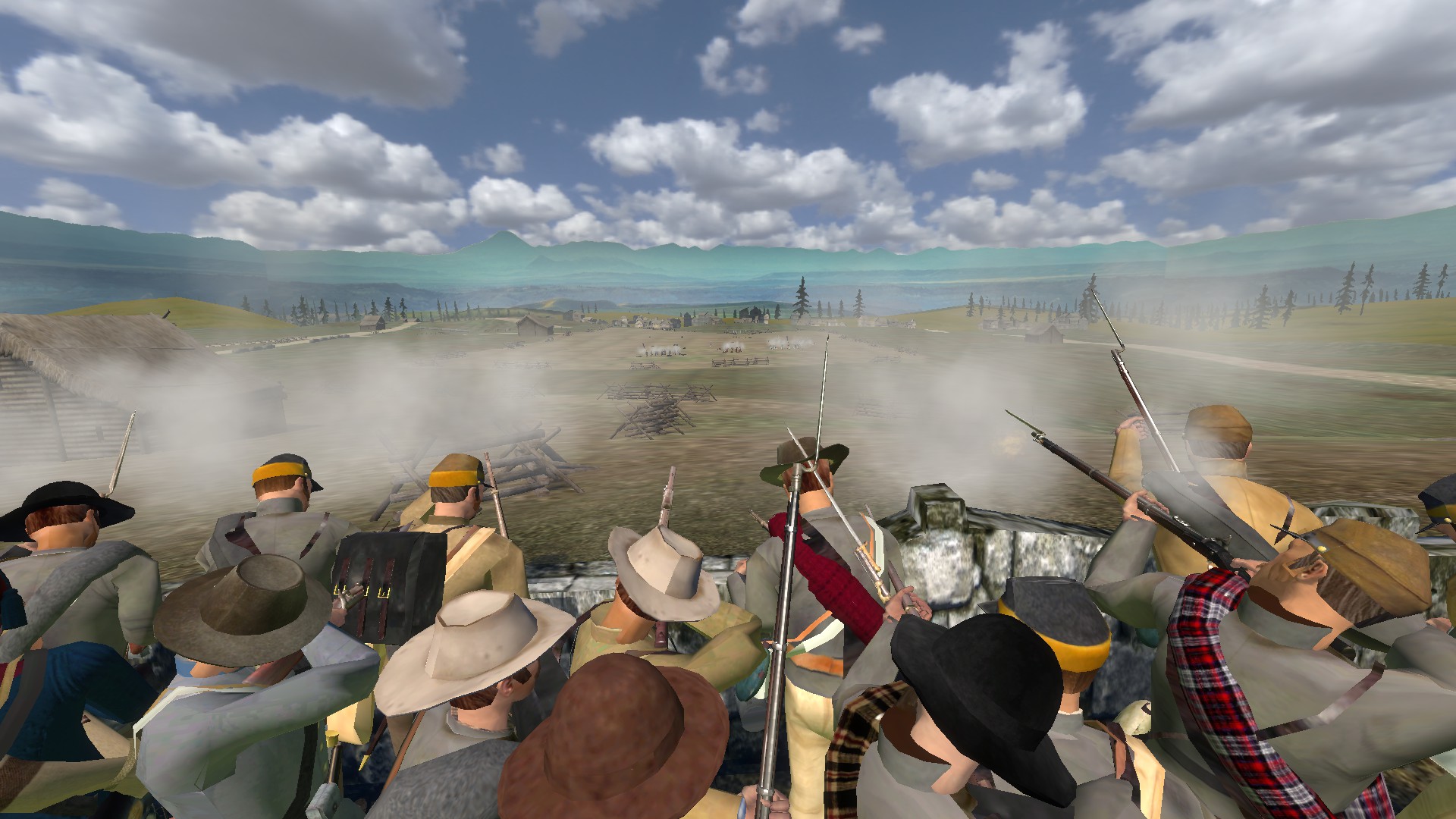
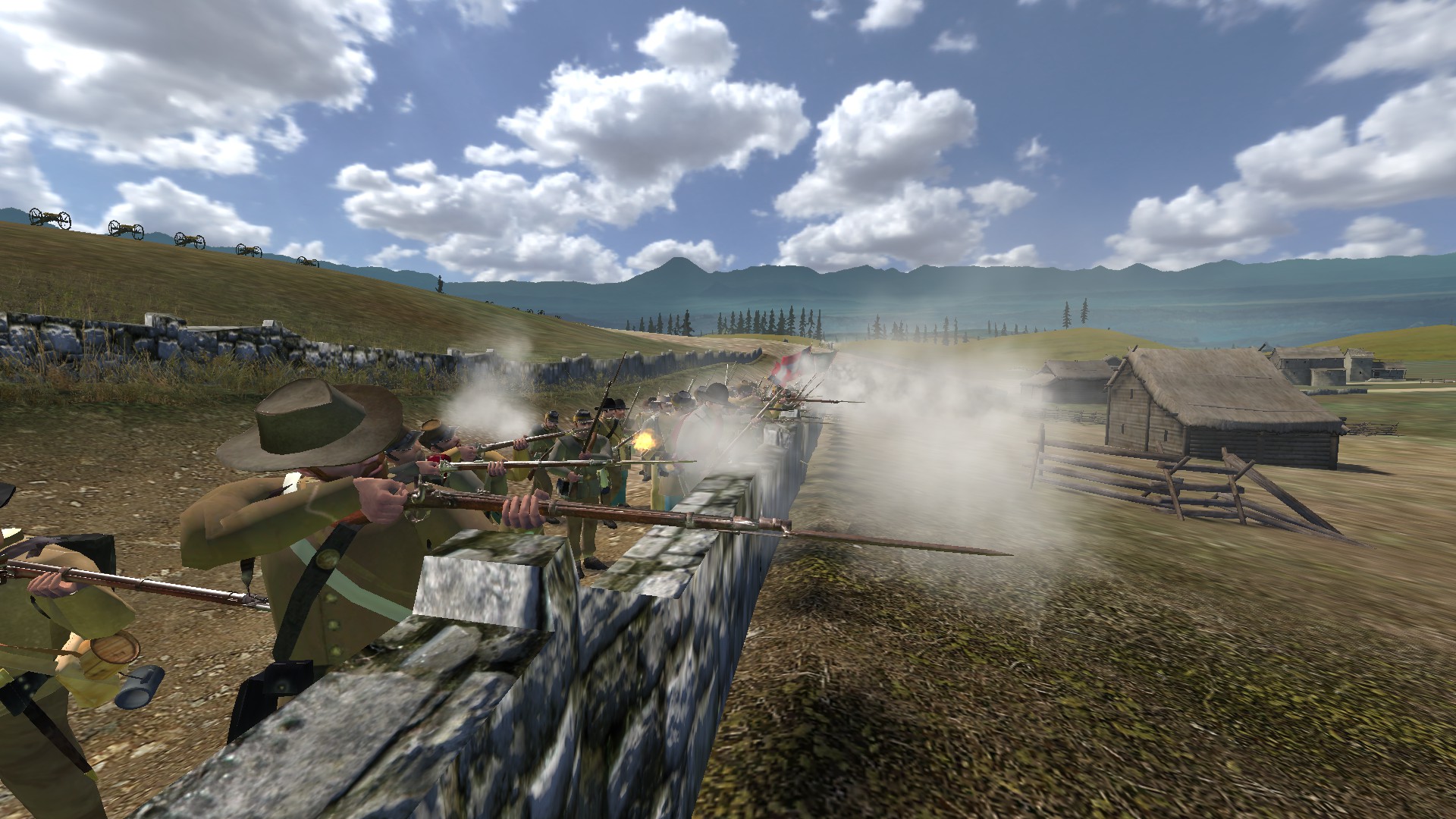
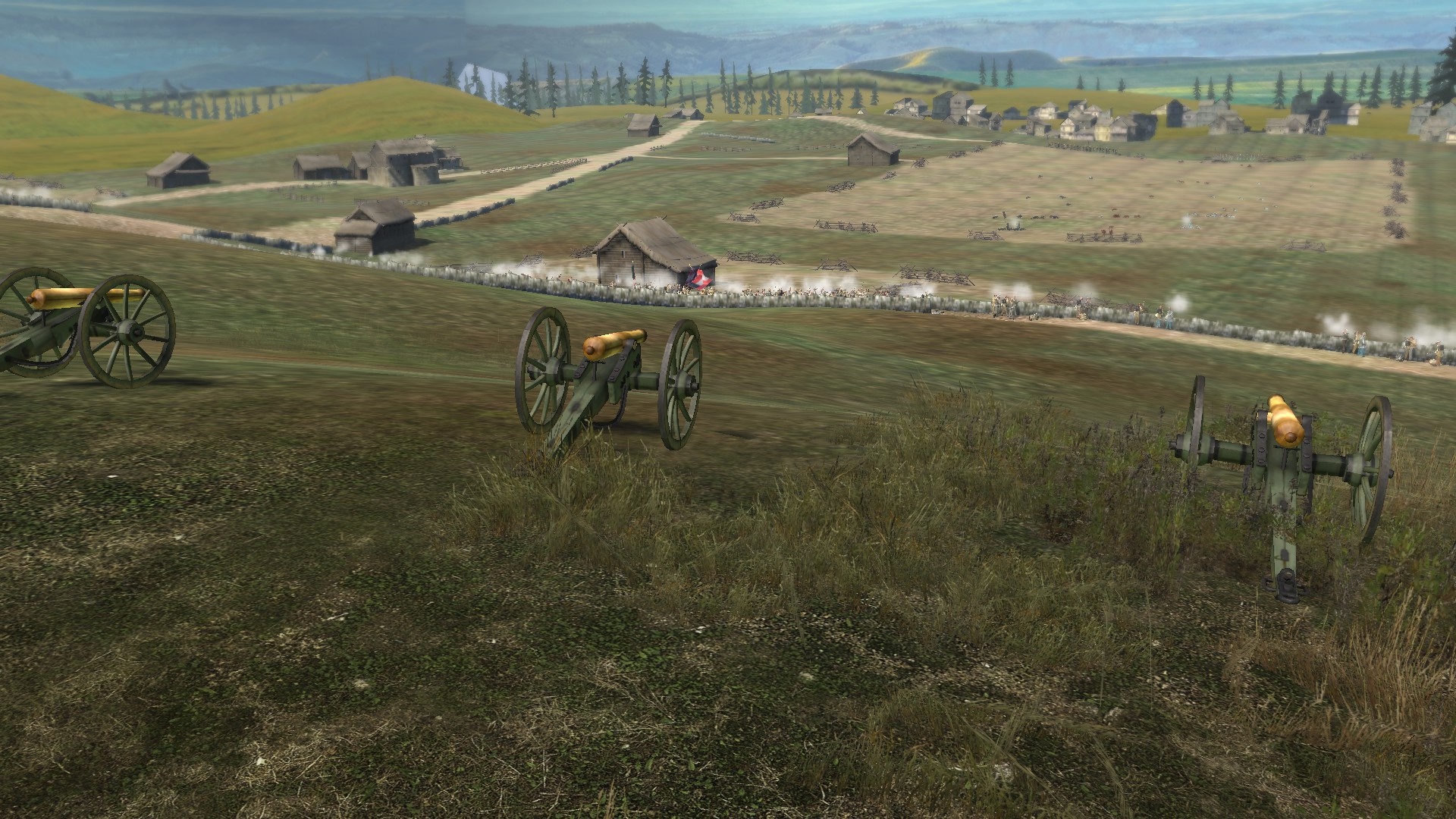
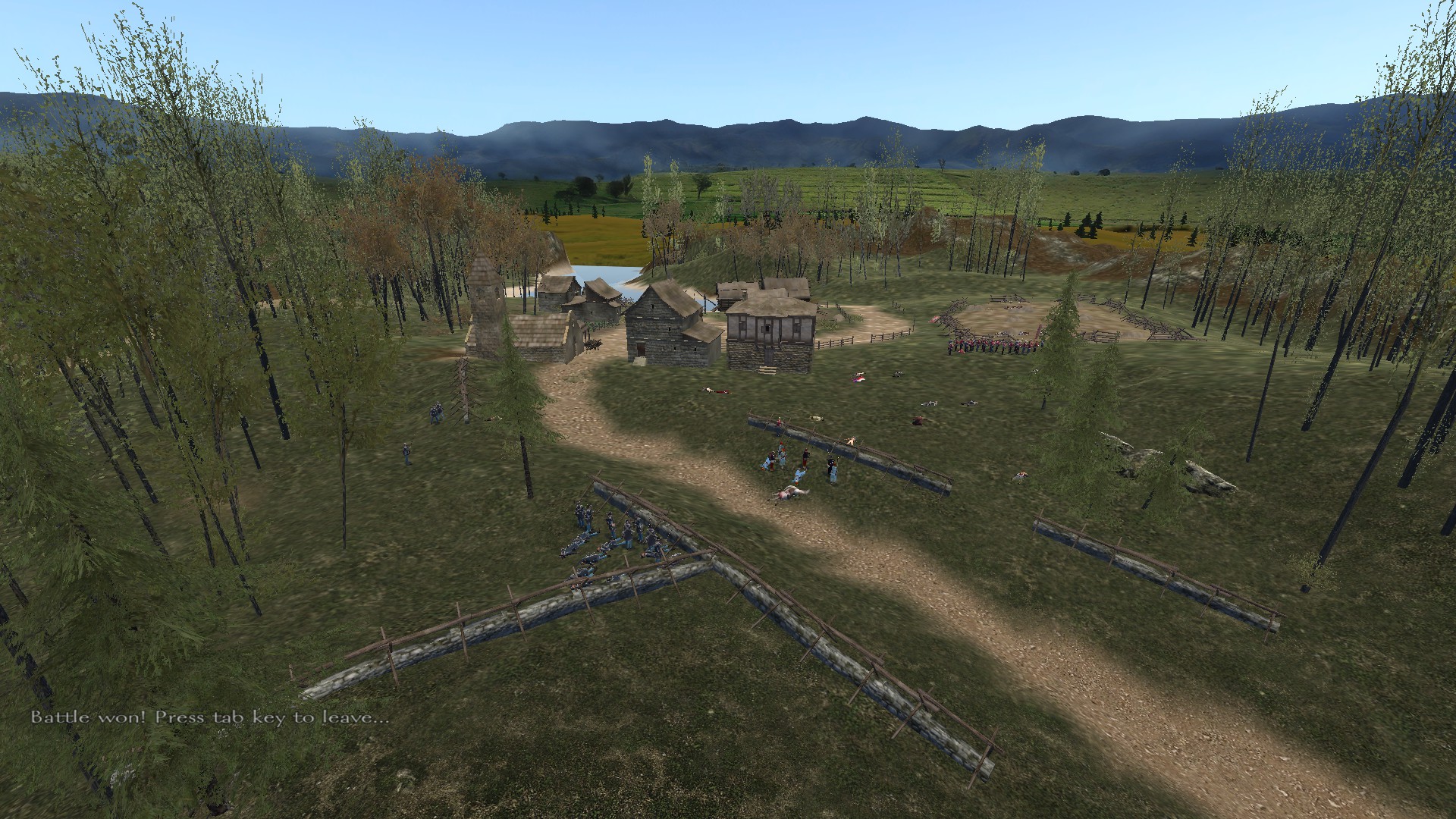
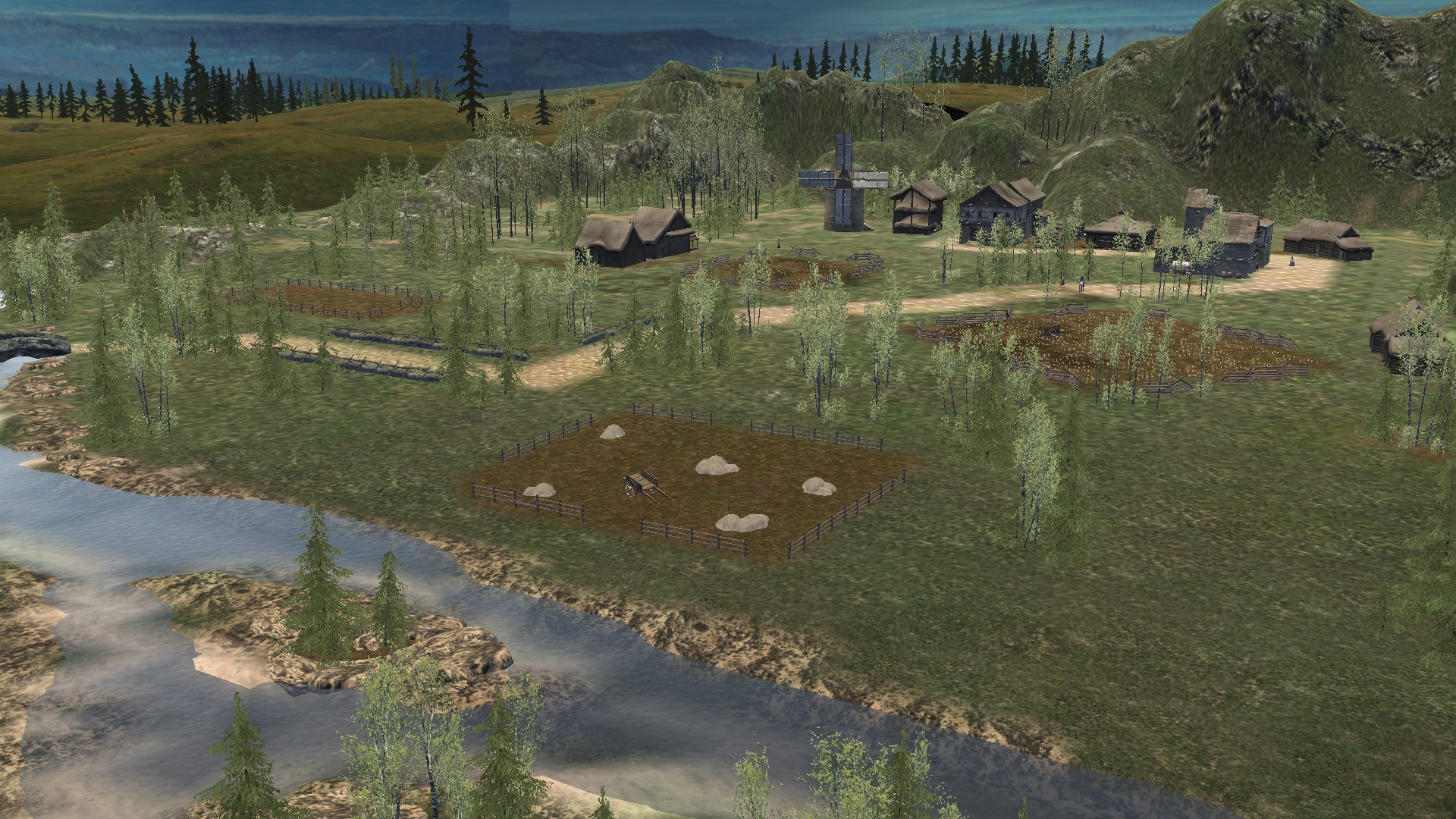
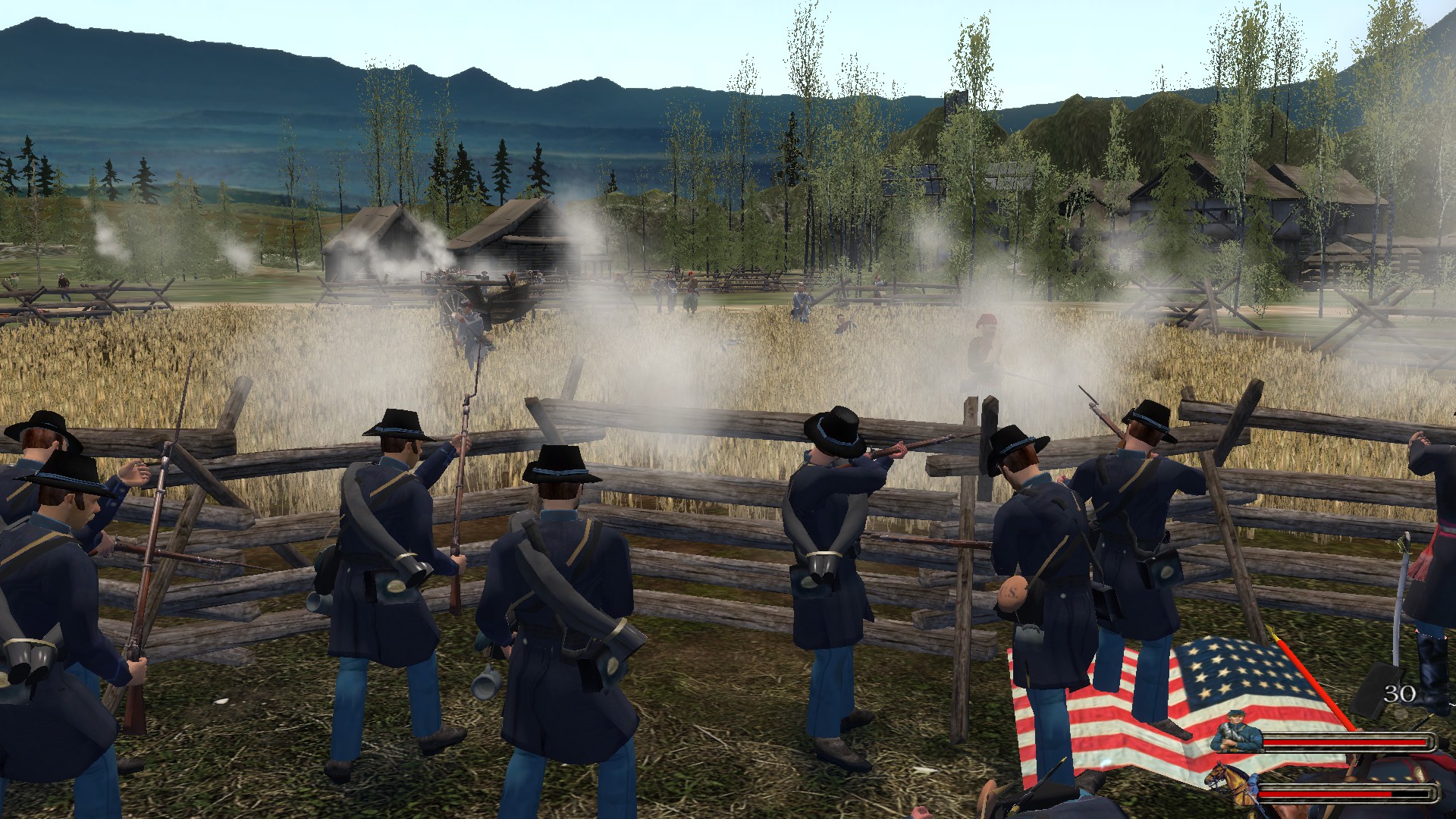
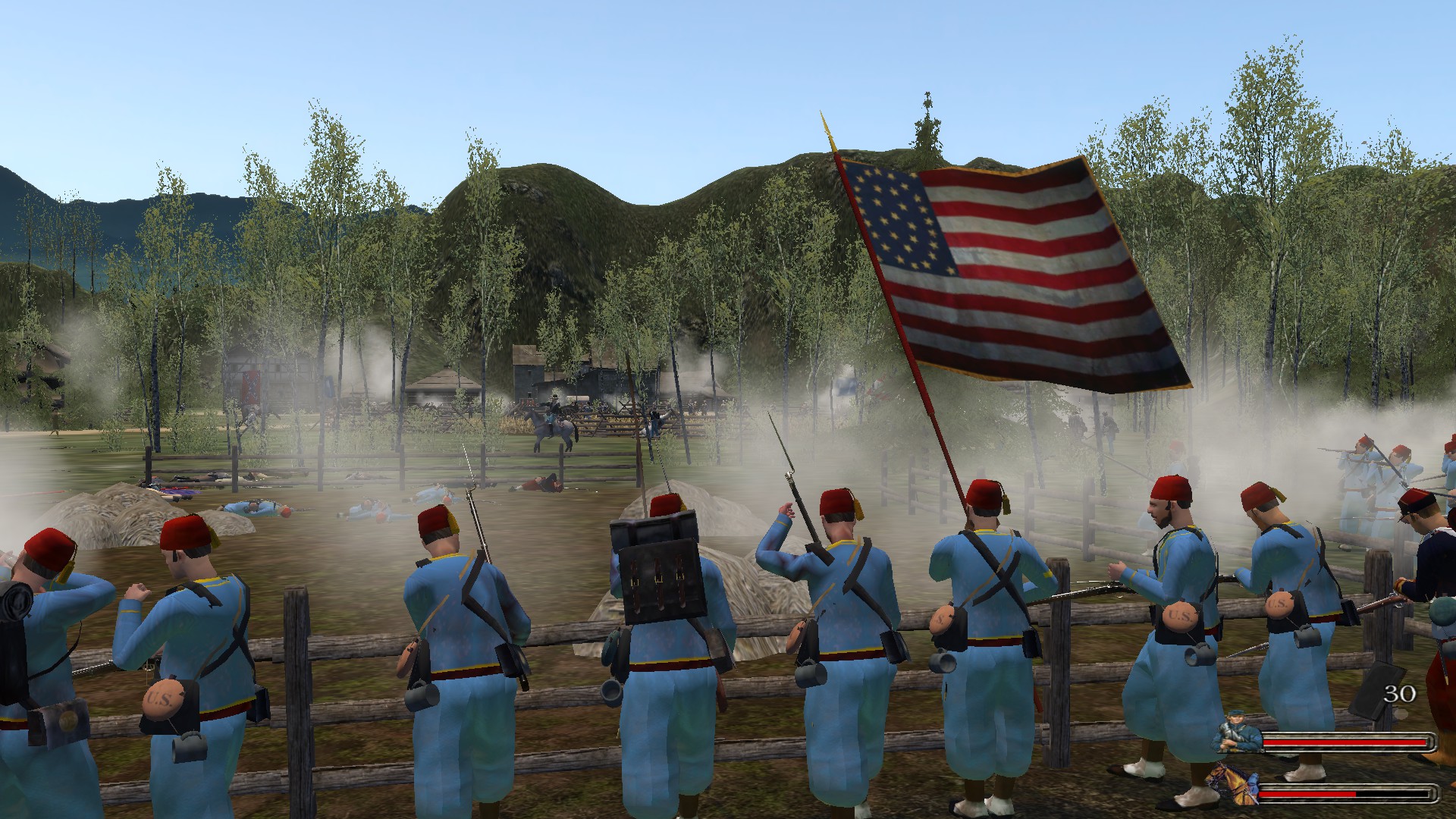
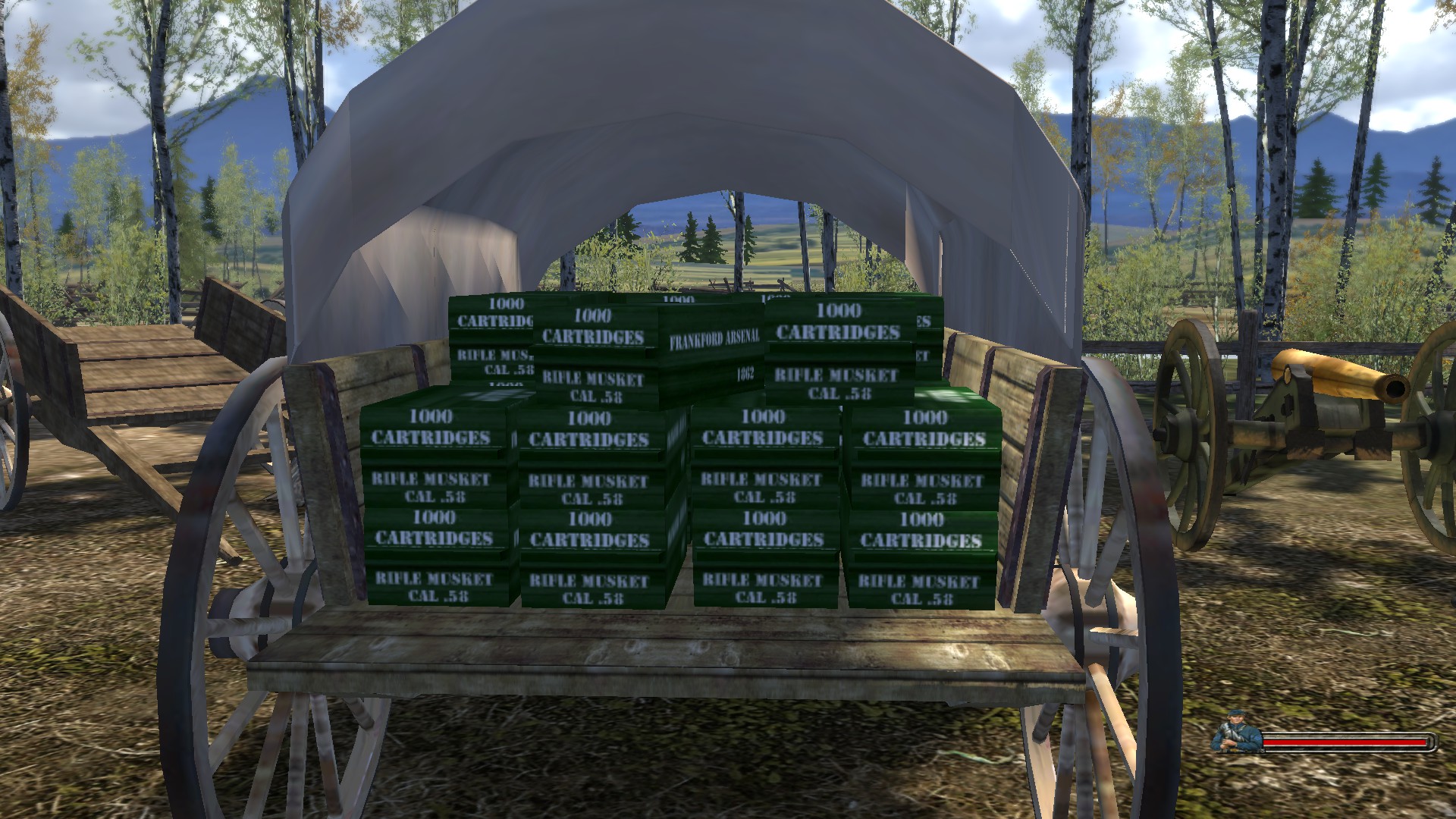
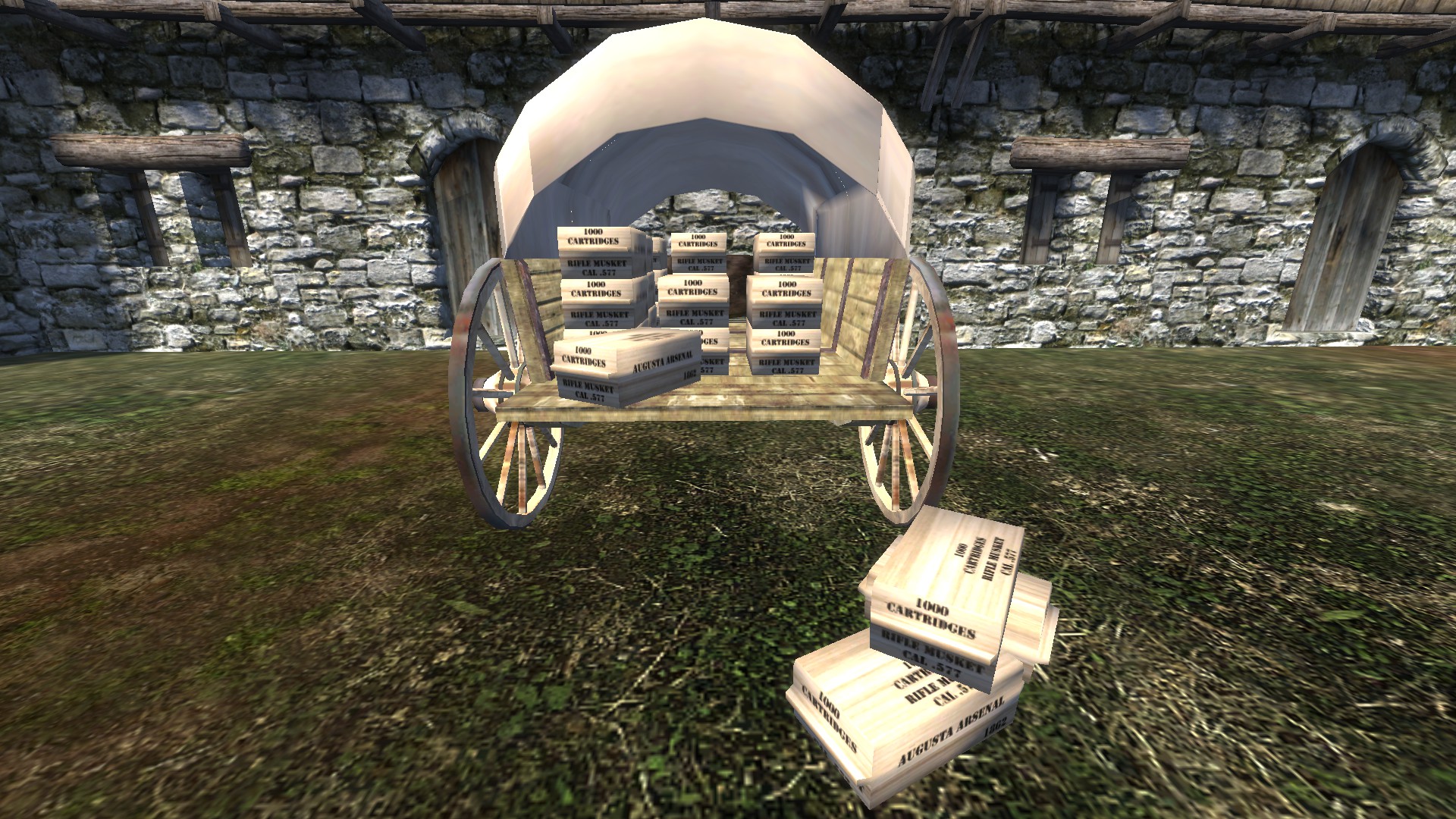
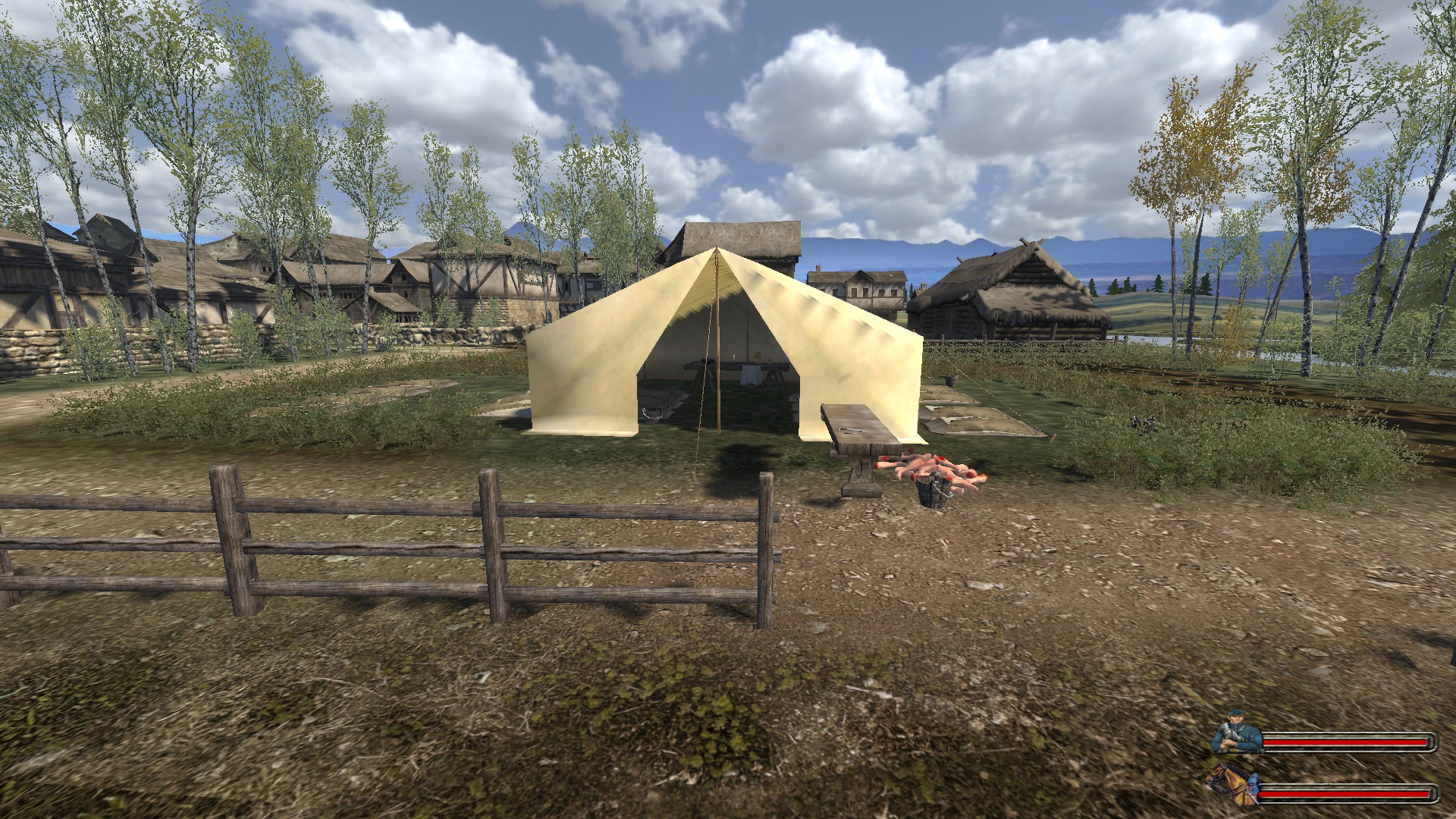
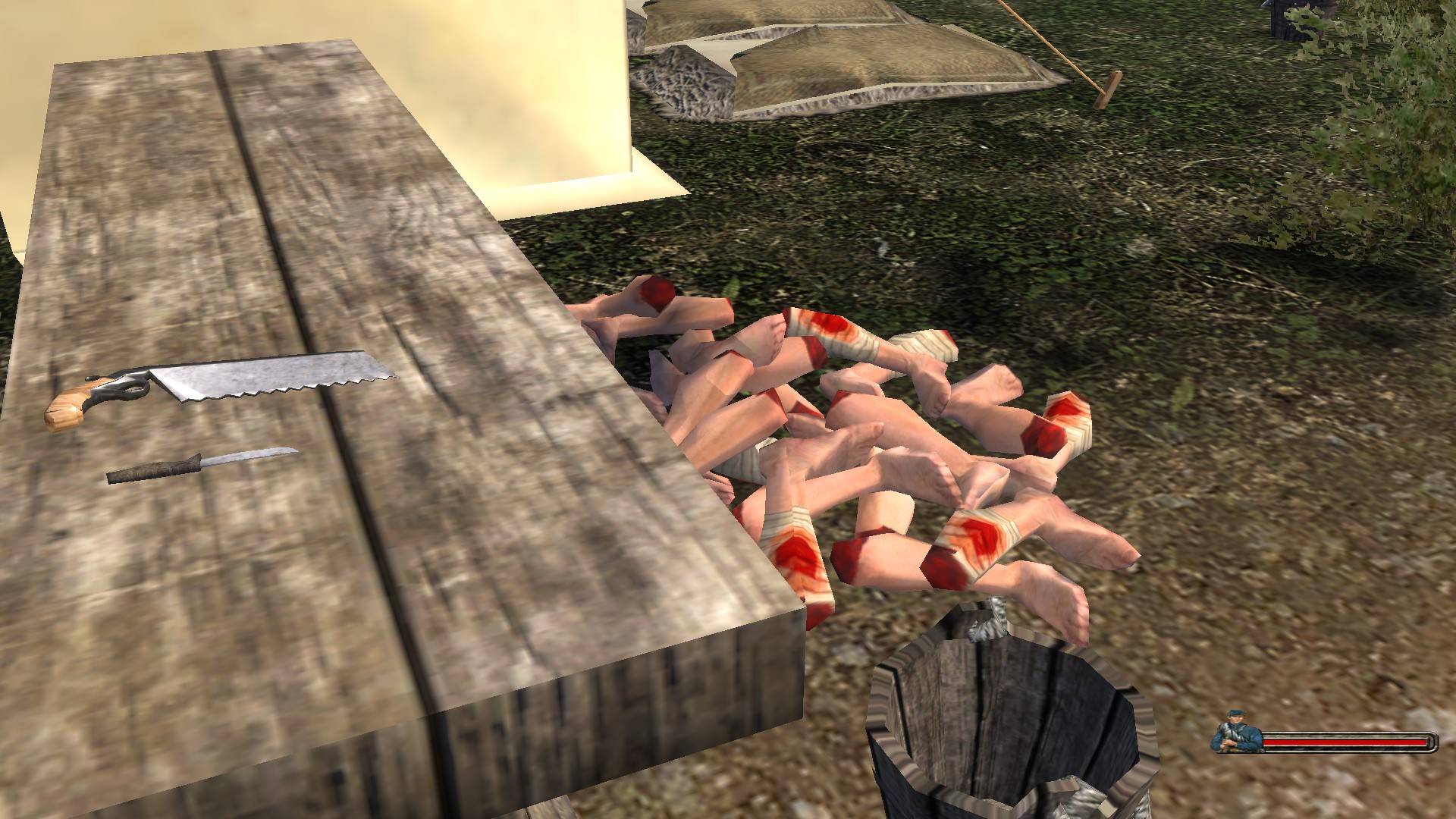
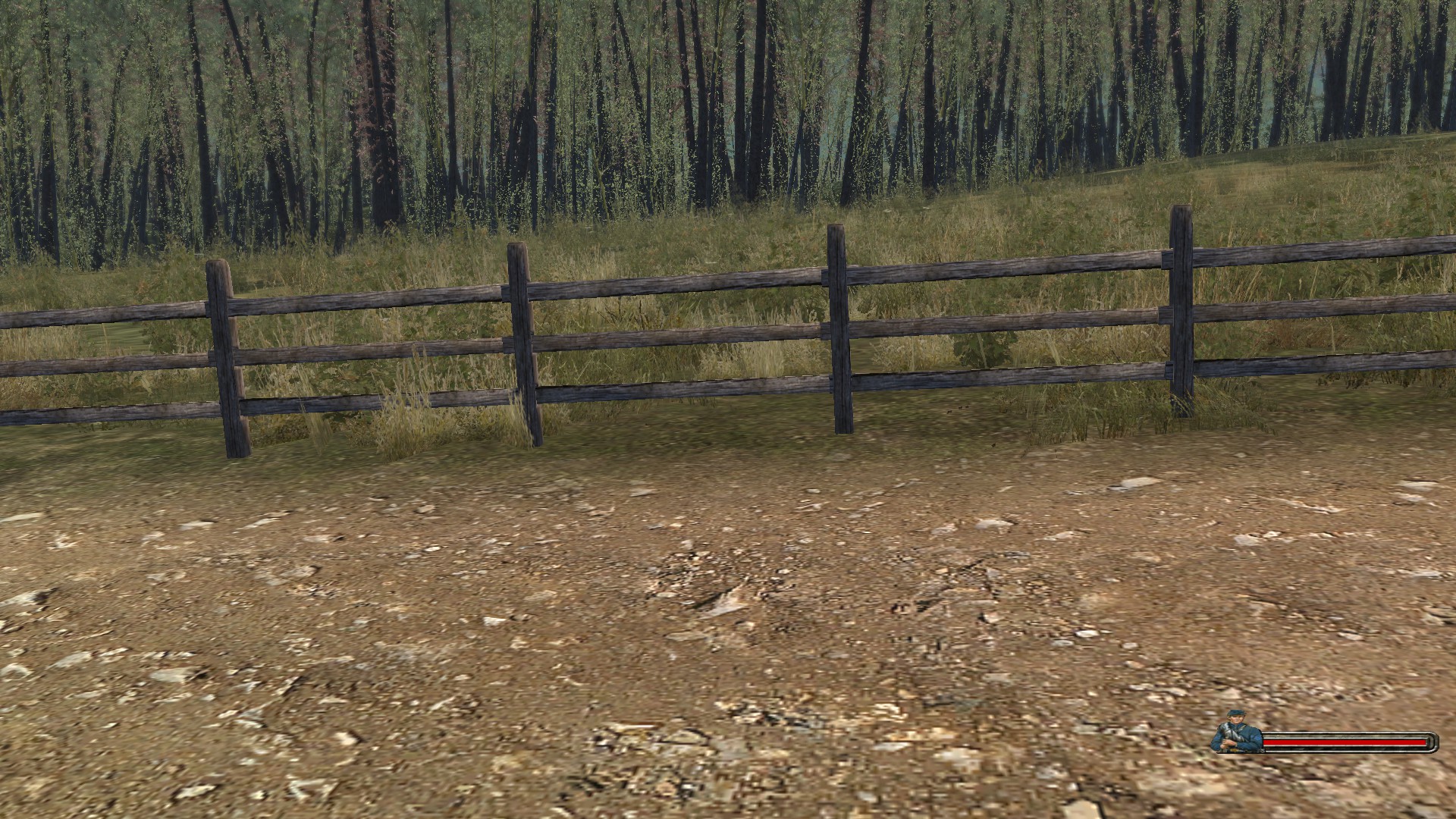
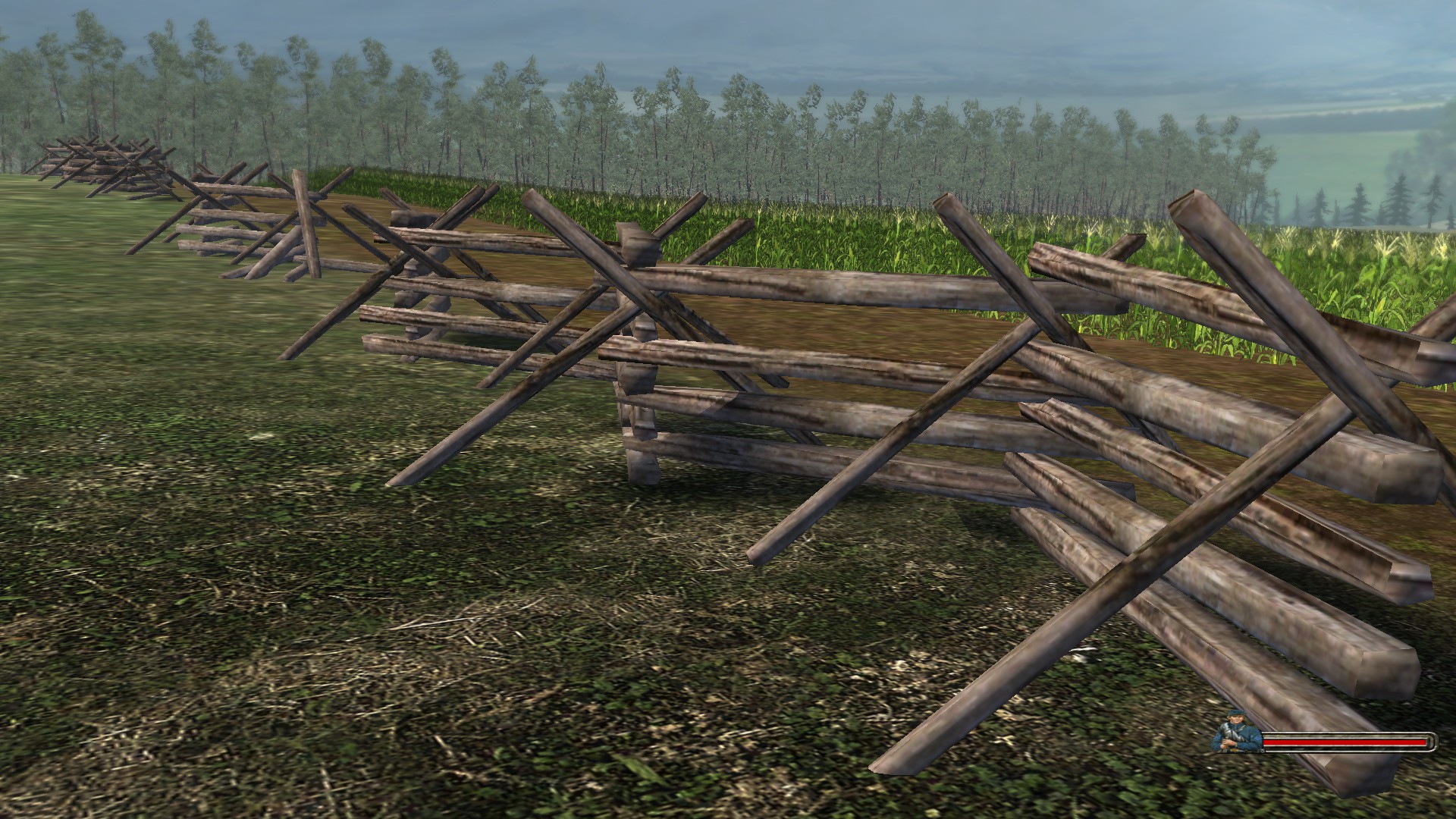
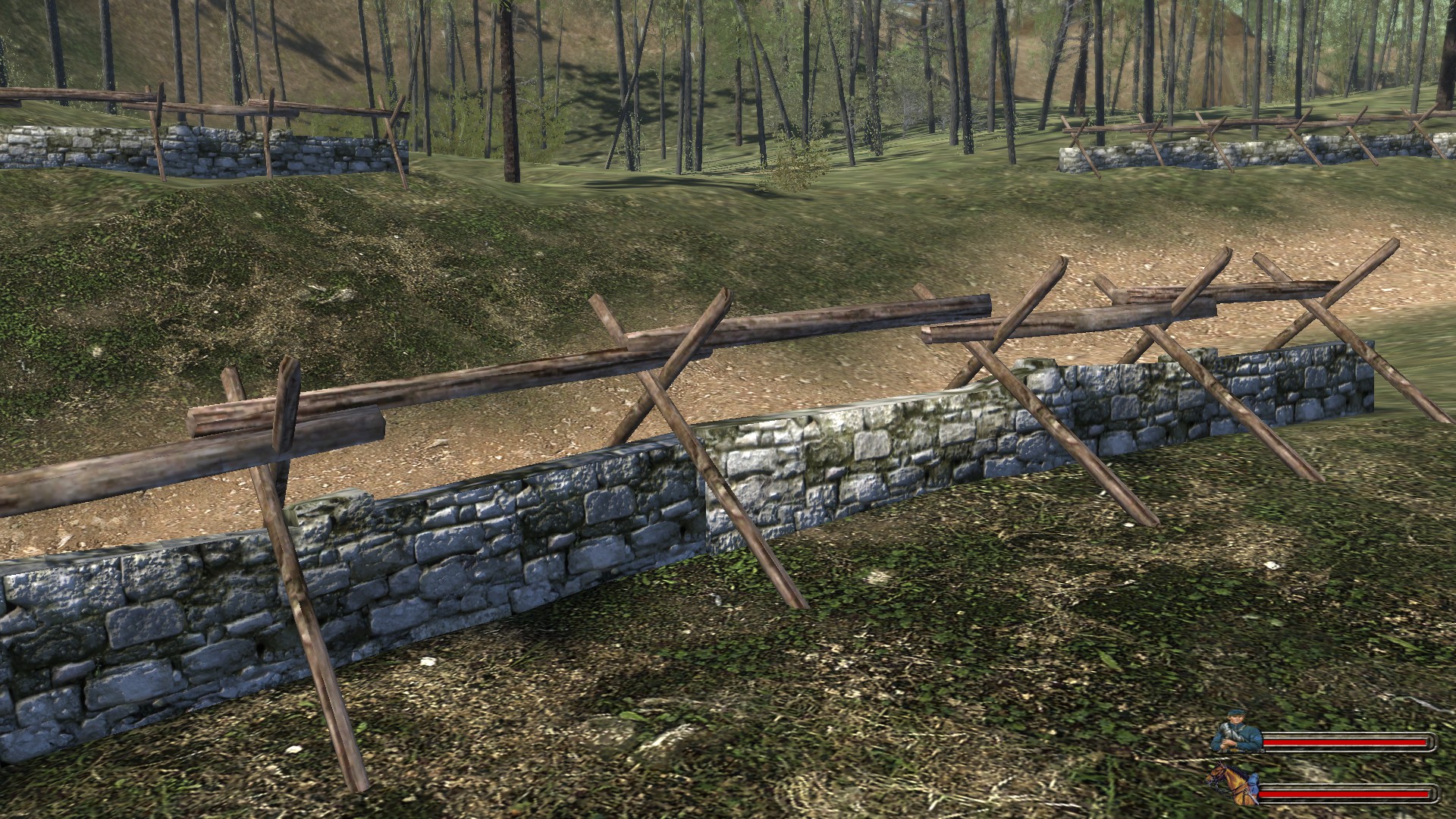

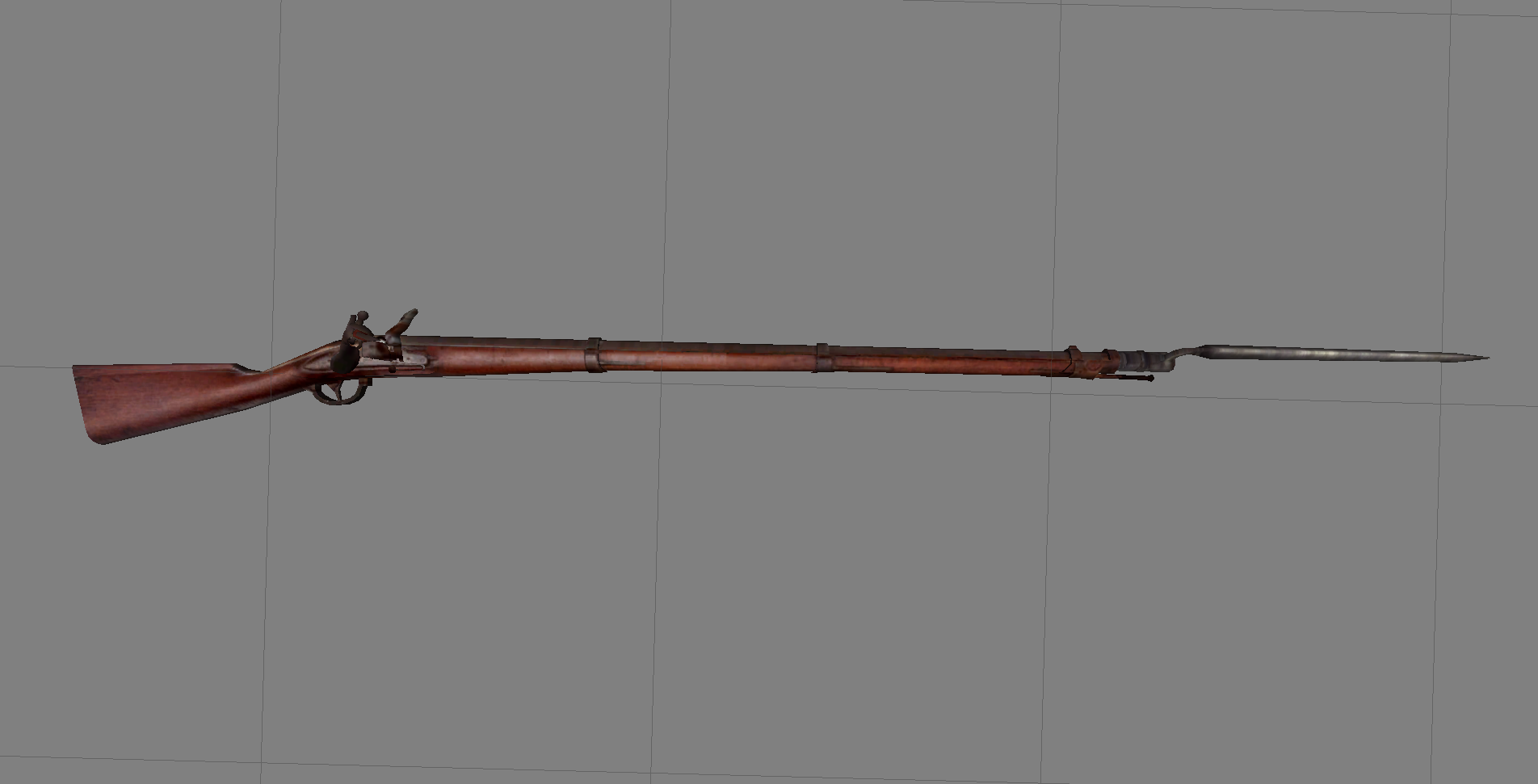
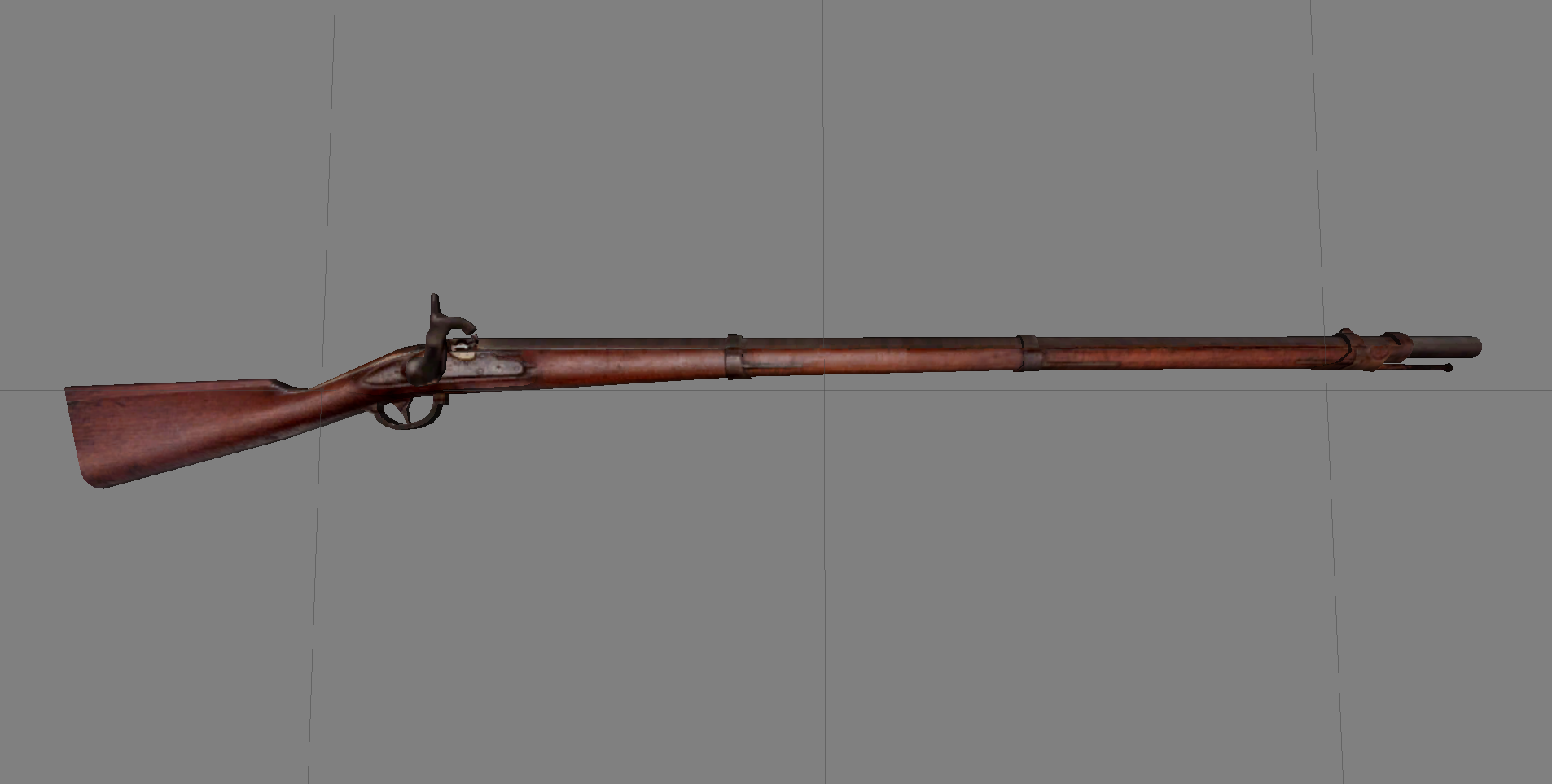
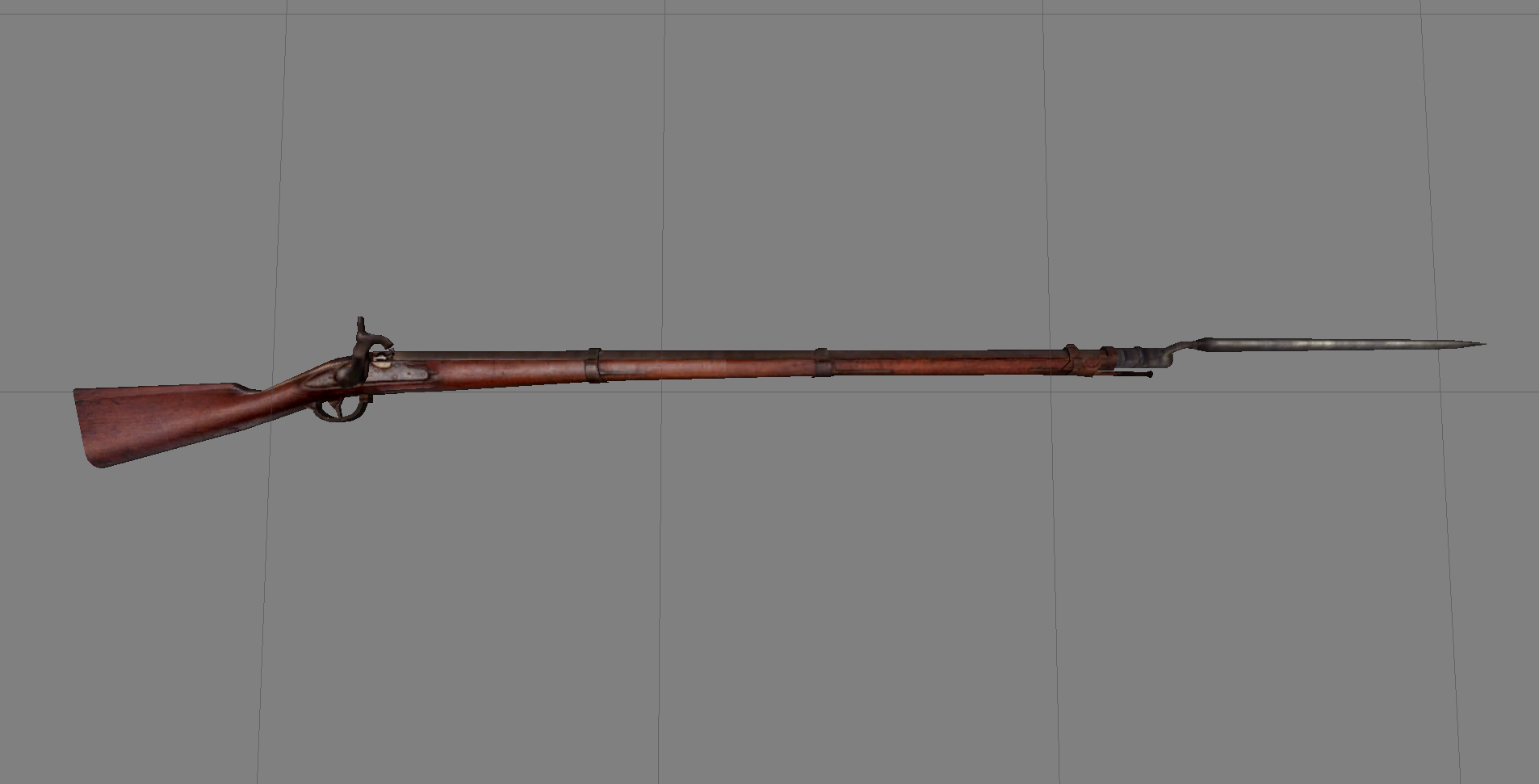
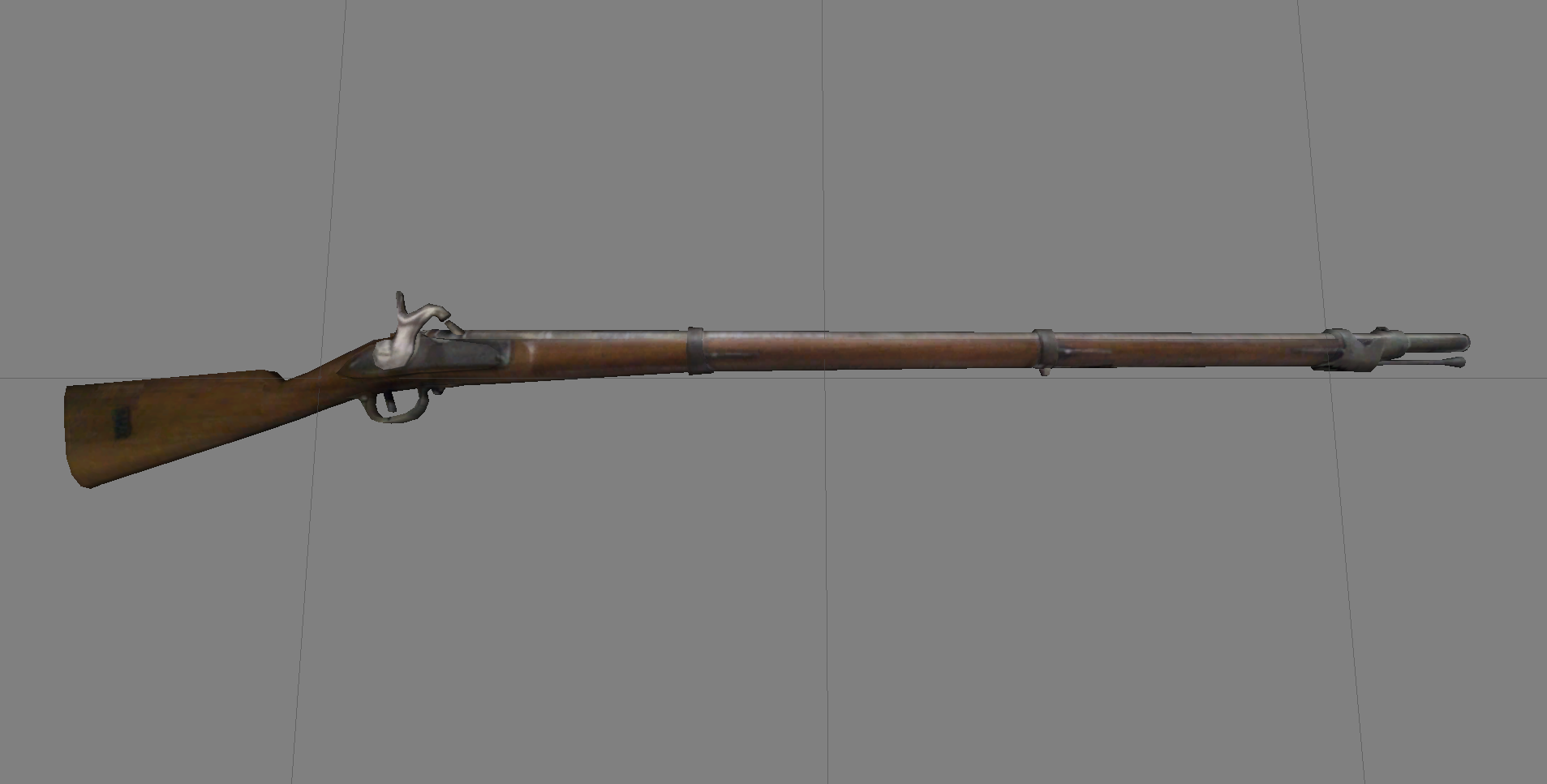
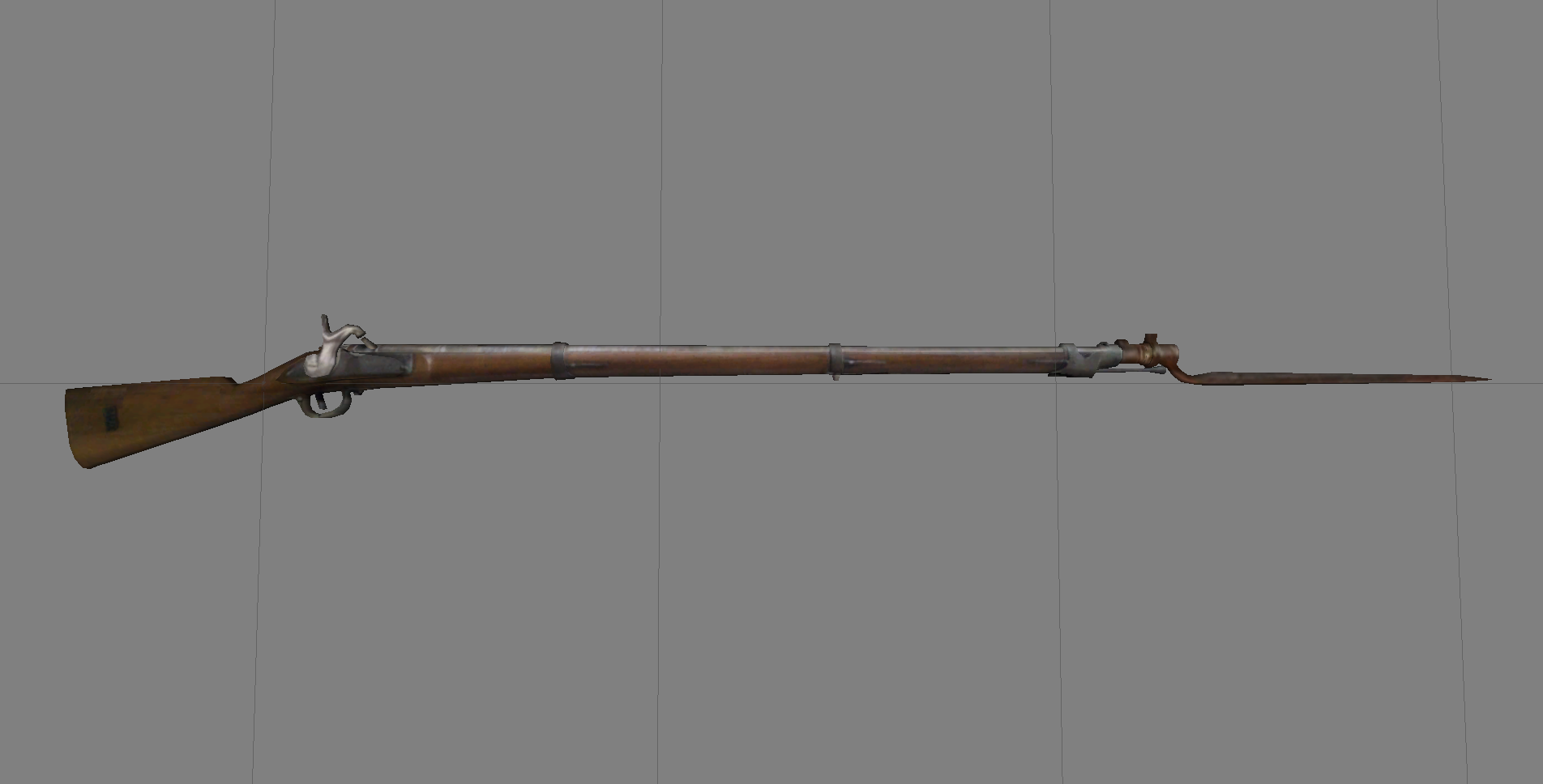

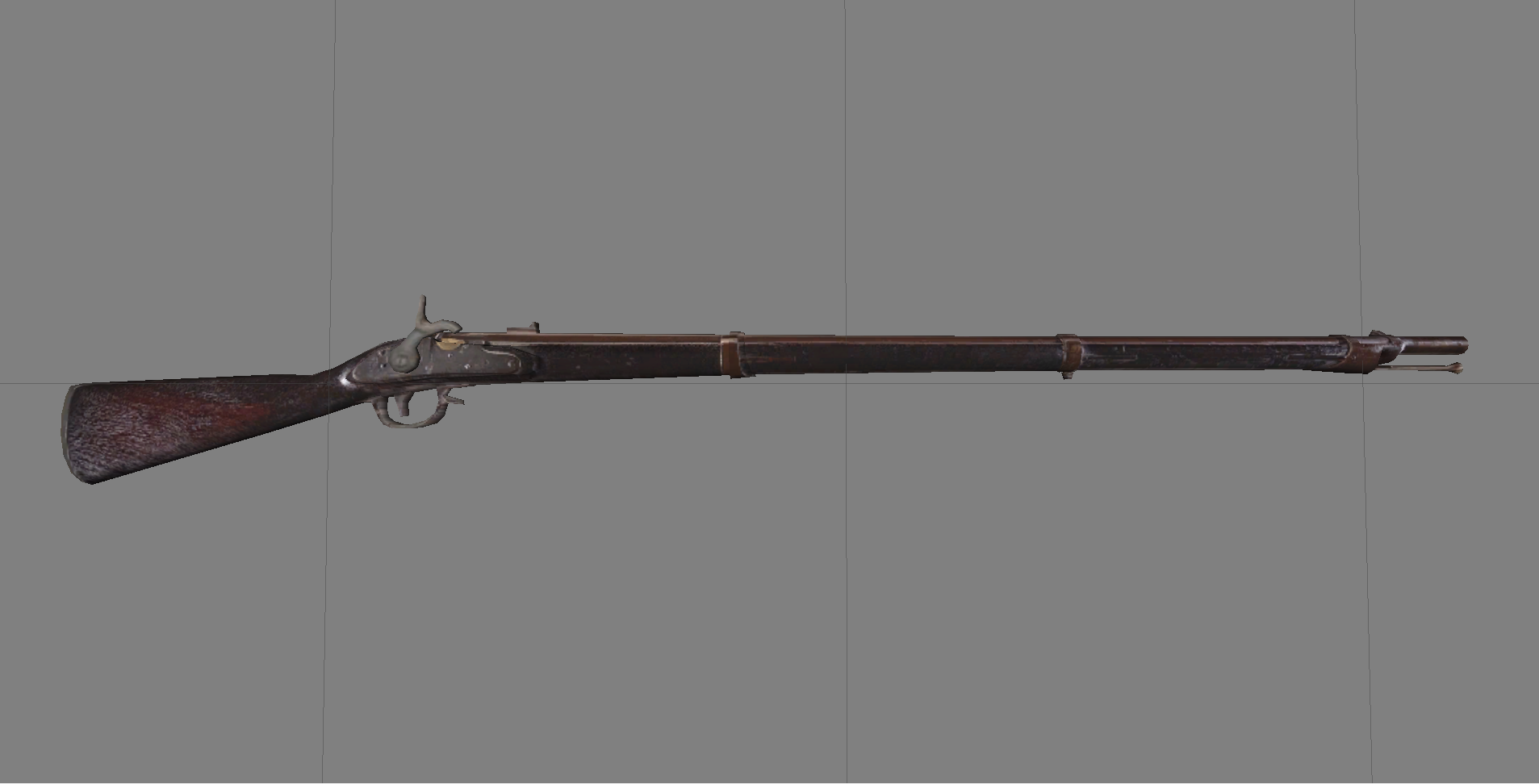
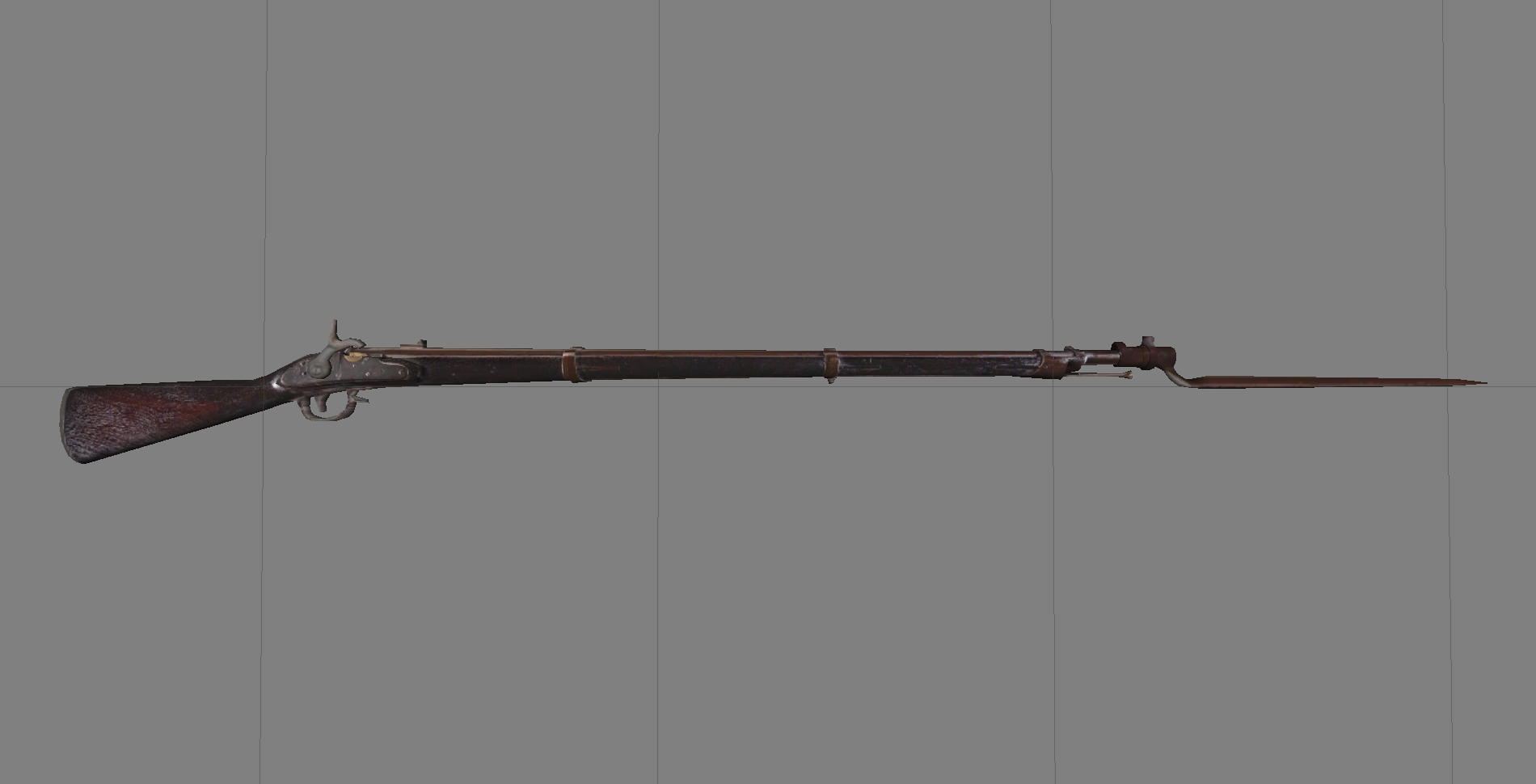
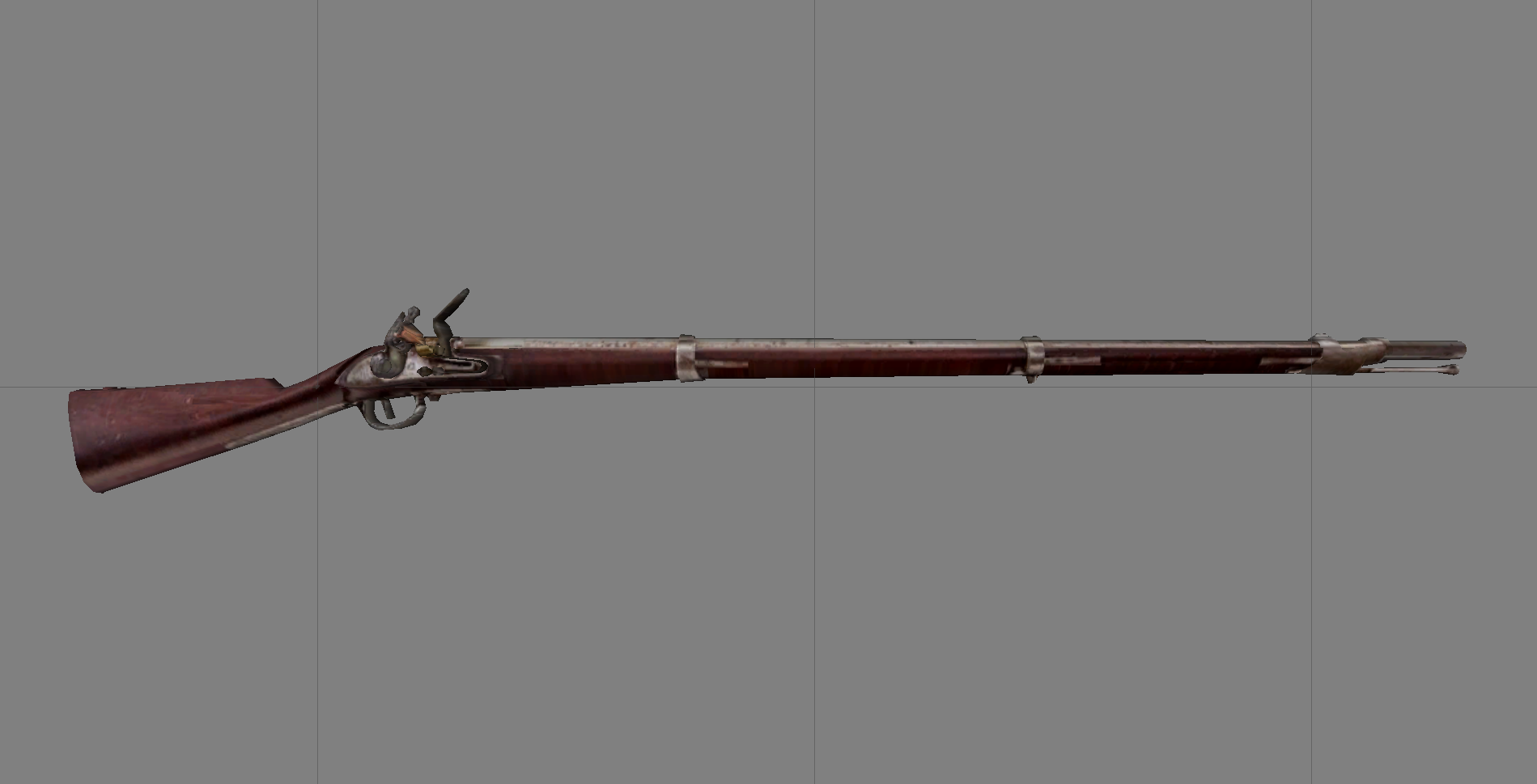
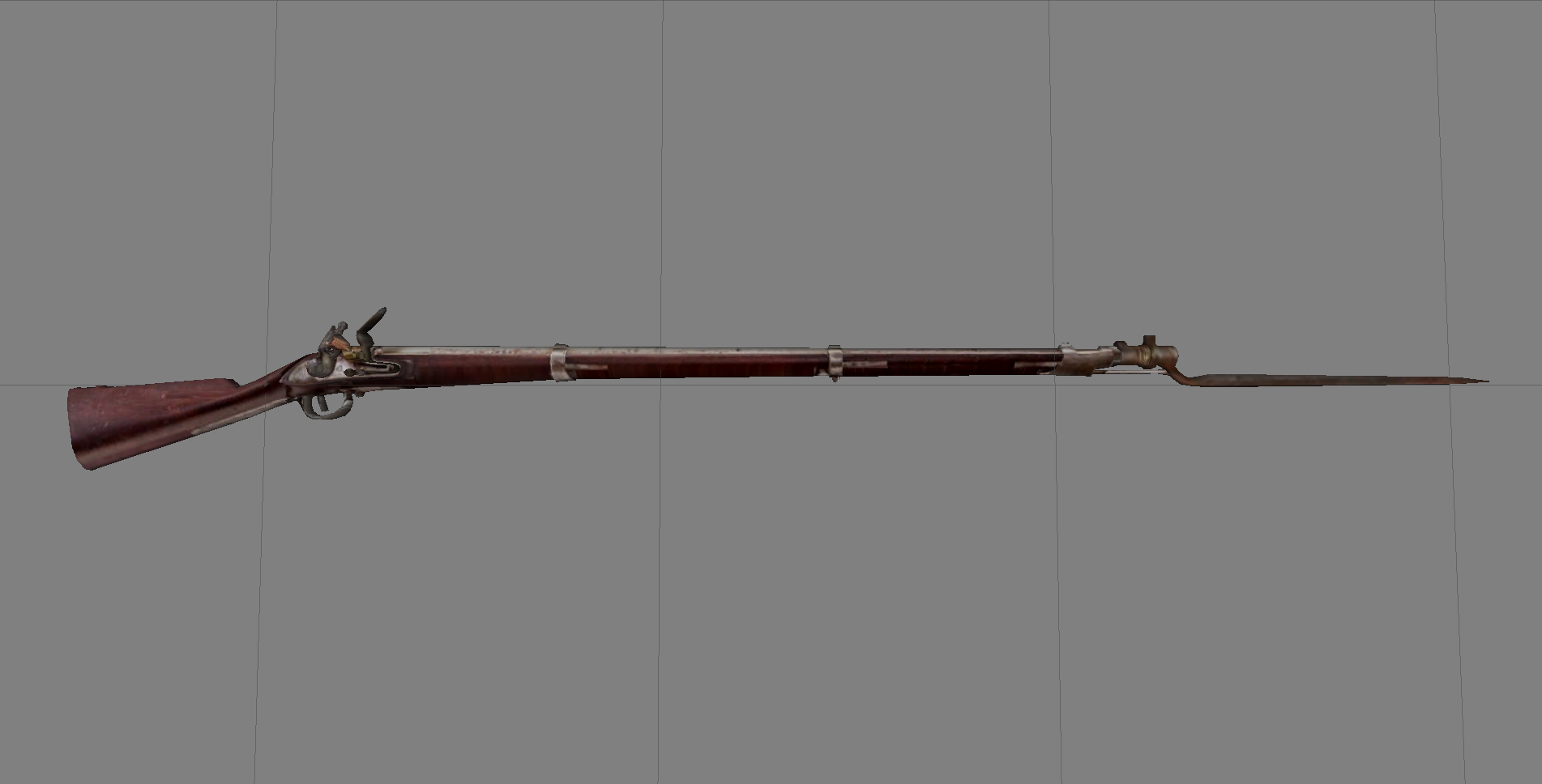
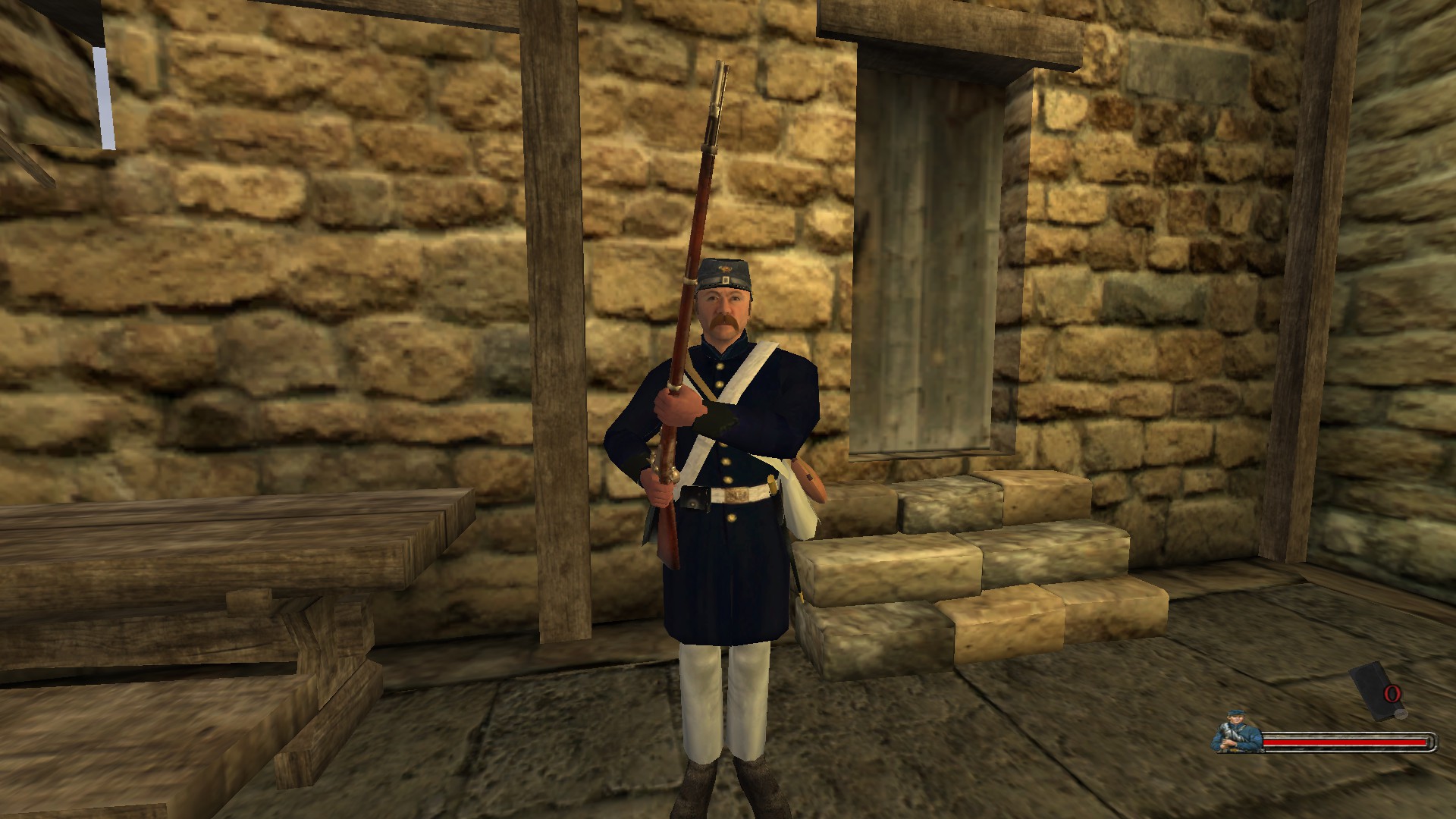
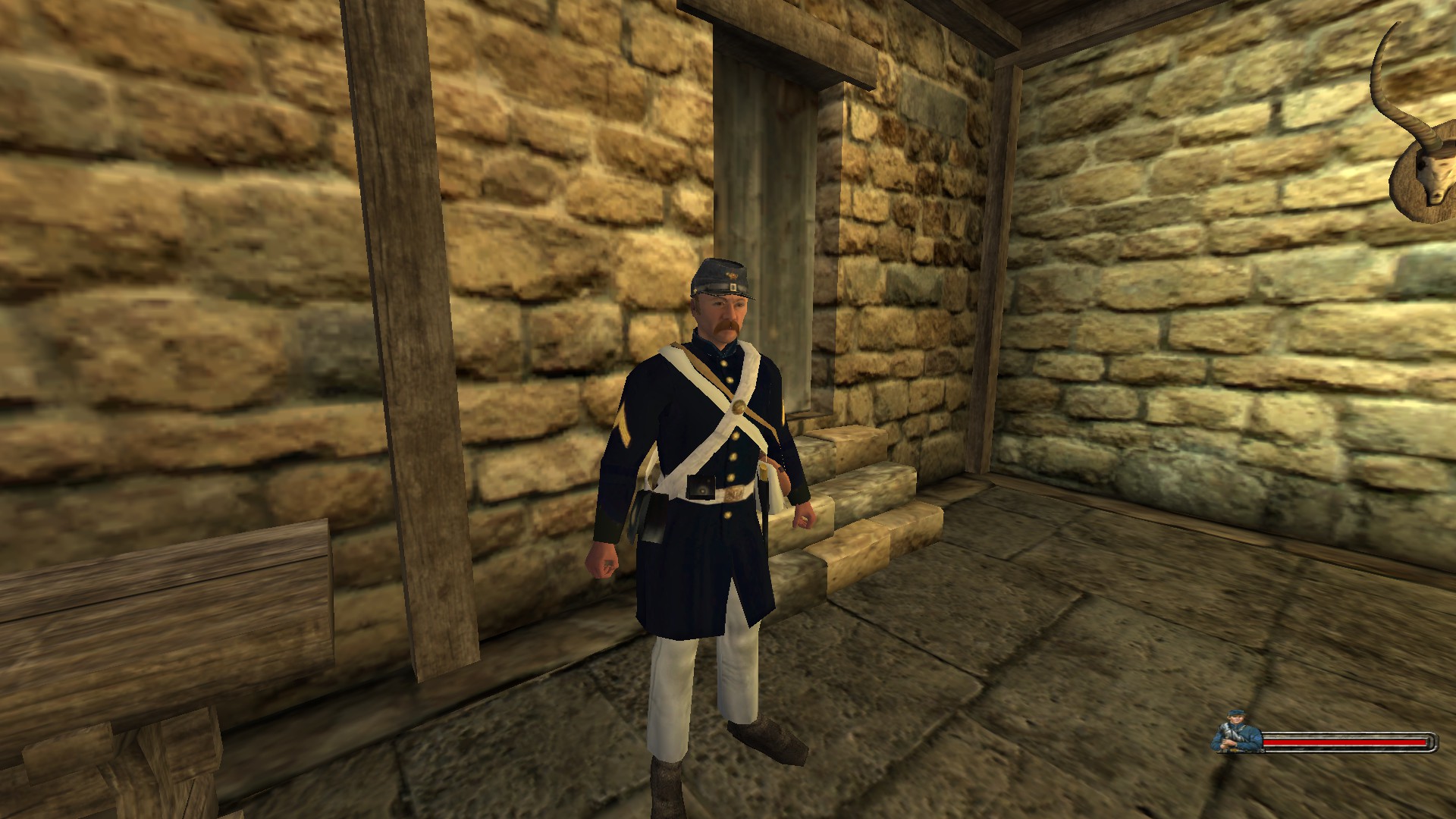
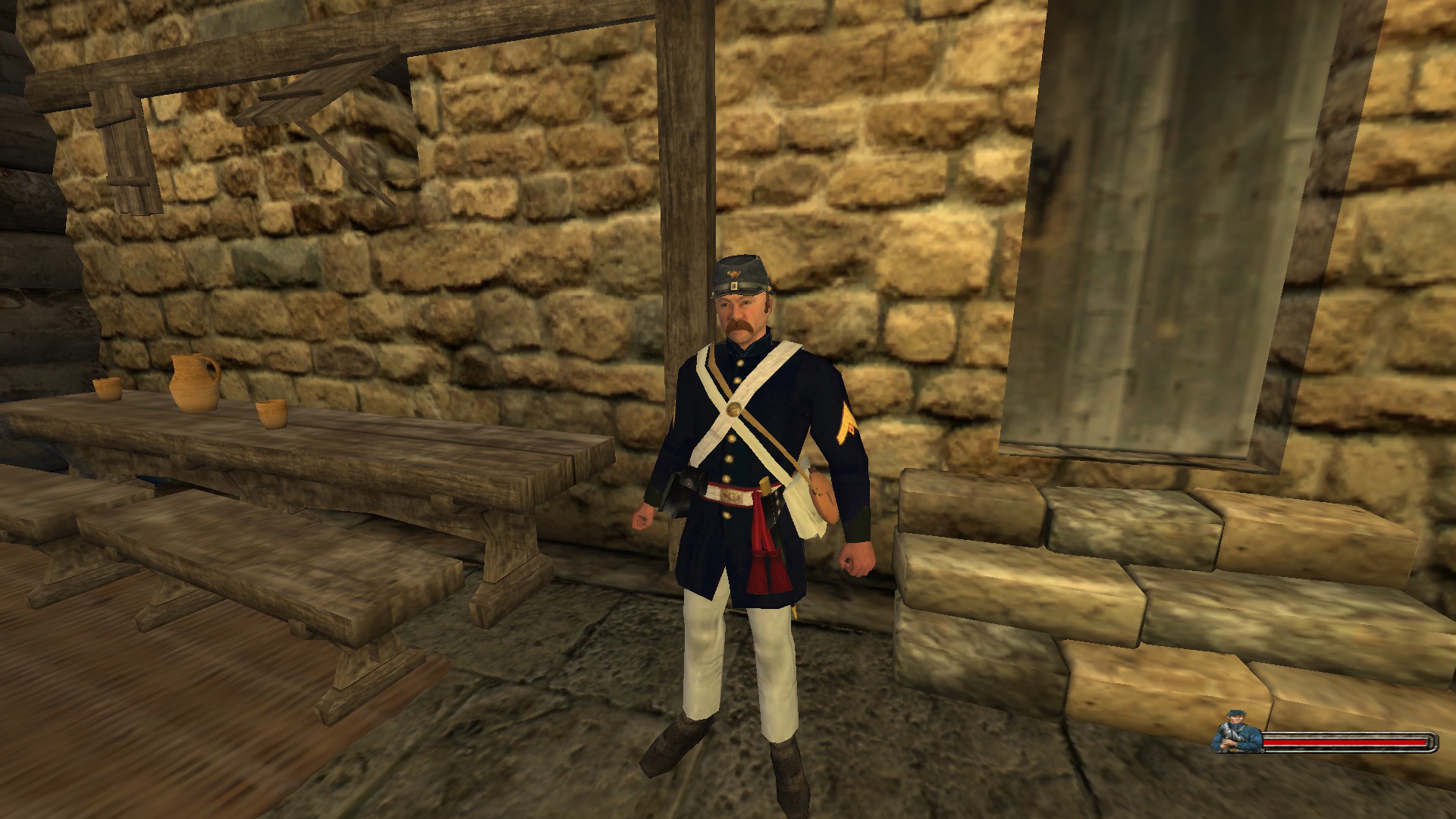

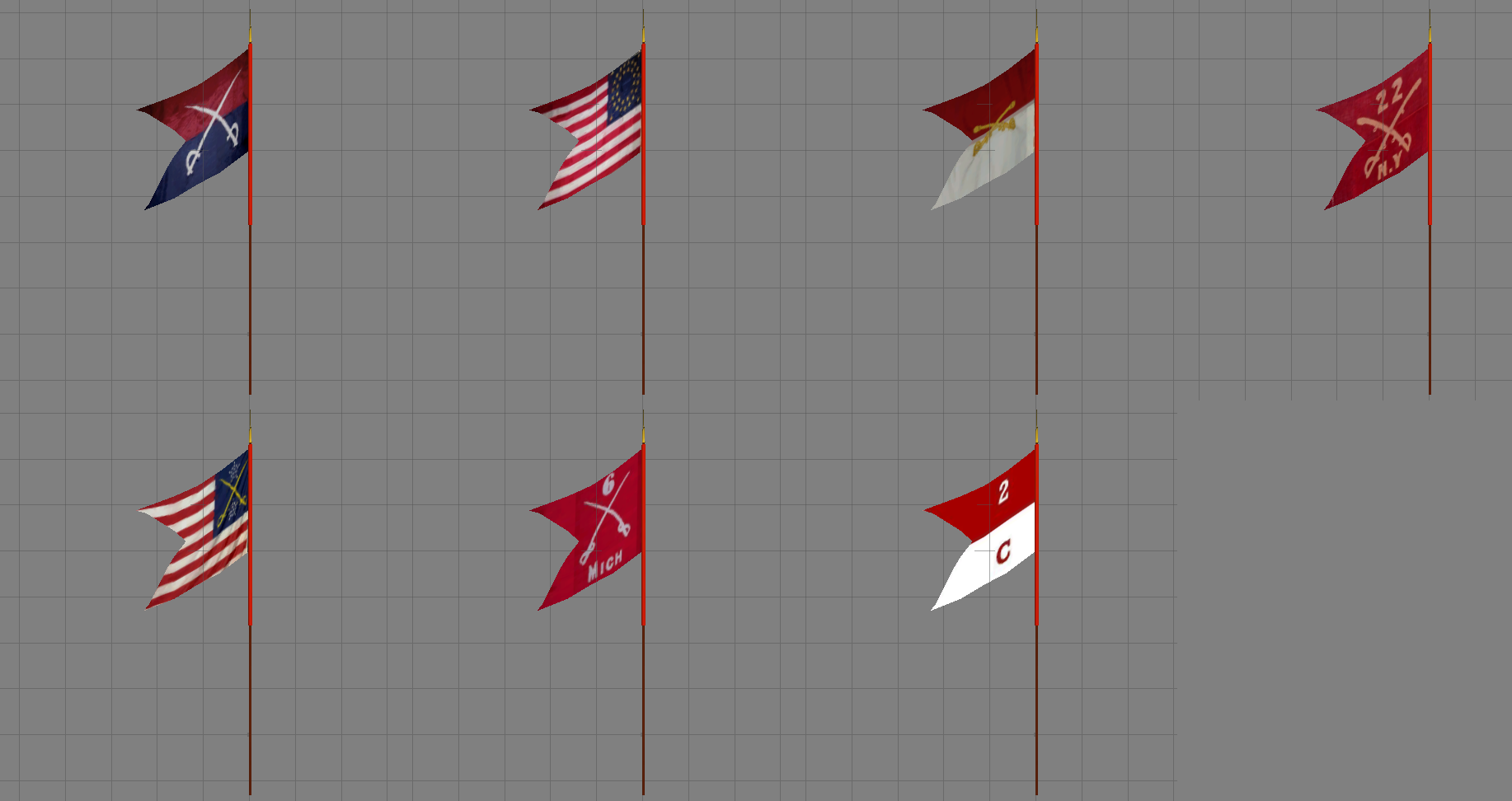
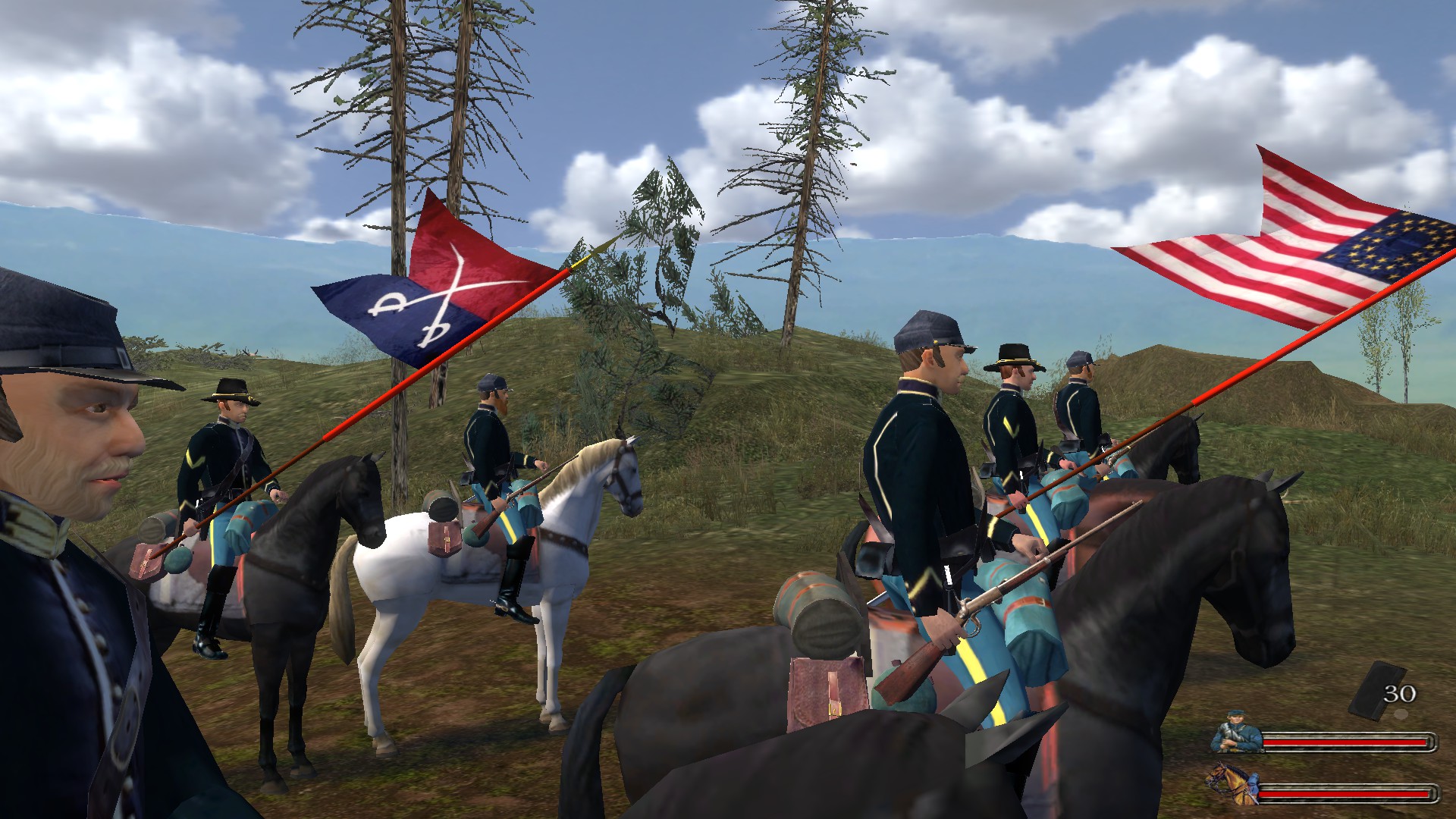
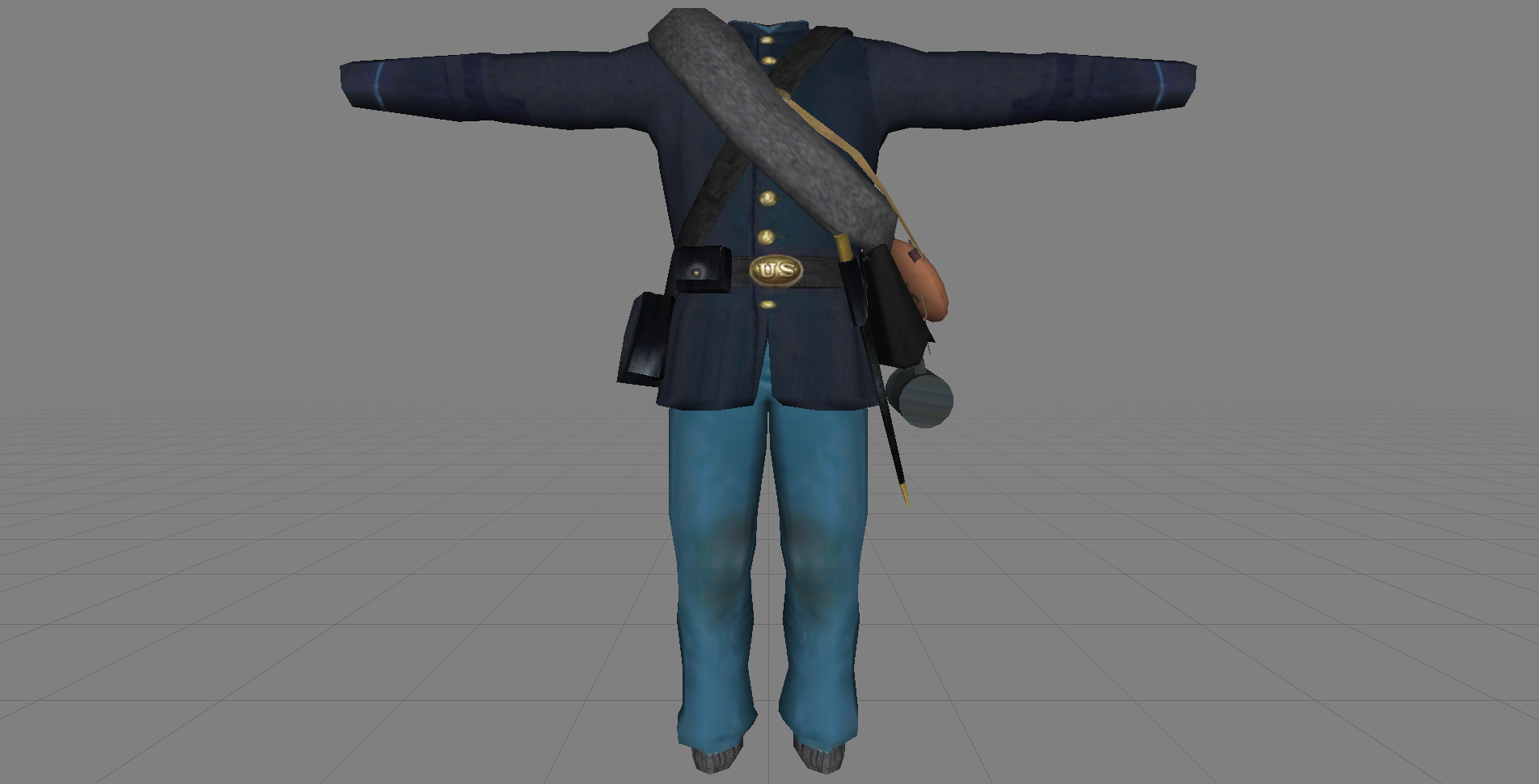
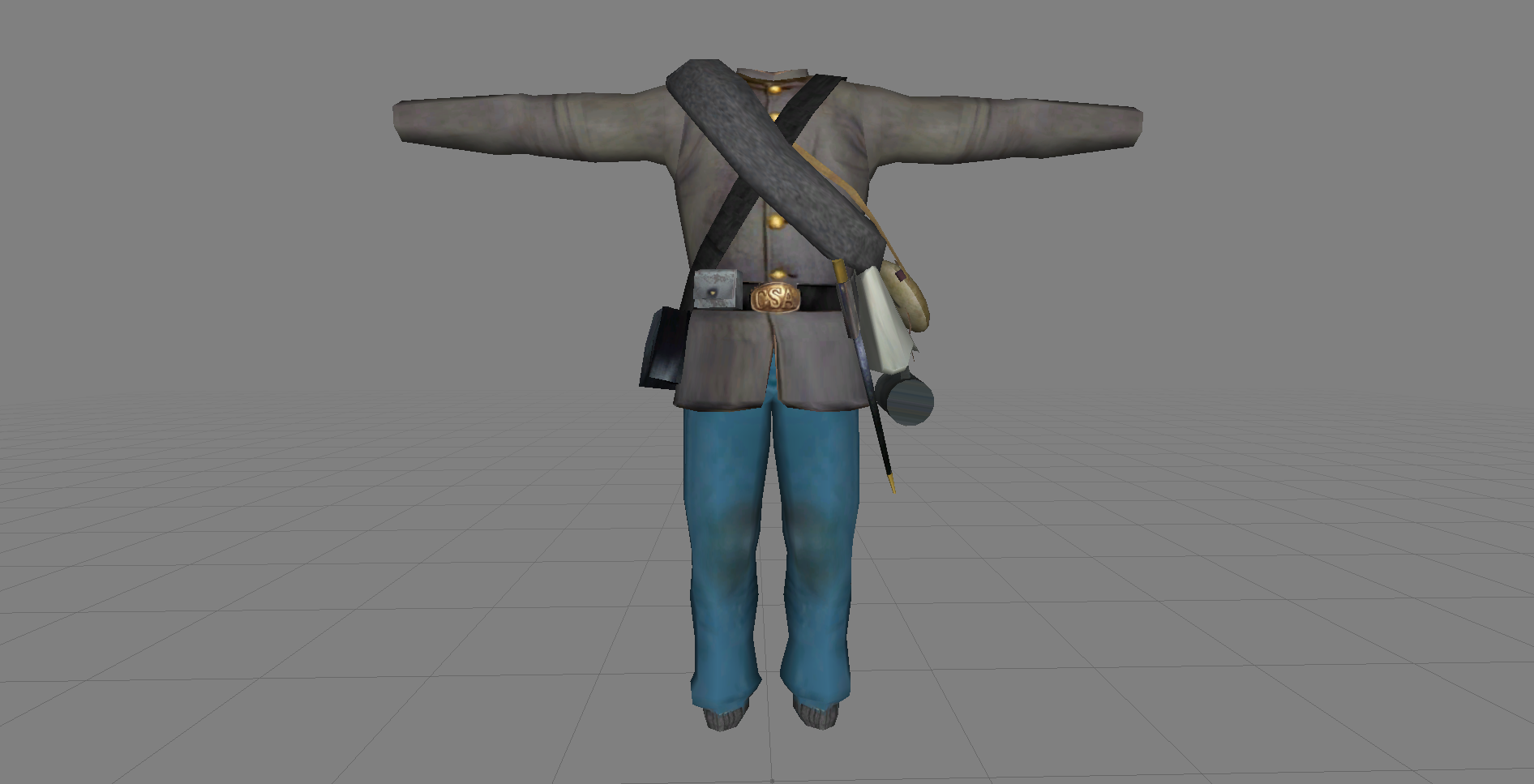
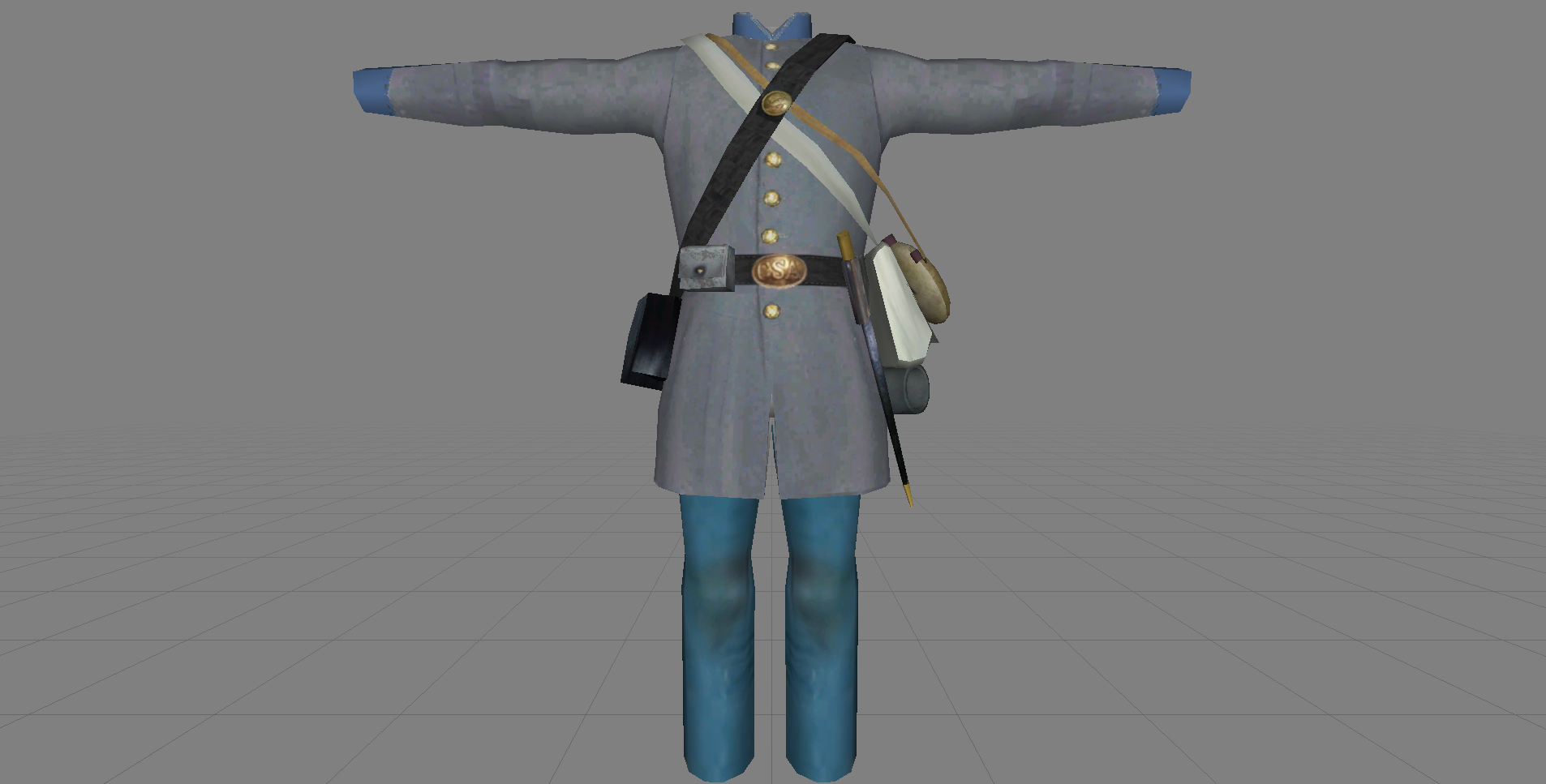
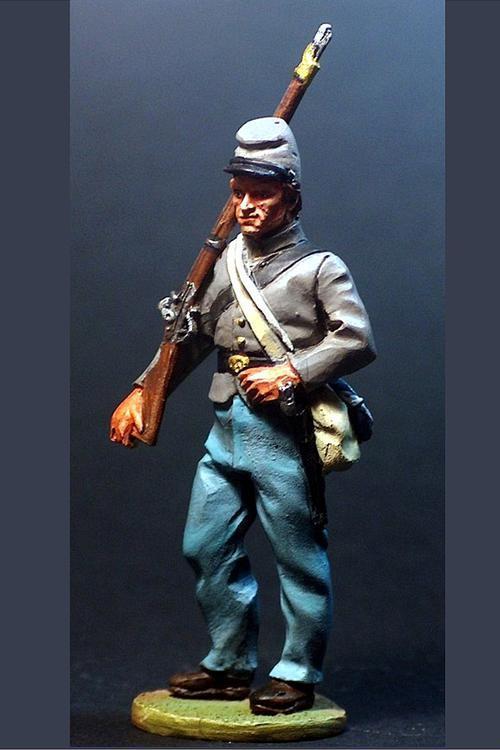
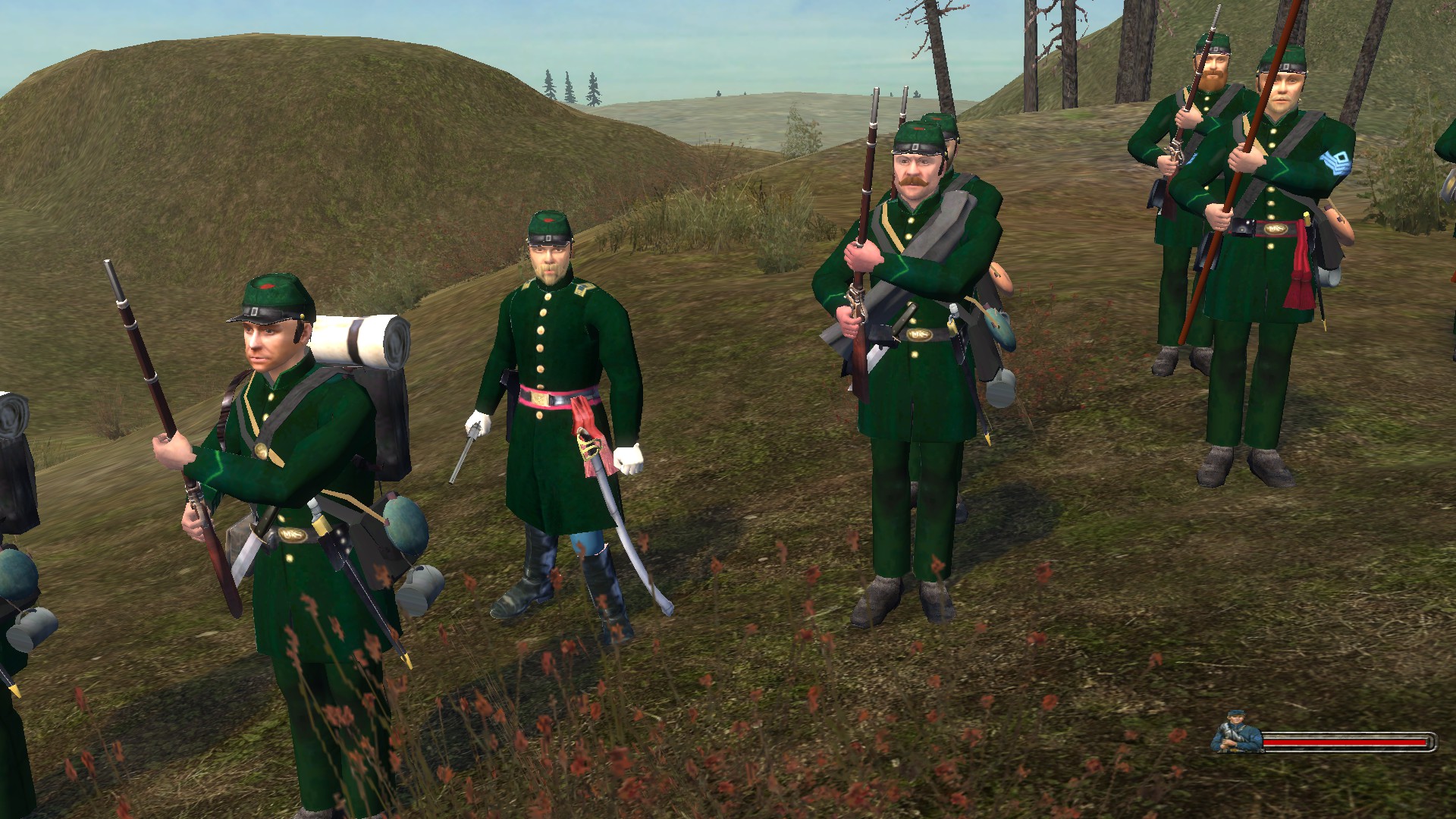
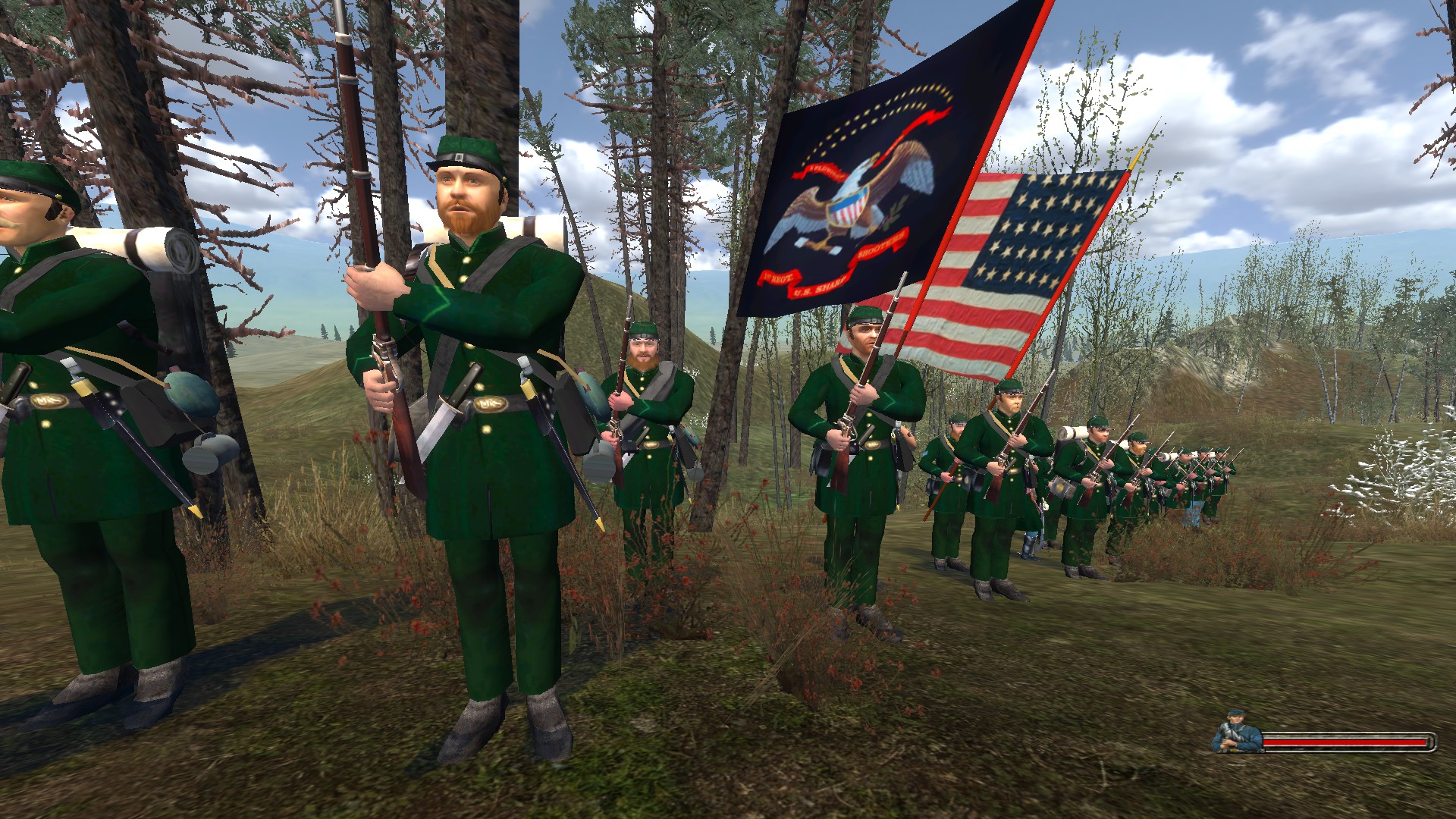
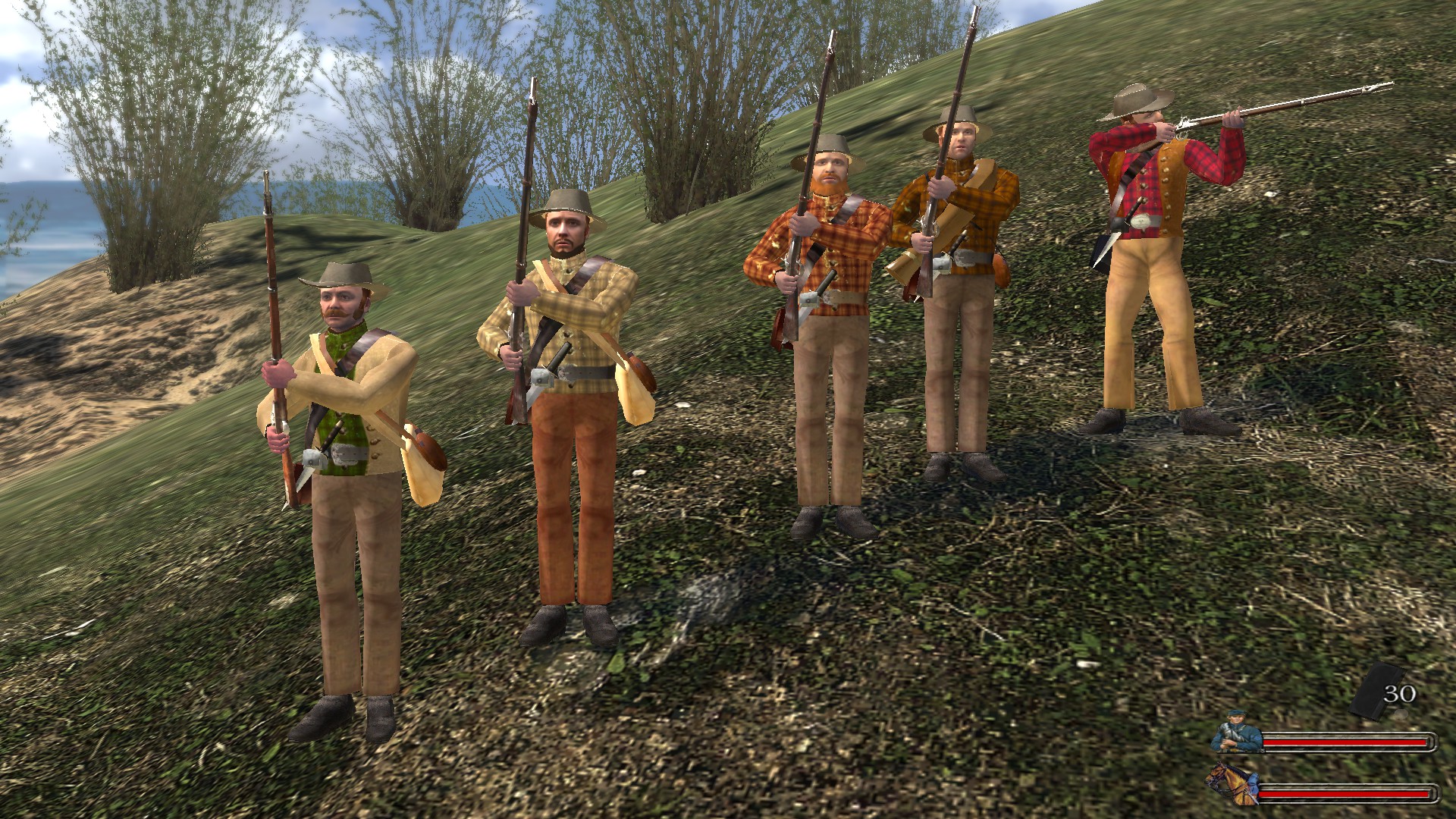
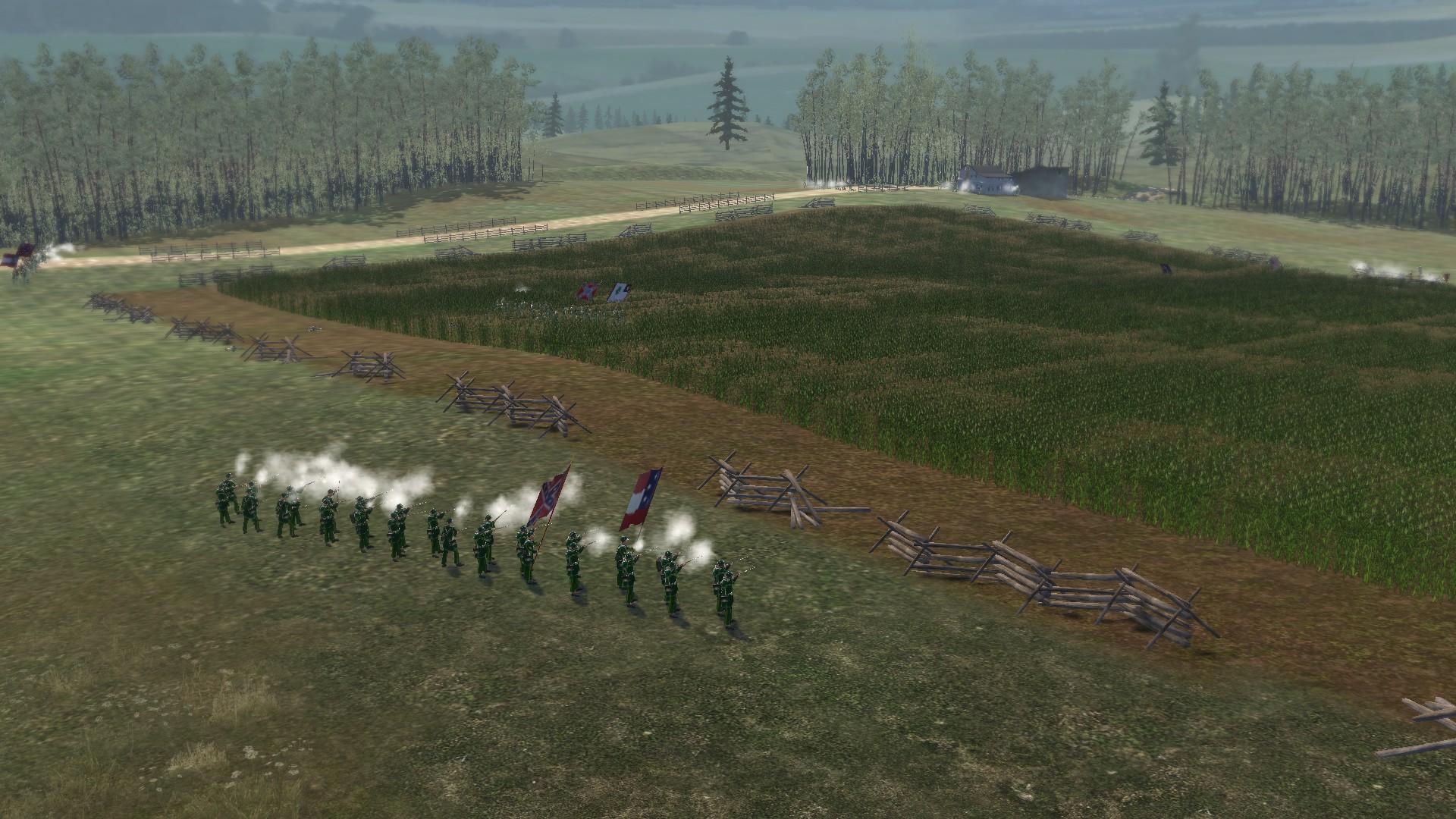


This is all seriously juicy!
Thank you, glad you like it! Enjoy playing the mod :D
So... I've played for a few days and except for the caravan master/caravan bug I haven't encountered any real issues so far. It becomes harder to get certain items though, the more units with custom gear are added.
In my current playthrough it's nearly impossible to get some pants for zouave-troops from the vendors.
But again, you've done great with this update. I really like the new scenes and the variety of troops is also awesome. ^^
I also really like the Private Militia idea.
I recommend that if you are specifically looking for a particular item, to use the cheatmenu to open the itemfinder. It is much more preferable than going from city to city, hoping the shops have what you're looking for.
I'm glad you're liking all the new stuff in the mod! We have more exciting things ahead and it is looking good. :)
Well... could be my own stupidity, but I can't figure out, how to get into the cheatmenue. ^^
You know, I'm always hyped for the updates! At this point you have already achieved a lot. It's just great to see this project grow and getting better with every step.
Oh, you just need to press shift + ` when you are on the world map and then type "cheatmenu" into the little box that pops up and press enter.
Thanks for supporting us, we always appreciate it. :D
Thank you for the hint on this.
But sadly the game crashes, when I reach the page with the zouave pants. ^^
we were aware of this, this will be fixed as of next version.
it concerns as faulty mesh of a scabbard, u might be able to fix urself, in itemkinds1.txt
Holy ****, now this is an article to a mod! An astounding amount of work, I dreamed about a mod like this, thank you.
Thank you for your support! We share the same dream and have decided to make it real. It is a gift for all mankind. :)
Played for a few hours. First impressions are great. I think the most important thing with this mod is that the combat is really fun and interesting.
The few things I noticed as minor issues:
When a drunken person in a tavern attacks you he drops a Nordic Sword.
Most of the rifles and muskets look very similar in the inventory. Similar in that they all kind of look like sticks. You get over it once you figure out what it is but I thought I'd mention it since I did notice it.
Battle size is limited to 150 by default. I don't know if this is intended or not but the larger battles feel lacking as a result. Along with that there are some maps that are cramped and littered with stuff the AI gets stuck on or in. One Indian village being an example where cone like housing can trap the AI inside of it.
The vendors run out of money quickly. I think it would be a good idea to increase the amount of money they have. Especially considering the size of the world map. Running from one city to another to finish selling off your loot takes a lot of time and makes any large army that is not primarily cavalry a real chore to move around the map with. Especially when raiding Indian villages.
That gets to the size of the world map. It's very large. But as a consequence also very empty in certain areas. The faction armies are not enough to fill it up. So if you happen to have a stack of 30-80 soldiers there is not much for you to fight if you don't know where the fighting is going to be. So wandering off on your own and not going with either Northern or Southern armies can become quite lonely.
I don't know which stage of development you are on so maybe all of this is not useful information but I thought I'd leave feedback.
Hello! Thank you so much for you support and your feedback, it is always very much appreciated. I will try my best to give you satisfactory answers for all the issues you've raised.
The nordic sword is an easy fix, I'll just change the mesh and the stats for nordic swords to be knives.
If I can find a way to have a better preview image for the weapons in the inventory screen, that would be great. Hopefully I'll stumble across the information I need to do it one of these days, or maybe someone will mention it to me.
You can change the size of battles with the warband battle size changer. 300 is the maximum I use though, because more than that starts to cause framerate drops. You can use the tool's slider to set it to whatever your computer can handle, I think the maximum is 1,000.
Not all scenes are finished, the majority are from the original, dead version of the mod that this one is built on top of. The ai getting stuck on fences or buildings is actually something I have recently figured out how to resolve. There is something called an ai mesh, which is essentially a grid on the map that tells the ai where it can and cannot walk. Any areas not covered by the grid, the ai will recognize that it is unable to walk there and will go around. This means I can now make sure the ai is able to navigate around fences and buildings, and I have already completed this task on several maps, most importantly the new Sharpsburg and Fredericksburg maps. Unfortunately, editing the ai mesh is a tedious task, and it is especially so on village scenes because the game will frequently crash while editing. I believe because there are villagers walking around the scene while I am editing the ai mesh, and that somehow makes the game crash. So as time goes on, more scenes will be improved and the ai will be able to navigate them without getting stuck. My main focus is on the villages that see the most frequent action.
If I can find out how to give the vendors more money, I will. Hopefully it's a simple change somewhere in the .txt files.
I'm aware of the map being a bit empty, and unfortunately there isn't really much I can about that for now. It might be possible to increase the number of bandit parties, but it something else that will have to be researched. The fighting in the east tends to focus around Richmond and Washington, and also around Harper's Ferry. The fighting in the west is usually around Mount Sterling, Parkersburg, Franklin, and more further west, it's seems the focus is around raiding villages and the fighting happens near there. Otherwise, they are just encounter battles and it kind of is just up to chance. You can also try to talk to other NPC's and maybe they have information about where other characters are, and it's possible they might be on a military campaign.
Glad you enjoy the mod and are having fun with the battles. If you want, feel free to share your after action reports and screenshots on the mod's discord :)
This comment is currently awaiting admin approval, join now to view.